























Members receive enewsletters and IFMA’s FMJ to keep on top of industry news. You can also find vendors in the FM Buyer’s Guide and find your next career opportunity on JOBnet.
Prove your mastery with an IFMA credential – or develop new skills and learn about industry trends. Members receive discounts on training and free opportunities.
Connect with professionals at the local and global levels with IFMA’s member-only networking opportunities. Build relationships in the Engage Forum or join a chapter, council or community.

Benefit from the largest global community of facility management professionals.





Make a lasting contribution to IFMA and the FM profession by taking advantage of an IFMA leadership opportunity, submitting content or participating in advocacy efforts.
Attend an event to connect with industry professionals while gaining insights and knowledge from world-renowned experts. Members receive discounts on IFMA event registration.

IFMA helps facility managers advance personally and professionally with 30+ membership benefits.

Mary
John C. Wang
Neal Duckworth
Jim Lane 040 Increasing a Facility’s Resilience
Using modern building codes to minimize risk
Karl Fippinger
FM’s Modern Risk Cybersecurity in the era of the smart building
Jason Lund
Understanding VOCs & reactive gases
Fariyal Khanbabi 054 A Secret Solution in a Remote World
Using data management to maintain infrastructure
Josh Lowe
Soft services of the future
John E. Kelley
Preventing slips and falls
JeffBaker
An FM’s new risk management tool
Dr. Derek Hillestad
Ready for the Storm Minimizing damage and maximizing safety
Derek Ortt 079 The Game Plan
Ensuring stadium safety in an emergency
Akshay Birla 084 Post COVID-19
Rethinking FM’s role in IAQ
Dr. Joseph Lai & Roger Law
Preventive & Predictive Maintenance
Why a sound maintenance strategy matters
Mike Schlagenhaufer
Greening the global workforce
Diane Levine & Nancy Sanquist

IFMA is the world’s largest, most widely recognized association for facility management professionals, supporting more than 22,000 members in 136 countries. Founded in 1980, IFMA’s vision is to lead the future of the built environment to make the world a better place.
A key contributor to the development of international FM standards, IFMA provides career resources, continuing education and three industry-respected credentials; maintains the largest repository of FM-related content on the web; and hosts year-round global events. Among the values that guide us, we believe in the benefit of global diversity, inclusion and social equity; and we recognize that sustainability, resilience and responsible environmental stewardship are paramount. For more information, visit ifma.org.
FMJ (ISSN 1059-3667) is published six times a year (January/February, March/April, May/June, July/August, September/October, November/ December) by the International Facility Management Association, 800 Gessner Road, Suite 725, Houston, Texas 77024-4257 USA.
Periodicals postage paid at Houston, Texas and at additional mailing offices. One electronic copy of each issue is supplied to IFMA members. Printed copies are available to members at an additional US$48 per year. Nonmembers can purchase a subscription for US$84 per year.
To receive a subscription, mail a check to FMJ, attn: Subscriptions; 800 Gessner Road, Ste. 725; Houston, Texas 77024-4257 USA or visit www.ifma.org/fmj/subscribe. For advertising rates call +1-281-974-5674 or email diana.maldonado@ifma.org.
FMJ is printed in the United States.
FMJ reserves the right to edit any articles received or solicited for publication. This right includes the discretion to select titles, artwork and layout. Opinions expressed in articles are those of the authors, not necessarily those of FMJ staff. © 2023 International Facility Management Association.
POSTMASTER Send address changes to: FMJ, 800 Gessner Road, Suite 725, Houston, Texas 770244257 USA.
PLEASE RECYCLE
C132124
With the goal of minimizing our carbon footprint, FMJ is printed by an FSC®-certified company.
FMJ can be viewed on your mobile device, so you can get your FM content fix anywhere, anytime.
The online version of FMJ features extra resources like videos, podcasts, white papers and more to enhance your reading experience. Click on the FMJ Extra icons that appear in the digital magazine to link to additional sources of information to learn more about topics covered by articles in this issue.
027 Resource Considerations for Effectively Disseminating Mass Notifications in Health Care Settings
041 Resource Guidelines for the Seismic Retrofit of Existing Buildings


050
Economic Burden of Occupational Injury and Illness 058
Compliance is Evolving –And You’re Being Left Behind


FMJ Extended
Check out the online issue of FMJ for a special section that follows the end of the print magazine and includes additional articles not available in the print edition. Read the extra articles listed below for contributions from councils and communities, and other supplementary content.
Ask the Experts
Book Review
Nancy J. Sanquist
Extra TLC
Prepping pools to withstand extremes
Heather Smith
Vendor Profiles
Highlights from IFMA’s Facility Fusion 2023

“What if?” It’s a question we have all asked ourselves, especially when contemplating hopes and dreams for the best possible outcomes.
What if I win the lottery?
What if they ask if I can start next week?
What if I got front-row tickets for Taylor Swift’s The Eras Tour?
But sometimes “What if?” reflects our greatest fears and anxieties. What if they say no?
What if everything goes wrong?
In managing our facilities, we dream of the day when everything goes right. However, the reality is we must be prepared for every what-if scenario imaginable, especially in today’s complicated, volatile world. FMs must contemplate plans and strategies to mitigate the worst possible outcomes.
Experience combined with training and knowledge sharing puts us in a position to make life- and assetsaving decisions for our people and facilities.
Training allows us to keep up with the latest practices to prepare for and address accidents and emergency events. Knowledge sharing gives us new perspectives and insights on how (or not) to get through a bad situation. And professional resources, like those found through IFMA, can broaden our understanding of top trends, proven methods and recommended steps for critical response and recovery. This issue of IFMA’s FMJ focuses on Risk Management + Health & Safety – vital to the operational strategy and resiliency of organizations and the global economy. While C-suite leadership often receives the credit (and blame) when emergency plans are put in place, it is the FM team who leads the planning, asks and answers the tough questions, and positions the organization to succeed. The better we are prepared for the inevitable, the better positioned we are to lead our organizations through virtually any crisis.
Unfortunately, Mother Nature may not always allow us to stick to our plans. Forecasters may be able to help us prepare for hurricanes, blizzards and flooding events, but what about sudden emergencies such as earthquakes or tornadoes? It is possible to plan for sudden surprises and reduce downtime in the aftermath.
Preventive and predictive maintenance, for example, enables FM teams to plan projects while keeping the rest of the building operational and occupants safe, comfortable and productive. Learn how and why PM and PdM go hand in hand on Page 89.
Sometimes a crisis or accident is manmade. We can display warning signs for guidance and safety instructions. We can clear areas of falling, tripping or slipping hazards. No matter what, people will either not pay attention or simply do what they please, regardless of the risks involved. Read about proactive strategies for preventing slips, trips and falls on Page 64.
And then there is the unthinkable what-if scenario: the active shooter. In “Don’t Wait” on Page 26, an expert on terrorism and homeland security advises FMs to show occupants where and how to escape and what to do if they cannot escape for their best chance at survival.
What if can be a fun or tough question to ask and even more so to answer. However, to best be prepared for whatever looms ahead, it’s a question we must be ready for. Cheers!

Interested in writing for FMJ? Email bobby.vasquez@ifma.org article ideas to be considered for future issues of FMJ
STAFF
EDITOR IN CHIEF
Bobby Vasquez bobby.vasquez@ifma.org
SENIOR EDITOR & WRITER
Chablis Lindquist chablis.lindquist@ifma.org
SENIOR ACCOUNT MANAGER
Diana Maldonado, CEM diana.maldonado@ifma.org
DESIGNER
Ellen Peeples Cregan
2022-23
Laurie A. Gilmer, P.E., CFM, SFP, LEED-AP Vice President/COO Facility Engineering Associates, P.C. Santa Rosa, California, USA
FIRST VICE CHAIR
Dean Stanberry, CFM, LEED AP O+M Chair, IFMA Government Affairs Committee Denver, Colorado, USA
SECOND VICE CHAIR
Francisco Antonio de Souza Abrantes Senior Consultant, FASA Consulting Brazil
PAST CHAIR
Peter Ankerstjerne, MBA, COP, IFMA Fellow Chief Strategy Officer The Planon Group Copenhagen, Denmark
Cheryl Carron
Global Head, Facilities Management & Experience Services Corporate Solutions, JLL Milwaukee, Wisconsin, USA
Christa Dodoo CFM, CIWFM, FMP, CMQ-OE Head, Global Facilities Management Services United Nations World Food Programme Rome, Italy
Trudy Blight
CFM, FMP, SFP, BID, PIDIM, PMP, IFMA Fellow Project Manager, AES Services, University of Manitoba Winnipeg, MB, Canada
Jason E. Callis, CFM Facilities Management, Project Executive The Veridus Group Indianapolis, Indiana, USA
Lorena Espada EMEA Head of Facility Management, Chubb European Group Madrid, Spain
Aykean Matthews, MBA, CFM, FMP Facilities Director, The International School of Port of Spain Port of Spain, Trinidad & Tobago
Arnald NG, CFM, SLCR, MRICS APAC Delivery & Performance Director, GSK Singapore
Lena Thompson FMP, SFP, IFMA Fellow Director, Building Operations & OFM, American Psychological Association Washington, D.C., USA
Luis Viña Director, Alliance Director LatAm, CBRE Mexico City, Mexico

LAURIE A. GILMER
P.E., CFM, SFP, LEED-AP Chair, Board of Directors
As facility management professionals, our number-one priority is safeguarding people in the spaces we manage. This responsibility includes not just the day-to-day activities that ensure safe and healthy environments, but also the long-term considerations and strategies needed when things do not go as planned.
No one knows the unique characteristics of a facility like its facility manager. We know our building’s quirks. We know its sounds. We know where each hallway leads, where the fire extinguishers are and when they were last inspected. We know the people in our buildings, what they need and want. We measure and report on our organization’s operational strengths; but it is even more important to know and have a plan for addressing its vulnerabilities.
We tend to draw a border around the physical space, indicating our “owned” territory; but as the FM role grows and technology advances, there is a central part for facility managers to play in the non-physical world, specifically cybersecurity. With the proliferation of sensors, increasingly connected platforms and user expectations for easy connectivity, the physical and electronic worlds have merged. The FM stands in the middle, responsible for plans to respond to and recover from any potential hazard or threat to the organization and its people.
Cyber/physical security is the top trending issue of concern according to the Security Industry Association’s 2023 Security Megatrends report. Subject matter experts surveyed for IFMA’s “Experts’ Assessment, Volume 2” agreed that FMs will contend with cybersecurity risks as they attempt to integrate virtual and physical work experiences.
Already this year, I have attended two conferences focused on cyber/physical security. I have engaged in multiple discussions with colleagues on health and safety in our work environments. Whether assessing our facilities for risk from natural or man-made disasters;
evaluating the overall effects of the facility on human health, well-being and productivity; or measuring the impact of our facilities on the environment, we, as an industry, are thinking more critically about creating and sustaining positive experiences within our walls. Technology has the ability to both enable and endanger those efforts.
Digital transformation came at us fast — many of us were unprepared to integrate so much, so soon; and now, with AI-based applications augmenting almost every aspect of business, we find ourselves quickly rounding another learning curve. IFMA is committed to helping us better understand cybersecurity protocols. As with other shifts that have shaped and reshaped business priorities and FM’s role, our association will connect us to the information, practices and people we need to succeed.
My term as IFMA Chair comes to a close at the end of June; but my connection to the association – its values, objectives, progress and people – is unbreakable. I am so thankful to the chapters that welcomed me to their events. Meeting members from coast to coast in the U.S., Mexico City and Europe placed an exclamation mark on the importance of connection.
Over the past year, I have encouraged our community to build and nurture relationships vital to our future as an industry, an association and as individuals. Those we trust, respect and cherish are our greatest source of support and well-being. And keeping in mind that people are any organization’s greatest asset will bring deeper purpose to our efforts in ensuring their safety and enriching their experiences in the spaces we manage.

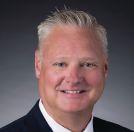
DON GILPIN President & CEO
IFMA
Two months ago, I returned from IFMA’s second annual Executive Summit — a two-day deep dive among subject matter experts and IFMA leaders into an emerging topic that has yet to saturate the FM market — with a sense of urgency about a topic I believe is not discussed enough within the facility management community: cybersecurity and the role of FM.
I had several epiphanies during the summit, asking myself, “Do our members understand how important a role they play in cybersecurity?” The first came when I was made aware of the difference between cybersecurity for IT versus OT. Everyone knows what information technology (IT) means, but do we know what operational technology (OT) means, particularly in terms of securing critical systems from outside sinister forces? IT security protects our computers, networks, programs and data. OT security is responsible for protecting systems, infrastructure and equipment vital to the health and safety of those inside the built environment.
Resulting damage from a security breach within the air-handling system, security system, elevators, food services or water source is not limited to business downtime or machine repair — it could cause harm to or loss of life. I learned of OT cyberattacks in which people were held ransom or suffered from sudden heart failure. Stories that sounded like something out of an overdramatized action movie were real-life case studies. This revelation shocked me to the core.
Another epiphany came when I learned that the insurance industry is going to demand that companies have a thorough risk and security plan in place for both IT and OT before they even consider covering losses due to
cybersecurity breaches. This places FM directly in front of the C-suite, as organizational leaders will demand the same OT security protocols as the insurance industry. The C-suite is beholden to company shareholders, and shareholders will not tolerate lack of insurance protection for these types of attacks, especially when it affects share price.
The progression of facility management is never ending, and we consistently see new layers of responsibilities and proficiencies added to our role. Unfortunately, there are bad actors in our world, and we need to stay more than one step ahead of their attempts to endanger the people who work, play, study, worship and live in our buildings. But in preparing for these expanded accountabilities — learning about the best policies and procedures for mitigating OT systems risk — IFMA members have an advantage over other FMs.
Ongoing discussions among experts in our industry and adjacent sectors concerning trends that impact both the FM and business communities produce valuable resources for our members. Insights from last year’s Executive Summit were summarized in IFMA’s white paper, “Leading Digital Transformation in the Facilities Management Industry.” Epiphanies, hard facts and recommendations from this year’s summit will generate information and best practices for OT cybersecurity, shared through our upcoming events, blogs, YouTube channels, social media network and IFMA’s FMJ.
As your priorities expand, so does our duty to understand the challenges you face and lead efforts to inform, educate and equip you to successfully safeguard the people and assets in your care.

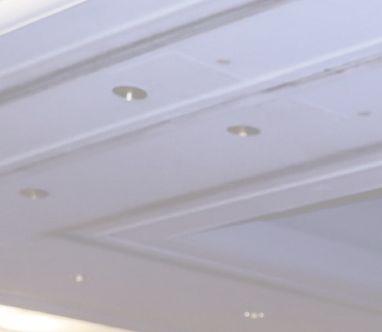

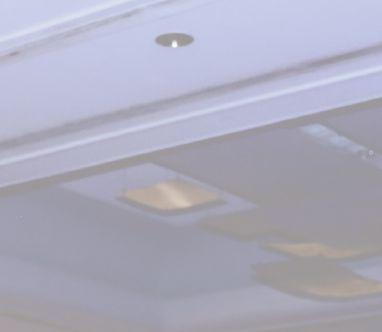



ACCO Brands USA LLC
AIA Contract Documents
AquaSeca Inc.
ARC Facilities
ArchKey Solutions
ATI Restoration
Avive Solutions
C&W Services
Clean-Tech Company
Cobalt Robotics
Datum Tech Solutions
DFS Green
DIRECTAIR®
Embrava
Enchanted Rock Solutions, LLC
Envoy
Eptura
Exposed Floor Design Group LLC
ezCater
Facilio



Flagship Facility Services
First Onsite
FMX
Fresh Products
Fyxt
Gordian
GPRS
Green Building Initiative
HHM Facility Management
IFMA Central
IFMA Foundation
iGUIDE
INMAPZ
ISSA
McCloskey Mechanical Contractors, Inc.
Metro Elevator
Molekule
OfficeSpace Software Inc.
Onyx Renewable Partners L.P. Planon



R&K Solutions, Inc.
Roebbelen Contracting, Inc.
SafeTraces, Inc.
Saltalk
San Francisco Chapter of IFMA
SCLogic
SDI: The Digital Supply Chain Company
Serco
Smart Rain
Swinerton

The Davey Tree Expert Company
The Detection Group
The Millennium Group of Delaware, Inc.
TonDone
U.S. Department of State Bureau of Overseas
Buildings Operations
Vaask

AISLE SIGN FLOOR DECAL
DIRECTAIR®, An OTC Industrial
Technologies Product
OfficeSpace Software Inc.
SCLogic

SDI: The Digital Supply Chain Company
EXPO PRIZE DONATIONS
ARC Facilities
SCLogic
EXPO SCAVENGER HUNT
AquaSeca Inc.
ARC Facilities
Cobalt Robotics
Fresh Products
DFS Green
IFMA Central
Roebbelen Contracting, Inc.
SCLogic
The Davey Tree Expert Company
TonDone

KNOW BEFORE YOU GO (KBYG) DIRECTAIR®
PROFESSIONAL HEADSHOTS
SDI: The Digital Supply Chain Company
WELCOME RECEPTION Planon
In 2021, the total average maintenance cost in Middle Eastern countries was SAR 133.26/SM (US$3.34/SF) – almost double the total reported for North America. This is according to IFMA’s Middle East Operations and Maintenance (O&M) Benchmarking Report, published in April. The first report of its kind for the region, it provides key insights into two major facility categories: janitorial and maintenance. Available in both English and Arabic, the report covers detailed performance benchmarks by several demographic factors including industry sector by facility, use, single buildings versus portfolio sites, age, size and location.
With investments in infrastructure and construction, the Middle East is the fastest-growing facility management market in the world. To address heightened focus on sustainable practices, increased use of integrated and smart building management systems, and to ensure cost and service efficiency, FM professionals can use the data in this report to compare and evaluate facility operations, identify and explain the benefits of O&M improvements, and justify increased resources.
Survey responses represent nearly 3,166 buildings or 115,717 square meters of gross floor area. A majority of the responses came from Saudi Arabia (38 percent), United Arab Emirates (26 percent) and Qatar (20 percent). Comparisons to IFMA’s North America benchmarking report are provided throughout the report, and some percentile charts show best-in-class direction.
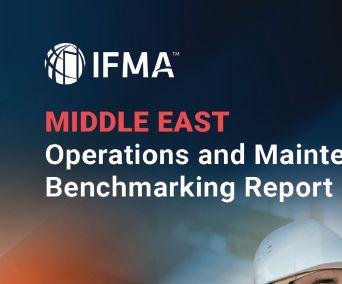
Corporate travel spend in the U.S. and Europe is projected to surpass half of 2019 levels in the first half of 2023, rising to two-thirds by the end of the year. Deloitte’s corporate travel study, “Navigating Toward a New Normal,” foresees full postpandemic recovery to be likely by late next year.
Corporate travel has been slow to return to pre-pandemic levels, but live industry events and international trips are set to account for much of the expected growth in 2023. The top reason reported for international travel involves connecting with clients and prospects: in the U.S., the main drivers are connecting with global industry colleagues at conferences and to build client relationships; in Europe, client project work and sales meetings are the biggest reasons for trips beyond the continent.
One-third of U.S. companies and 4 in 10 European companies say they need to reduce travel per employee by more than 20 percent to meet their 2030 sustainability targets. Trips to






Read the full report




IFMA’s Middle East O&M Benchmarking Report is one of three first-of-its-kind reports the association is releasing in early 2023, focusing on new regions and topics of significance to the industry, such as the state of women in the FM workforce and lessons learned when implementing new FM technology purchases. IFMA members can read the executive summary for free or purchase the full report in IFMA’s bookstore for the most detailed analysis.
company headquarters by relocated employees are on the rise; however, the ability to leverage technology in lieu of trips, ultimately reducing costs, continues to impact business travel’s growth trajectory. According to the study, technology can support nearly every business need travel serves – to some degree. Business leaders are weighing the benefit of in-person interactions, as internal training and team meetings are rated the most replaceable by technology, compared to client rapport building and client acquisition.
Have relevant FM industry news to share?
Submit your news to be considered for inclusion in the Industry News section of the next issue of FMJ. Send us an email at communications@ifma.org.
A viable investment case for near-zero emissions primary steel projects is within reach in Europe and North America, making it possible to put the steel sector on a Paris Agreement-aligned emissions pathway by 2030. This is according to the latest report from the London-based Energy Transitions Commission (ETC), “Unlocking the First Wave of Breakthrough Steel Investments – International Opportunities: United Kingdom, Spain, France and the United States.”
Steel accounts for 7 percent of annual global greenhouse gas emissions and demand is set to rise, as the material is fundamental to building the energy transition – from wind turbines to electric vehicles – and to infrastructure growth in developing economies. Breakthrough iron and steelmaking technologies, centered around using low-carbon hydrogen to produce direct reduced iron, offer a viable solution for decarbonizing primary steel. Progress on breakthrough iron and steel projects in Sweden, Germany and Canada has shown that a compelling case for near-zero emissions primary steel can be made.
In recognition of International Women’s Day in March, IFMA released its “Women in FM: A Global Salary and Compensation Supplementary Report.” Available to read at ifma.org, the report is the most comprehensive and detailed analysis to date on the state of women in facility management globally.
The report provides an overview of the demographics and backgrounds of 3,500 professionals in the facility management field. Salaries by gender are detailed for specific management levels, industry sectors and geographic areas, as well as salary determinants like job scope and years of experience.
The research team found that women FMs are generally more satisfied with their compensation and benefits than men, especially as their careers progress to mid- and senior-level jobs. However, women hold less than one in five senior-level FM jobs, suggesting they are not staying in the FM workforce.
“IFMA’s ‘Women in FM’ report offers critical insights on industry workforce trends in a significant area with little previous information and data. With women representing only 20 percent of the FM workforce globally, improving focus on recruiting and retaining women facility professionals — especially through diverse, equitable and inclusive workplaces — is a high priority for our industry,” said IFMA President and CEO Don Gilpin.
The price of low-carbon electricity for green hydrogen production and direct process power is the crucial market factor in determining the international competitiveness of breakthrough iron or steel.
Major policy developments in the U.S., such as the Inflation Reduction Act, and the EU put a viable investment case within reach in the U.S., Spain and France. The report reveals that practical policy and industry action in four countries can secure a viable investment case in those markets, creating opportunity to grow the pipeline of projects and accelerate existing proposals to final investment decisions.
“Unlocking the First Wave of Breakthrough Steel Investments” was developed as part of a series of roundtables in the U.K., Spain, France and the U.S., convened by the ETC between July 2022 and February 2023 with the support of Breakthrough Energy. The roundtables were open to steel value chain stakeholders, including policymakers and financiers.

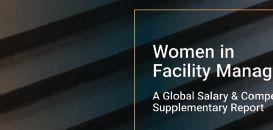

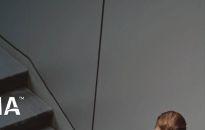



Five professional women with several decades of FM experience and years of service to IFMA and the IFMA Foundation are profiled throughout the report, sharing their accomplishments, key career lessons learned, where they were 10 years into their careers, words of wisdom and personal work/life balance insights.




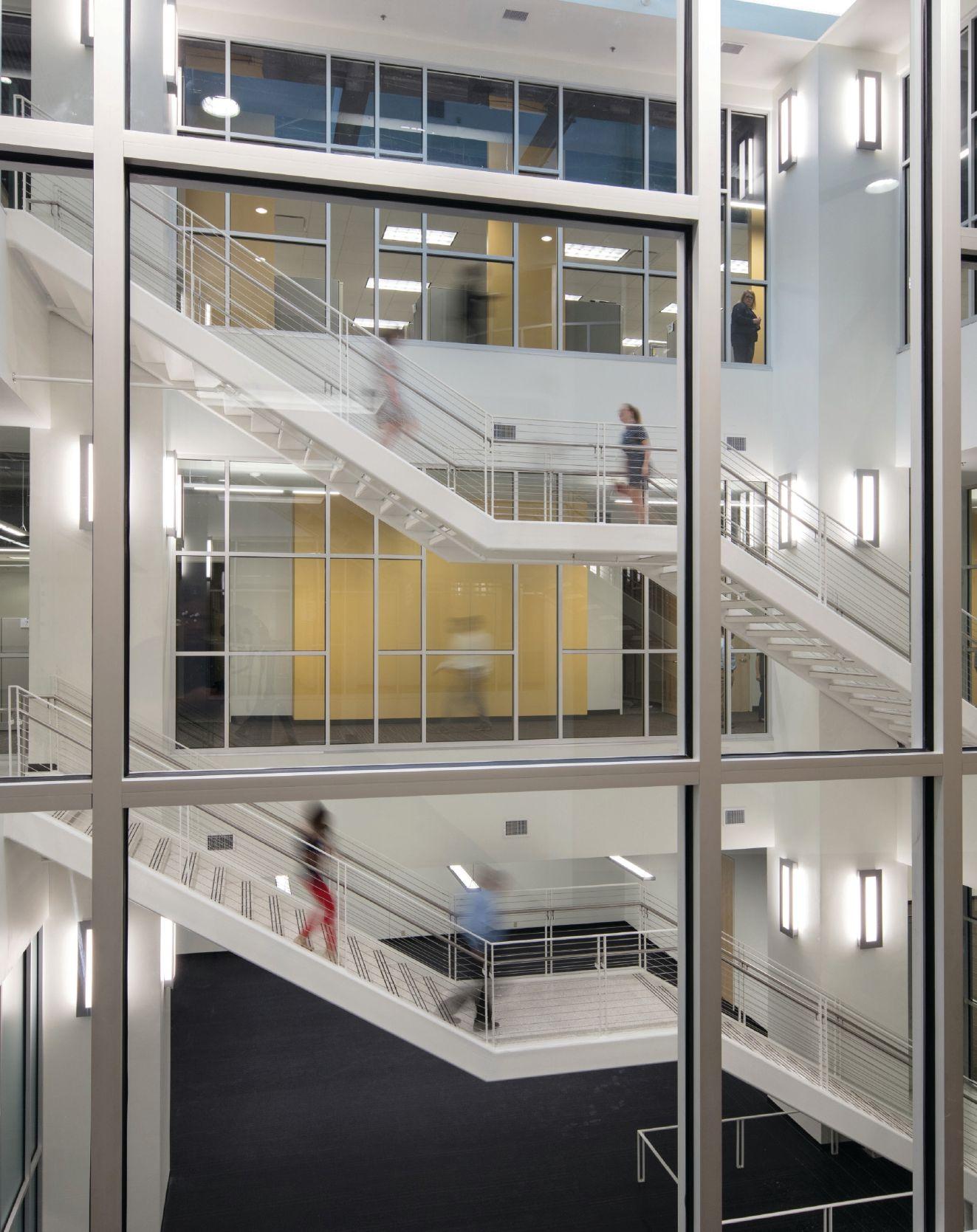
BY MARY MOWAD GUITEAU

For decades, health was simply defined as “the state of being free from illness or injury.” Over the years, it has evolved into much more than that. According to the World Health Organization, health is “a state of complete physical, mental and social well-being, and not merely the absence of disease and infirmity.” Health not only applies to people but to buildings as well. The buildings human beings inhabit can have a direct effect on their health. Those buildings can promote or deter good health. This is clearly evident in the workplace.
There are more than 157 million Americans in the U.S. workforce.
Based on an average 40-hour work week, 50 weeks per year, Americans spend approximately 23 percent of their lifetime at work. Because people spend so much time in workplace environments, those spaces play a critical role in their psychological and physical well-being. According to the Centers for Disease Control and Prevention, well-being is the ability of individuals to address normal stresses, work produc-

INTENT: The Air concept aims to achieve high levels of indoor air quality across a building’s lifetime through diverse strategies that include source elimination or reduction, active and passive building design and operation strategies, and human behavior interventions.

was created to improve the way people live by developing spaces that enhance occupant health and quality of life. Similar to how LEED (Leadership in Energy & Environmental Design) focuses on the environmental impact and sustainability of buildings, the WELL Building Standard focuses on the health and wellness of the inhabitants of the buildings. As a result, the WELL certification has become a respected standard for building owners and facility managers who want to ensure the health and well-being of their occupants.
tively and realize one’s highest potential. It is widely believed that healthy employees are more likely to perform optimally. So how can the workplace play a role in health? That’s a very important question to ask. The answer is resounding. The buildings in which people work can greatly impact the health of the individuals.
WELL Building Institute is a global organization that focuses on promoting healthy environments for people to live, work and play. In 2014, the WELL Building Standard
Precondition Features:
Air quality
Smoke-free environment
Ventilation design
Construction pollution management
Optimizations:
Enhanced air quality
Enhanced ventilation design
Operable windows
Air quality monitoring and awareness
Pollution infiltration management

WELL-certified buildings can lead to improved productivity, reduced absenteeism, and increased satisfaction and happiness among occupants. According to the WELL Building Institute, WELL is a performance-based system for measuring, certifying and monitoring features of the built environment that impact human health and well-being, through 10 core concepts relevant to health: air, water, nourishment, light, movement, thermal comfort, sound, materials, mind and community.
Combustion minimization
Source separation
Air filtration
Enhanced supply air
Microbe and mold control





INTENT: The Water concept covers aspects of the quality, distribution and control of liquid water in a building. It includes features that address the availability and contaminant thresholds of drinking water, as well as features targeting the management of water to avoid damage to building materials and environmental conditions.
Precondition Features:
Water quality indicators
Drinking water quality
Basic water management
Optimizations:
Enhanced water quality
Drinking water quality management
Drinking water promotion
Moisture management
Hygiene support


INTENT: The Light concept promotes exposure to light and aims to create lighting environments that promote visual, mental and biological health.
Precondition Features:
Light exposure
Visual lighting design
Optimizations:
Circadian lighting design
Electric light glare control
Daylight design strategies
Daylight simulation
Visual balance
Electric light quality
Occupant lighting control
INTENT: The Nourishment concept requires the availability of fruits and vegetables and nutritional transparency. It encourages the creation of food environments, where the healthiest choice is the easiest choice.
Precondition Features:
Fruits and vegetables
Nutritional transparency
Optimizations:
Refined ingredients
Food advertising

Artificial ingredients
Portion sizes
Nutrition education
Mindful eating
Special diets
Food preparation

Responsible food sourcing
Food production
Local food environment

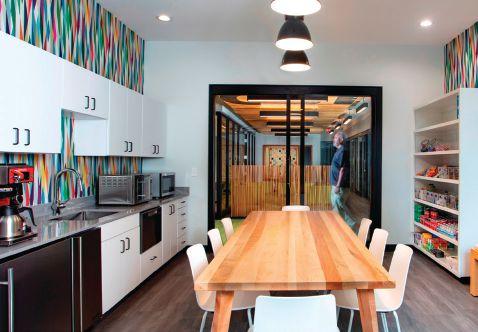


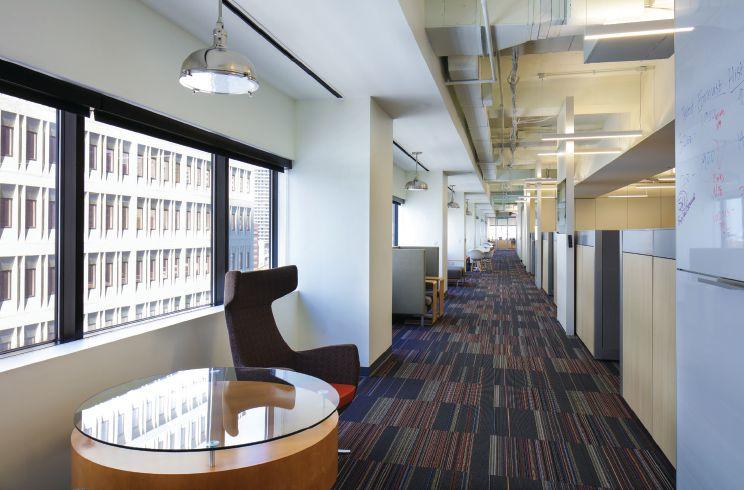


INTENT: The Movement concept promotes physical activity in everyday life through environmental design, policies and programs to ensure that movement opportunities are integrated into the fabric of culture, buildings and communities.
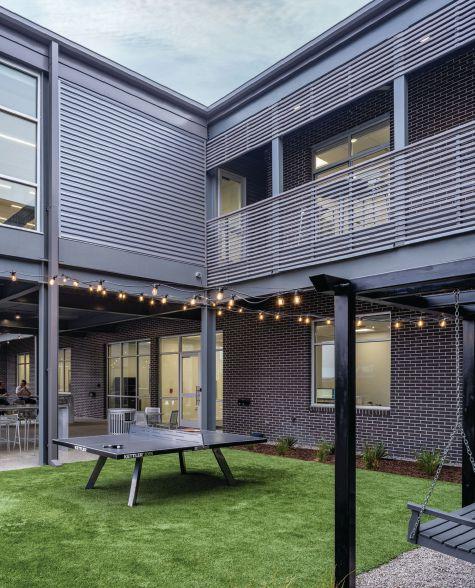
Movement not only benefits employee health and well-being but also helps to promote a more creative and collaborative working environment.







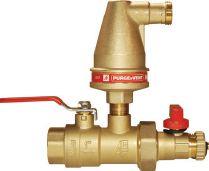




NFPA 13 requires the addition of an air vent on each wet pipe fire sprinkler system that utilizes metallic pipe to help mitigate internal pipe corrosion. PURGEnVENT valves come in a variety of styles. The 7910MAV is a manual air vent that has the smallest footprint on the market. The M7900AAV features an 7900V automatic air vent that releases excess air while the system is in operation. It also includes an isolation valve and purge valve. The purge valve helps air exit the system faster when filling, and it can be used as a vacuum break when draining the system. The vacuum break helps the system drain faster and protects gaskets from being dislodged on other system components when draining. The M7930ECA includes a pipe cap for easy installation, and the M7950ILV features an air separation chamber that installs into the main branch line for applications with difficult to reach system high-points.









INTENT: The Thermal Comfort concept aims to promote human productivity and provide a maximum level of thermal comfort among all building users through improved HVAC system design and control and by meeting individual thermal preferences.
Precondition Features:
Thermal performance
Optimizations:
Verified thermal comfort
Thermal zoning
Individual thermal comfort
Radiant thermal comfort
Thermal comfort monitoring
Humidity control








INTENT: The Sound concept aims to bolster occupant health and well-being through the identification and mitigation of acoustical comfort parameters that shape occupant experiences in the built environment.
Precondition Features:
Sound mapping

Optimizations:
Maximum noise levels
Sound barriers
Reverberation time

Sound reducing surfaces
Minimum background sound
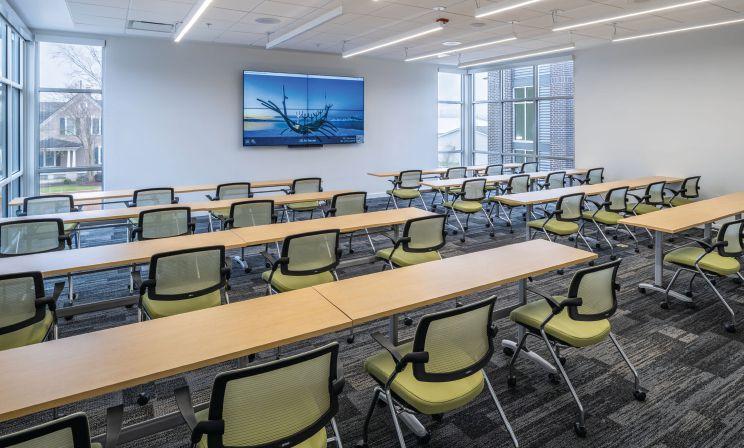










INTENT: The Materials concept aims to reduce human exposure, whether direct or through environmental contamination, to chemicals that may impact health during the construction, remodeling, furnishing and operation of buildings.
Precondition Features:
Material restrictions
Interior hazardous materials management
CCA and lead management
Optimizations:
Site remediation
Enhanced material restrictions
VOC restrictions
Materials transparency
Materials optimization
Waste management
Pest management and pesticide use
Cleaning products and protocols

INTENT: The Community concept aims to support access to essential health care, build a culture of health that accommodates diverse population needs and establish an inclusive, engaged occupant community.
Precondition Features:
Health and well-being promotion
Integrative design
Emergency preparedness
Occupant survey
Optimizations:
Enhanced occupant survey
Health services and benefits
Enhanced health and well-being
promotion
New parent support
New mother support
Family support
Civic engagement
Diversity and inclusion
Accessibility and universal design
Emergency resources

INTENT: The Mind concept promotes mental health through policy, program and and design strategies that seek to address the diverse factors that influence cognitive and




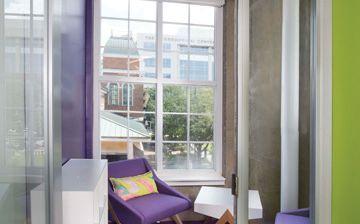

Mental health education
Restorative opportunities
Restorative spaces
Restorative programming
Enhanced access to nature
Tobacco cessation
Substance use services
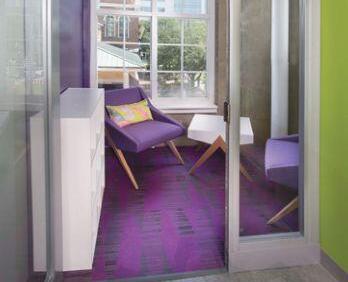
Creating a healthy workplace environment is not just about improving the physical health of employees, but also their mental and social well-being. The WELL concepts illustrate how workplaces can create an environment that enhances employee health, well-being and performance. For more detailed information on the WELL concepts and requirements for certification, visit wellcertified.com.




The WELL concepts provide a roadmap for businesses to create healthy workplaces that benefit their employees, visitors and the environment. By understanding and implementing these concepts, businesses can improve the health, well-being and performance of their employees, ultimately leading to a more productive and successful business. Creating a healthy workplace environment can lead to complete physical, mental and social well-being ... a healthy workplace indeed. FMJ









Mary MowadGuiteau is the director of interior design at Holly & Smith Architects, APAC, which has offices in Hammond, New Orleans, and Lafayette, Louisiana. A graduate of Louisiana State University, she has more than 26 years of commercial design experience, working with owners, facility managers, users, developers and real estate companies. She is a member of IFMA's Baton Rouge chapter.


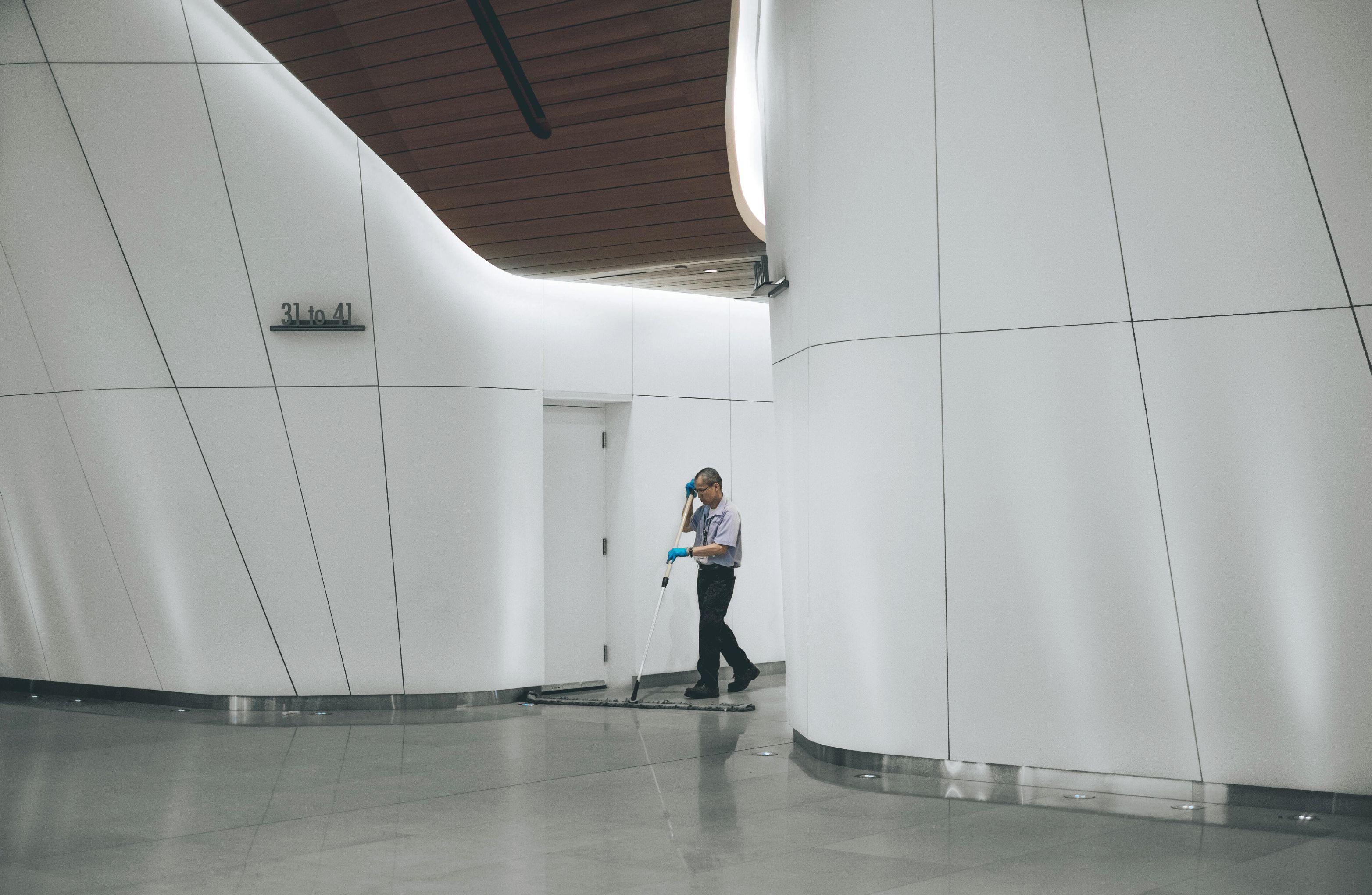
Janitorial supplies are a big part of our business too.

At Staples, we have the experience and expertise to keep your facilities clean and safe. We have over 5000 professional-grade facilities and cleaning products in stock every day. And with next day delivery available to 98% of the US, you get what you need when you need it. Our experts can help you solve tough challenges too. ey average over 15 years of facilities experience so you can be sure they understand your needs. At Staples, we’re experts in the facilities space. Let us prove it to you.
BY JOHN C. WANG

Just like workplaces, campuses are in the process of digital transformation. It is an exciting time not just for students, but for campus facility managers too. Though educational institutions may traditionally be slow on the uptake of technology and new systems, that momentum is accelerating.
Higher education leaders are acutely aware of students’ ever-rising expectations: they want a campus that embraces new systems and technologies to facilitate seamless movement throughout campuses, or access to the resources on a needs basis — all while being more collaborative and safer.
Campus FMs are focusing on digital transformation to reshape teaching, learning and the campus. With the success that many future-facing private organizations have achieved post-pandemic, can this success be replicated within the educational environment?
A good degree of executing plans for digital transformation falls to campus FMs. With new technologies such as smart IoT, analytics, automation — and of course a mobile-first approach for the most tech-enabled generation yet — it is an exciting time for this realm of FM.
Trends in education and what it means for campus FMs
Education is becoming increasingly accessible to a greater range of learners. According to Times Higher Education, there are now six types of learners:
• the classic school-learner,
• those who want to enter regulated professions,
• those with a passion for the arts,
ing necessary in terms of managing who is allowed on the premises in increasingly complex learning settings often spread out across multiple locations. Typically sprawling across multiple buildings and premises, it makes adopting a suitable and all-encompassing access control system challenging. Campus cards initially served as ID cards, verified by eye, to grant access to campuses and other services such as borrowing library materials, but this can be tricky as campuses grow.

Though online learning became widespread, 71% of respondents called campus life “important” to them and valued the in-person experience when learning.
• postgraduates developing specialized expertise,
• working professionals who are upskilling, and
• returning students who are looking to conquer the second time around.
This implies the need for a more agile digital transformation to embrace the challenge of designing and delivering new forms of higher education in an appropriately tech-enabled environment, built around the learning needs of students with varying goals and objectives.
The campus must also be a safer and securer place to learn. As this need for enhanced campus security grows, it marks a large undertak-
It has now expanded well beyond that; access cards are not only for identification, but also function as a universal key for access into all areas connected to a school, be it classrooms, the gym or the lab. It then goes further to embrace on-campus purchases, access to specialized learning areas or tools such as printers. It necessitates a huge investment, and particularly for campuses still using legacy systems.
Lastly, student expectations have increased more than ever before, with their notions of education thoroughly uprooted because of the pandemic. A recent study by KPMG highlighted this with some insights into students’ changed mindsets. Though online learning became widespread, 71 percent of respondents called campus life “important” to them and valued the in-person experience when learning.
Furthermore, there is near unanimous agreement for the need for integrated digital systems. Eighty percent wanted an educational experience that matched their digital lifestyle, while 88 percent want the post-secondary institution experience to be digitally accessible online or via mobile phone.
Be it going to university or starting a new job, new starters still typically find themselves handed an access card. Seemingly a cost-effective way of managing access control on or off campus, when considering other factors, it quickly becomes a less appealing option. As of 2016, 19 percent of the student body loses a card every year, or
3.8 million cards. That is an awful lot of missing cards, and with a price tag of around US$5 to $50 each, the average cost of replacing a card is around US$22. That adds up to more than US$80 million a year. Add on top of that the infrastructure necessary for programming cards, card printing hardware, and the risk lost or stolen cards can cause, the case for bringing in technology to digitalize the process becomes clear.
Digital wallets — including those of both Apple and Android phones — are helping enable that digital transition and are widely adopted on campuses. They allow students to store their student ID cards quickly and conveniently on their mobile phones and devices. Then, they need to simply tap their phone against an NFC-enabled reader to gain access to the campus.
Fully adopting digitalized student ID cards is just half the story; there must be relevant card readers placed at key locations to allow access into controlled areas. These can typically present themselves with a higher up-front cost; however, it also offers an opportunity for extracting additional value. Besides having integrated NFC readers to ensure they are campus ready, readers with integrated screens offer the opportunity for unlocking more value. While the initial upfront cost may be higher, compared to the endless cycle of replacing lost cards and those that have simply degraded and failed over time, the overall cost savings becomes evident.
When used in tandem with integrated security features of smart phones such as face or touch ID, or even a simple four-digit PIN to access the digital wallet, they quickly reveal themselves as a highly effective way of maintaining enhanced security on campus. This also does away with much of the risk of lost and stolen cards, as well as the transference of cards between bad actors who wish to enter the campus for nefarious reasons.
However, card readers can also present security risks, as data is often an afterthought with these devices, allowing easy access to campus systems. For campus FMs, to maintain a securer learning environment — both on and offline — card readers must be of the same security standards as that of enterprises, security-centric private businesses and government institutions to help shield against data breaches.
The campus is the perfect growth medium for unleashing technology and staging a successful digital transformation. Dubbed “digital natives,” campuses are now largely filled with Gen Zers who were born with their phones in their hands. Mobile first is their way of life. The campus should be no different in their eyes. They want tech-enabled classrooms, to check-in for class with their phones, and pay for lunch or printing all with their phones.
To appeal to this generation, campus FMs must weave technology
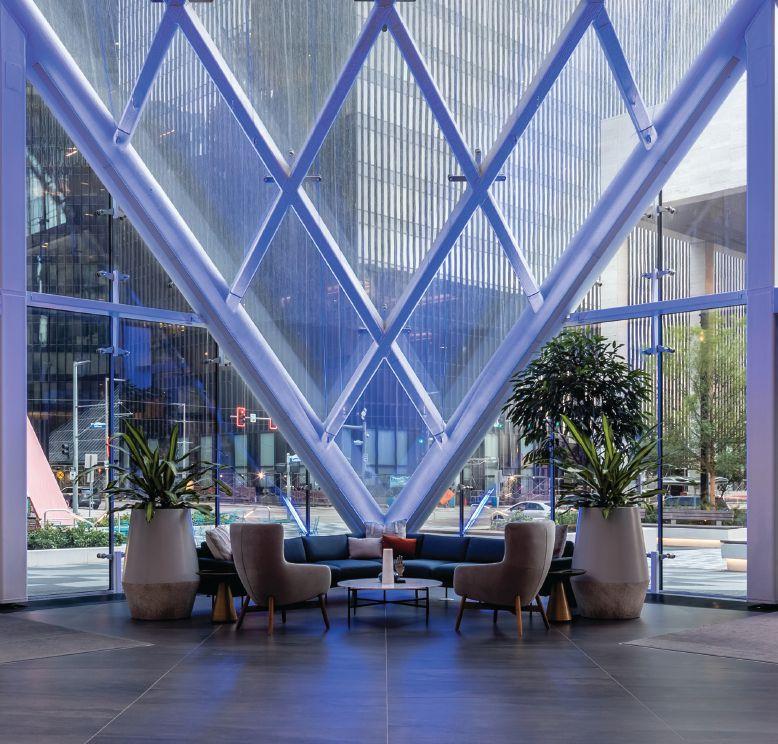

throughout the campus. This adoption improves security. Attendance tracking is more accurate, readers with integrated screens can provide alerts and important notifications when students enter the campus, and they can help with electronic payments, doing away with cash and potentially reducing theft. Meanwhile, access can be handled on a needs basis by campus administrators and managers restricting access to sensitive campus areas, and easily rescinded in the event of emergency situations.
It is still common to see attendance taken by pen and paper, but deploying tech to automate attendance tracking is a process every educational institution should be prioritizing for several reasons:
• Identifying at-risk students: by monitoring attendance, students who may be struggling or at risk of falling behind in their studies can be flagged to educators. Early intervention can help these students get on track and avoid more significant problems.
• Funding and accreditation: in some cases, funding and accreditation may be tied to attendance. For example, schools that receive government funding may be required to maintain a

certain level of attendance to remain eligible for funding. Attendance data is a source of truth that can be used to support this.
• On-campus safety and security: providing a way for educators and campus FMs to know who is present on campus at any given time. In an emergency, such as a fire or natural disaster, attendance records can help ensure all students are accounted for and safely evacuated.

All of our architectural products serve a distinct, functional purpose–from louvers to wall coverings to every detail we perfect–like our entrance mats and grids in the JPMorgan Chase Tower lobby. At the same time, we never lose sight of the effect a building has on people. The inspiration it provides. The satisfaction it brings. For 70 years, we’ve based our success on the idea that putting people first is the foundation for building better buildings. And, for 70 years, our partners have depended on us for architectural product solutions. Are you ready to think beyond the building with us?
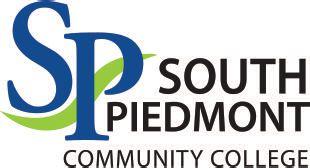
South Piedmont Community College (SPCC) in South Carolina USA was initially looking for an effective attendance tracking system. As there is a growing need for accountability across the organization, so too does the need grow for a tech-based solution that can support highly accurate, down-to-the-second attendance tracking. As the college’s funding is pinned to student numbers and attendance, the need for accurate and unequivocal proof is essential to secure investment and maintain high standards of teaching.
As the project progressed, it quickly became evident there were more possibilities. By adopting premium readers with integrated screens, it offered additional value such as classroom information and schedules. The solution did not stop there as more opportunities revealed themselves, such as physical access control, integration of ID systems with copiers, printers and even vending machines. Through this partnership, the solution was expanded and become more comprehensive, covering previously siloed systems.
For both staff and students, there are a myriad of benefits. By managing room access control, administrators can grant access permissions based on user needs. In contrast to before, staff would carry hefty sets of keys, with a unique key for each lock.
When rolling out the system, three goals were set: an increase in student access, an increase in staff efficiency and improved campus safety. Before deployment, tutors took registrations manually and then entered the system. With the process now automated, tutors could focus on teaching rather than managing attendance at the start of every class. Admin time was also reduced with attendance no longer being manually entered into the attendance system.
With the new system in place, safety has also improved. Attendance is relayed back to the central system once every five minutes. Should an emergency occur or a lockdown necessary, students can be easily found within the last five minutes.
Campuses are increasingly adopting digital technology to enhance security and provide a more modern, collaborative environment for students. With a focus on digital transformation, campus leaders are using technology to transform on-campus safety. But it goes beyond just that, it is reshaping teaching, learning and campus infrastructure. As the number and variety of students attending higher education increases, educational institutions must design and deliver education in a tech-enabled environment. And by digitalizing these processes, the right equipment and technology offers plentiful opportunities for added value that goes beyond just security to secure a successful digital transformation. FMJ

John C.Wang is co-founder and CEO of IAdea Corporation. Passionate about the current and future development of the digital signage industry, Wang co-founded the web-based Signage Business Group at the World Wide Web Consortium. He serves as the vice chair of the Digital Solutions Multimedia Asia (DSMA), a non-profit industry group comprising of over 200 member companies throughout Asia. He received his master’s degree in computer science from the National Taiwan University.
REFERENCES
timeshighereducation.com/hub/pa-consulting/p/six-types-modern-studentreflect-how-universities-can-build-future kpmg.com/ca/en/home/media/press-releases/2021/10/pandemic-changespost-secondary-student-expectations.html





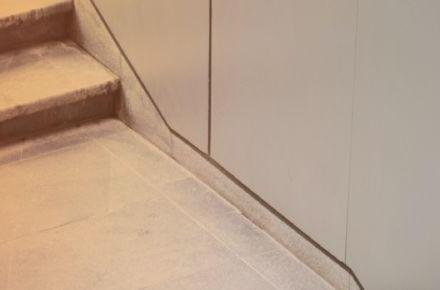











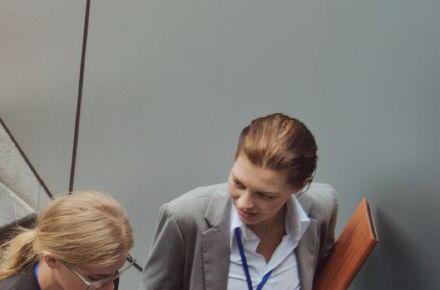







The majority of women currently participate in the labor force, but only 20% of the FM workforce is female, with little change to this gender mix over the past decade. This comprehensive and detailed analysis on the state of women in FM throughout the world provides salary outlooks for recruitment and retention, and other key information for DEI efforts within FM. Read now to learn more.



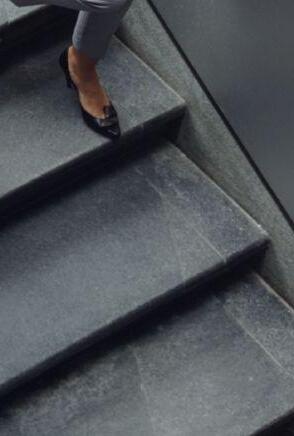

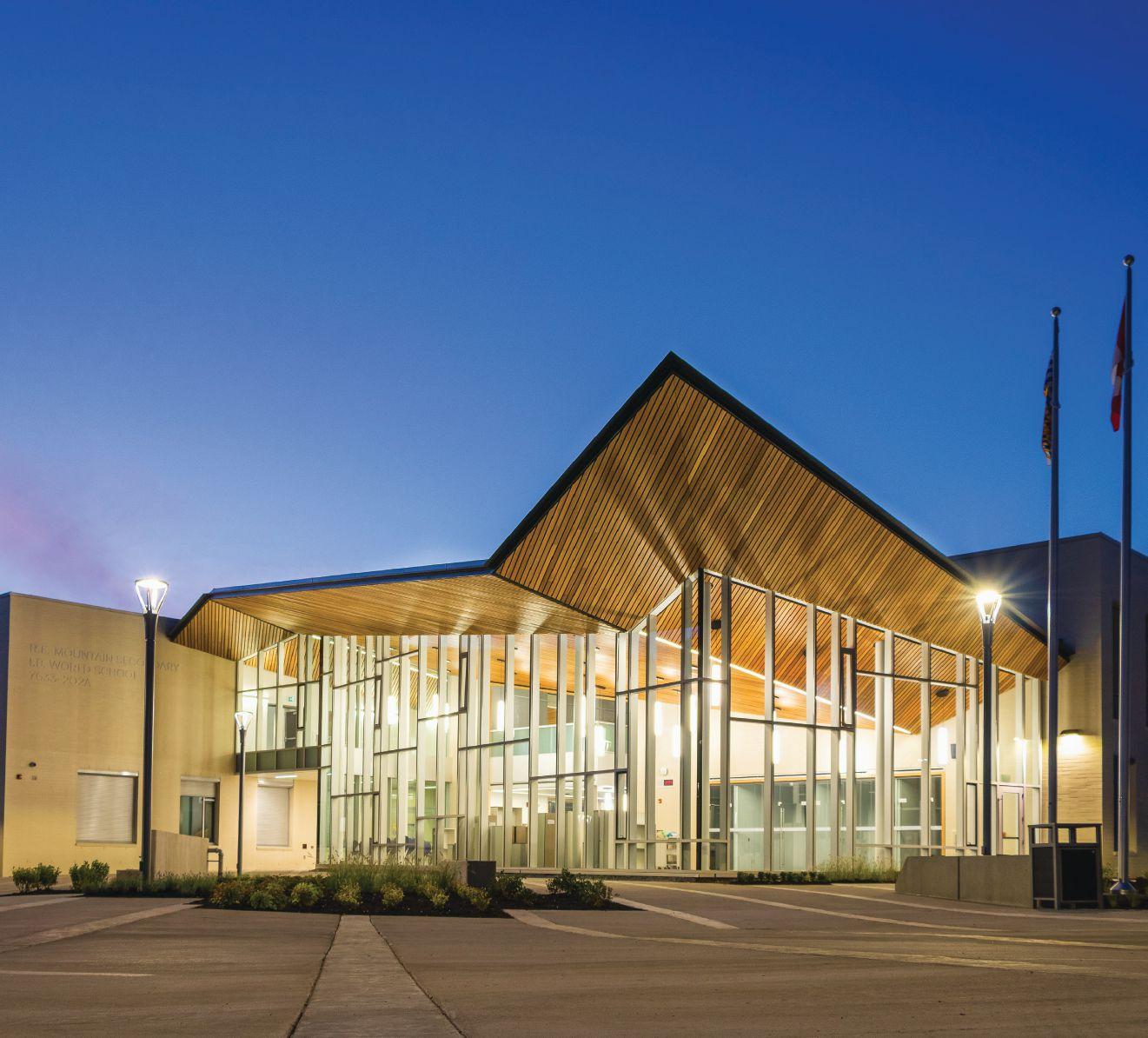

BY NEAL DUCKWORTH
Shooting incidents at a business, school, house of worship or other public area are becoming all too common. Facility managers must take both responsibility and action to prepare for and help their occupants survive such an event. If a facility has not recently had active shooter preparation and survival training, ask “Why not?”
Depending on the size of a facility, some organizations may have separate roles for facilities, security, training or emergency response. However, FM’s role touches each of these areas, providing FMs with a voice of influence that must be heard.
Too many organizations rely on the U.S. Department of Homeland Security-recommended concepts of run, hide and fight; but FMs should ask for, or even develop their own, practical exercises for employees. This should not focus on the law enforcement response, but a simple and practical exercise such as integrating a walk-through of facilities and discussing how run, hide and/ or fight can be executed in different areas of building(s), parking lots and grounds.
Active shooter training should expand beyond run, hide and fight. Occupants need to know where to go and when for their best chance of surviving an incident.
Considerations for Effectively Disseminating Mass Notifications in Health Care Settings

It is not enough to say “Run!” People need to know when and where to go. If they do not know where the attacker is, then they should find a place to hide so they do not encounter them while trying to escape. Employees must be familiar enough with the facility to know where the closest exits and hiding places are located. If in a basement, a parking garage or on a roof, the stairs are often a risk, as the shooter might be there. If on the second floor, it might be well worth considering breaking out a window and jumping. A twisted ankle or broken leg is better than being shot. Staff
should also understand that running from an active shooter is different from a fire drill. It is not enough to run to the evacuation rally point and stop. Occupants must run until they are safe, then call the authorities.

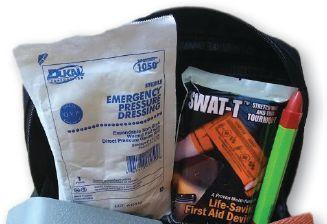
THOUGHTS FOR FMS: Planning for emergencies must always consider visitors and new employees who may be unfamiliar with the facility. Signage is a critical asset to identify exits and fire escapes; shelterin-place rooms or areas; first aid kits and even window glass-breakers. FMs should also ensure that some type of notification system or procedures are in place. Some facilities, such as hospitals, have implemented the announcement of “Code Silver” to warn of an active shooter, but that provides no warning for patients and visitors who are unfamiliar with hospital codes. A 2022 research study in the U.S. state of Georgia found that only 44 percent of the respondents correctly identified the hospital codes for emergencies. During active shooter, fire or other events, clear language is the key: “This is not a drill! Active shooter is in the building on the First floor, East Wing. Implement personnel safety procedures. Law enforcement is on the way.” If a facility utilizes codes to alert the staff and responders, consider other options to increase these time critical warnings.

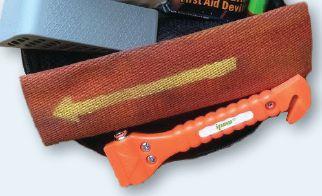
If employees determine that they cannot run to escape, they must hide. However, it is not enough to just hide. They need to be able to protect themselves from view and from being injured. The most effective way to do this is to lock or barricade themselves into a room, such as a bathroom, closet, kitchen or conference room. But how is this done? Some doors open inward, some outward, some do not have locks. The first time people consider barricading themselves into a room should not be when they need to save their lives. Common practices to secure doors include using belts, purse straps, computer cables and doorstops. It is also best to keep piling things up at the
door to reduce the force of any bullets fired through the door as they will hit different items before hitting a person.
How does a person hide in a parking lot or outside in a park? In January 2023, the U.S. Secret Service produced an analysis of Mass Attacks in Public Spaces report from 2016-2020 and found that 60 of 173 shootings were in outdoor open spaces. People need to understand the difference between cover (protection from bullets and sight) and concealment (protection from just sight), as well as the benefit of hiding behind and beside the front tires of a vehicle where protection from a vehicle’s engine is the best.
THOUGHTS FOR FMS: As FMs become more aware of best practices to survive an active shooter incident, they should determine the best ways to support facility personnel. When rooms are identified as ideal for hiding, consider purchasing and staging additional items that can assist employees during an emergency, such as first aid supplies, a flashlight, pieces of rope, door stops, glass-breaking tools or emergency rope/chain ladders to assist in escapes. While open concept design has increased in recent years, this also provides less protection from persons shooting in the building. The U.S. General Services Administration Public Buildings Service Site Security Design Guide notes that the use of sculptures, art and benches can serve as protective measures, and properly selected items can enhance protection both inside and outside of facilities. FMs may also wish to note that glass-walled conference rooms, while aesthetically pleasing, provide nearly no protection from observation or bullets.

No one wants to have to fight for their life. But if the time ever comes, it helps to have thought about what could be used as a weapon if one is required. Anything that can be thrown at an attacker distracts them — hot coffee, books, a trash can, a keyboard — the goal is to disrupt their thoughts and
actions and follow up with hitting and kicking until the attacker is disabled and separated from their weapons. During a shooting at a Colorado Springs night club where five people were killed in 2022, two patrons fought back and stopped the shooter, saving countless lives.
While difficult for most people to fathom, training people to fight for their lives must address this issue and point out everyday items that can help cause chaos and disrupt an attacker. This training should stress the importance of working together to overpower an attacker.
When law enforcement officers first arrive, their job is to eliminate the threat. They will often proceed past innocent people and victims to search for the shooter. Employees must realize this and remember to keep their hands spread and open,
The above options pertain to personal survival choices, but it is worth noting that some personnel may have a job requirement or even a moral responsibility to protect those who cannot protect themselves. Consider employees who work in a hospital, elder-care facility, school or daycare where patients or children are endangered. When a facility has extensive amounts of non-employees who will need safeguarding, preparing for the “Hide” and the ability to barricade doors is even more critical. When a shooting occurred in the Marjory Stoneman Douglas High School in Florida, a teacher pulled students out of the hallway and locked them in her classroom, then moved them further away into a closet, saving 20 lives, including her own.
not to rush law enforcement officers and to respond to their commands. If they are directed to leave, and medical personnel are not there, they should attempt to assist the injured in escaping.
FMs must be prepared to provide first responders with critical information support such as access to video camera feeds, facility maps, access keys and cards, and hand-held radios. An annual walk-through with local law enforcement officers would be of great benefit as well.
As part of training for employees, these vignettes drive home best practices and lessons learned that have helped others survive. Consider joining the more the 2.4 million people who have been trained to Stop the Bleed, a U.S. grassroots effort to educate people on using tourniquets, bandages and direct pressure to stop the bleeding and save lives until medical personnel can arrive.
A facilitated discussion while walking around the buildings and grounds and sharing different scenarios will point out, and make everyone consider, the best ways to run, hide and/or fight. This can be the difference between life and death should an active shooter event occur. Do not wait! FMJ
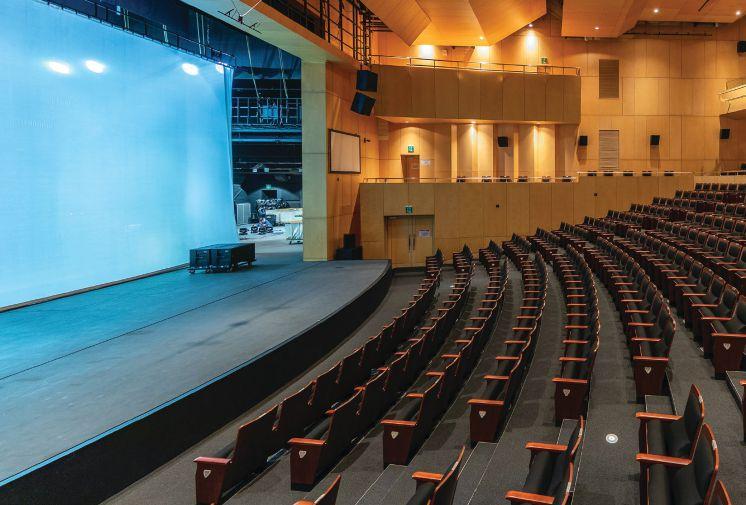

Neal Duckworth is a physical security advisor to the U.S. government and a security consultant for D2 Northeast Solutions. He retired as the head of Marine Corps Counterintelligence & Human Intelligence Branch and frequently speaks and writes on security, espionage and leadership. He is also an adjunct professor at Lasell University near Boston, Massachusetts, USA, where he teaches terrorism and homeland security.
vice.com/en/article/d35vdm/i-jumped-out-awindow-to-escape-the-gunman-at-virginia-tech kktv.com/2022/11/21/club-q-shooting-witnesssays-he-hid-dressing-room-save-his-life secretservice.gov/newsroom/releases/2023/01/ new-secret-service-research-examines-first-timefive-years-mass-violence wbdg.org/FFC/GSA/site_security_dg.pdf newsweek.com/colorado-springs-lgbtq-clubshooting-live-updates-least-5-dead-1761080 cnn.com/2018/02/15/us/teacher-hid-studentsflorida-shooting-trnd/index.html stopthebleed.org


IFMA's World Workplace® is the largest, most highly acclaimed facility management conference in the world.

Established in 1995, World Workplace is the original forum for groundbreaking discussions on facility management and the wider built environment.
It's where all workplace professionals come to discover innovative FM technologies, build valuable relationships and sharpen essential skills.

Stay ahead in an increasingly FM-led world
Operations. Experience. Footprint. Facility management is leading initiatives in the areas of decarbonization, ESG reporting, workplace amenities, hybrid work, digitizing operations and assets, and space optimization. Build your skills in these and other areas emerging as top priorities for on the pulse of the future of the built world.




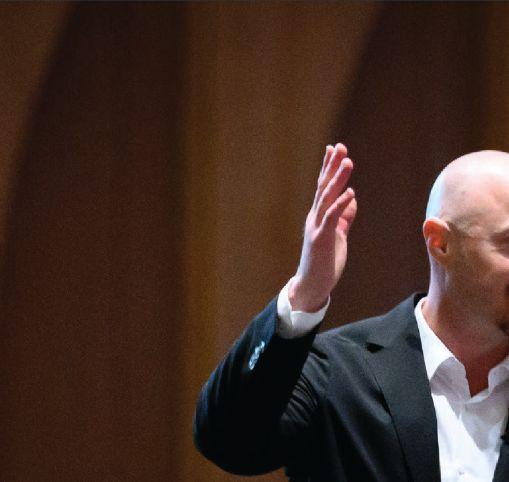


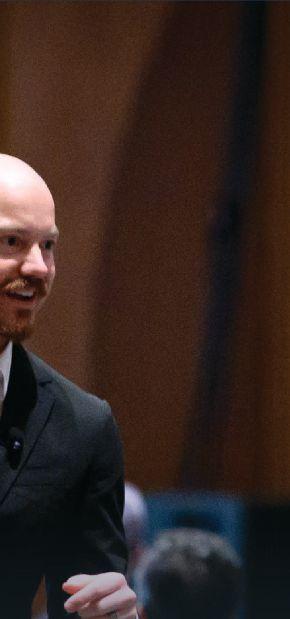
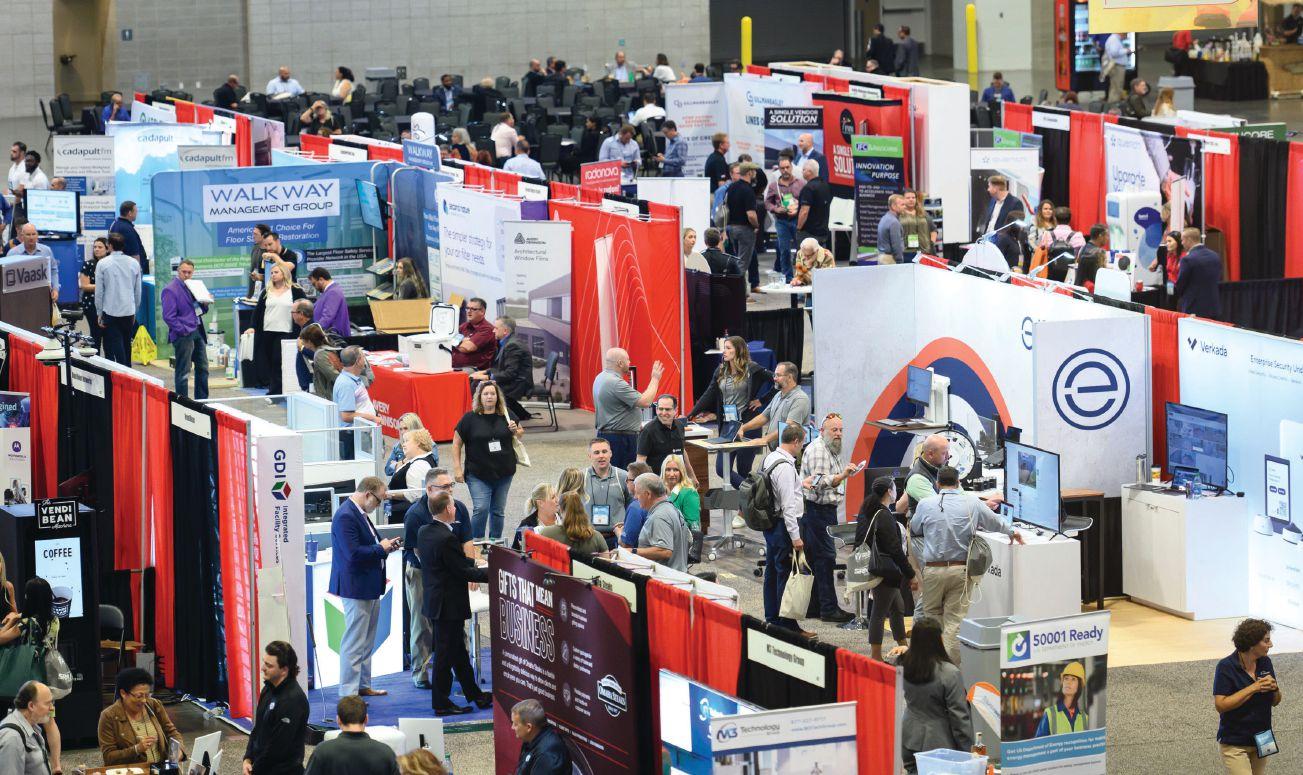

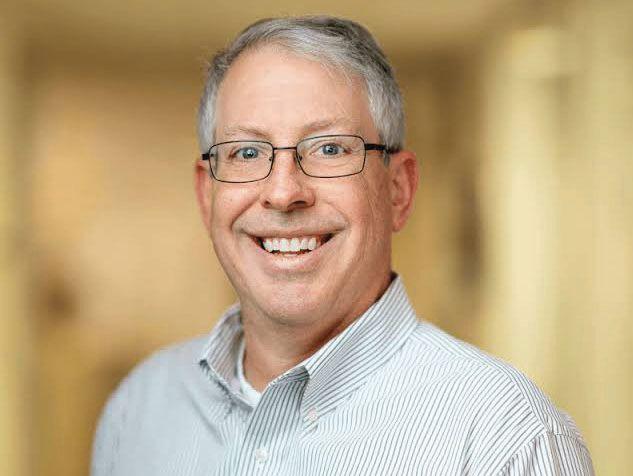
George Westerman Plenary Speaker
Senior Lecturer at the MIT Sloan School of Management and Founder of the Global Opportunity Initiative


The expo is your chance to connect and network with the global facility management community, explore the latest innovations and discover solutions for your biggest questions.
Visit the IFMA Central booth and learn about opportunities to build your career and get ahead of the FM industry.
View the list of solution providers to date attending this year's World Workplace.


See what it takes to manage, maintain and protect unique
net zero energy facility in the entire University of Colorado system to getting insights on how large power operations are conducted, facility tours give you an inside look at systems, the-art upgrades.


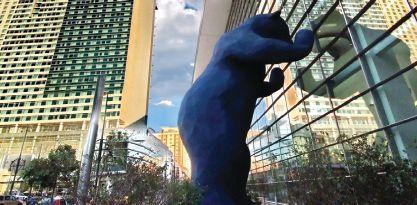











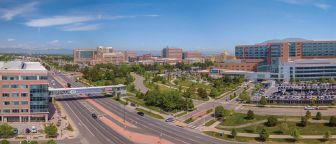








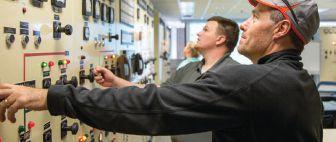










A&A
ABM
Accruent
ActivePure
AdvantaClean
AGF Manufacturing, Inc.
AHI FACILITY SERVICES, INC.
Airthings
AkitaBox
Alertus Technologies
Amtech Solutions Incorporated
APCO Signs
Applied Technical Services
ARC Facilities
archSCAN, LLC
Armstrong Ceiling and Wall Solutions
ATI Restoration
Autodesk
Avery Dennison Architectural
Films Graphics Divisi
Avian Flyaway Inc.
Axon
AyoroaSimmons
BELFOR Property Restoration
Bevi
BFC Solutions
Biamp Systems
Blackmon Mooring & BMS CAT
Blink Charging
BluSky Restoration Contractors, LLC
Consolidated Fire Protection
Construction Specialties
CORT
D. C. Taylor
Dauphin




HOT/SHOT Infrared
Inspections, Inc.
IA Interior Architects
iCheck - Canadian National
Facility Maintenance and Repair
IFMA Central
Royal Cup Coffee
R-Zero Systems
Safe Facility Services
SafeTraces, Inc.
San Antonio Chapter of IFMA
SavATree
IFMA Foundation
BrickImaging
Brightly Software
Brown & Root Industrial Services
Building Maintenance Optimization Consultants, Inc.
C&W Services
Cartegraph, An OpenGov Company
Cascade Energy Caterpillar
CBRE
CCS Facility Services
Cleaning Services Group, Inc.
Clean-Tech Company
Clockworks Analytics
Command7
Commercial Fire
Commercial Restoration Company
Denver Chapter of IFMA
Disruptive Technologies
Door Stud LLC
eCIFM Solutions Inc.
EDI
Eighth Day Design, Inc
Embrava
EMCOR Facilities Services
Engineered Corrosion Solutions
Envoy Solutions
Eptura
Ergotron
ESFM
EthoSource, LLC
Evac Chair North America LLC
ezCater
Facility Engineering
Associates PC
Facility Plus Farnsworth Group
FELLOWES
First Onsite

Flagship Facility Services
FlexCart
Infogrid
InMapz
Inpro Corporation
Instant Power Corp.
Integrated Building Solutions
Interplay Learning
Iron Mountain
Jacobs
JFC & Associates
JLL Technologies
JRC Nationwide Construction
KBS
Kee Safety, Inc.
Key Systems Inc
Lencore Acoustics LLC
LogiSon Acoustic Network
Marking Services, Inc.
Marsden Services L.L.C
Matterport
Metrans, LLC
METech Recycling Inc
MilliCare Floor & Surface Care
MPW
NEBB
New Pig Corporation
FlowPath Facilities
FM:Systems

Management Software
FMX
FotoFinish
FreeAxez LLC
Fresh Coat Painters
FSR, Inc.
GardaWorld
GDI Integrated Facility Services
Geospatial Analytics Inc
GOJO Industries
Gordian
Green Building Initiative
Harvard Maintenance
Hawk Research Labs
Haws Corporation
Herc Rentals Inc.
Hilldrup Companies Inc.
SCLogic
Second Nature Brands
Securitas Security Services USA, Inc.
Serco
ServiceMaster Recovery Management
Servpro Industries, Inc
Shure Incorporated
Skudo LLC
Skyfold
Smart Inspect
Smart Rain
Soft dB
SourceAmerica
Stop the Bleed
Staples Facility Solutions
StructureTec Group
Sunbelt Rentals
Tango
Tarkett

Tecta America Corporation
Tegrete

Newmark
North American Rescue, LLC
Nuvolo
OMA
Omaha Steaks
Pegasus Facility Services
Planon
PlanRadar
Potter Electric Signal Company
Powering America (NECA and
Precision Concrete Cutting
PRIDE Industries
Prime Power Services. Inc.
Prodigy Commercial HVAC
Republic Services
Restoration Management Company
Rocky Mountain Construction Company
Terracon Consultants, Inc.
The Budd Group
The Davey Tree Expert Company
TMA Systems LLC
Tradesmen International, LLC
Bureau of Overseas
Buildings Operations
Vaask
Vector Solutions
Verkada
Versare

Versteel
Viega
VLogic Systems
Western Specialty Contractors
Xcluder - Global Material Technologies
XPEL, Inc.
Yardi Systems





ATTENDEE BADGE PREVIEW
Matterport
EDUCATION ARENA CLASSROOM
Planon
Autodesk
EDUCATION ARENA PRESENTATIONS

Accruent
ActivePure
AkitaBox
Bevi CBRE
Eptura
MilliCare Floor & Surface Care
Nuvolo
Planon
SafeTraces, Inc.
Tango Vaask
EXPO PRIZE DONATIONS
ARC Facilities
Caterpillar
Clockworks Analytics
Dauphin
Green Building Initiative
JLL Technologies
Lencore Acoustics LLC
Marsden Services L.L.C

EXPO SCAVENGER HUNT
Accruent
AkitaBox
ARC Facilities
CORT LLC
EMCOR Facilities Services
Eptura FreeAxez LLC

Lencore Acoustics LLC
LogiSon Acoustic Network Matterport
R-Zero Systems
SCLogic
Servpro Industries, Inc
Tango Tecta America Corporation
OPENING KEYNOTE
PROFESSIONAL HEADSHOTS
JLL Technologies
THURSDAY CASH DROPS
Pegasus Facility Services




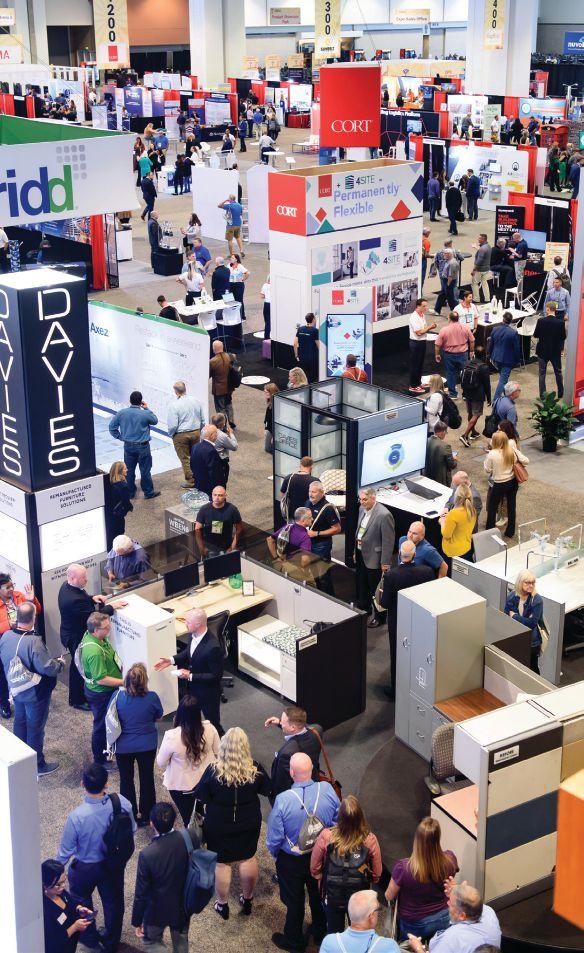












BY JIM LANE








g f y g


Like any organization, facility management services teams are only as strong as their weakest link. For too many businesses, however, that link seems weaker than ever — or missing altogether. Why? It all comes down to talent, or the lack thereof.









There are more open positions in trades like HVAC, plumbing an d electrical, than there are people to fill them. For instance, recent statistics show that 39 percent of HVAC technician jobs are unfilled. Add to that the approximately 20,000 people leaving these jobs each year due to retirement or career change, and the industry may be looking at a shortage of 53 percent of open jobs by 2025.

This shortage of tradespeople is exacerbated by the fact that the talent some organizations have, and the candidates they find, are not always well-enough suited to delivering the high-quality services necessary for successful facility management.
This type of industry risk has tremendous negative impacts on everything from equipment health and maintenance; to costs that spiral if systems break down and need to be fixed by specialty contractors or replaced sooner than anticipated; to the ability to retain tenants, who may balk at uncomfortable climates, plumbing breakdowns and higher rent from more bill-back items in their lease contracts. With 76 percent of corporate employees preferring to work from home, and building occupancy hovering at about 50 percent, property owners — and facility executives — cannot afford unhappy tenants.


So how can organizations address this talent gap? First, by pinpointing the characteristics of a strong FM worker and understanding today’s generational talent gap. Then, by taking steps to attract more new people to the trades and improving on-the-job training.

[Tradespeople] have the persistence, tenacity and desire to keep pushing forward even when the going is tough, and problems seem insurmountable.

Successful tradespeople have a set of core characteristics that make them well-suited to this industry. It is important to assess new candidates for these characteristics because, even with today’s talent gap, hiring the wrong person can wreak more havoc than not filling a position.
Passion for the industry: People who care about their jobs and believe in the value their work delivers to others are more likely to excel. They are also much more engaged than those who are just in it for the paycheck.
When someone is interested in the work they are doing, it is easier to stay motivated and on task. They are also much more likely to seek out industry best practices and innovations to bring to the job, and to mentor others who can benefit from their knowl-
edge and enthusiasm. People who love what they do are willing to dive into the depths of the job and, particularly in the trades, get their hands dirty.
Strong work ethic: Trade work is teamwork. It is also hard work. Everyone has a part to play in keeping equipment and systems running and minimizing downtime. Each person must be able to rely on one another, both for day-to-day maintenance as well as in unexpected situations, which HVAC, plumbing and electrical workers are likely to encounter.
Tradespeople with a strong work ethic are punctual and honest. They want to excel and are willing to go the extra mile, even when it means working before- and afterhours in the event of emergencies or when teammates do not show up. They have the persistence, tenacity and desire to keep pushing forward even when the going is tough, and problems seem insurmountable.
Problem solvers: At their heart, good tradespeople are problem-solvers. They enjoy, and are skilled at, figuring out how things work, why systems are not performing optimally and how to fix them. They pay attention to the details and know how to identify anomalies. Without this characteristic, tradespeople are likely to stagnate in their growth and ultimately fail in their careers.
Technology-savvy: The trades are a manual profession, but they are getting more technology-dependent every day. HVAC, electrical and plumbing systems are being updated with technologies that enable faster troubleshooting, more
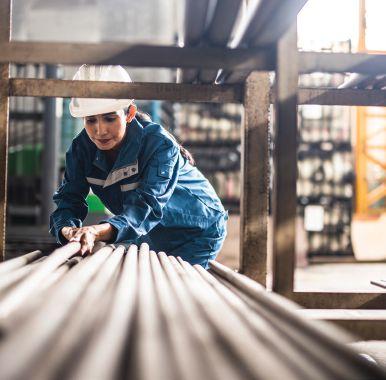
robotics and automation, and data-driven analytics for better decision making. Workers must be comfortable with, and embrace, technology. Otherwise, they — and their organizations — will fall behind. They will become less productive and may cause equipment to unnecessarily experience longer and more frequent breakdowns.
People skills: The trades are a business of technical skills. But they are also a customer service business. A worker who is not skilled at interpersonal communications can be an impediment to facility services. Whether interacting with colleagues, supervisors, tenants or vendors, employees should have a positive attitude, be approachable and cooperative, and be able to communicate clearly, concisely and professionally. Just as important, they must be good, active listeners, because they cannot help others if they do not fully understand what is needed.
There is a clear diff erence in skills and attitudes when it comes to newer workers and those who have more than 20 years of experience. It is important to recognize the difference and take steps to close the gap.

In HVAC, people over 40 years old make up 49 percent of technicians. In electrical and plumbing, they make up 55 percent. These people have gained significant knowledge over the years and often have spot-on instincts about how to handle a wide range of situations. They know what has worked in the past and are likely to rely on their tried-and-true methods and tools. If they have been successful for as long as they have, they are also typically good communicators and have a strong work ethic. However, they can be hesitant to try new approaches and tend to shy away from technology-based advancements such as robotics, field force automation, digital communications and workflow automation.
At the other end of the spectrum are millennials and even some Gen Zers. In HVAC, 28 percent of technicians are 30-40 years old and just 23 percent are 20-30 years old. With electricians and plumbers, 27 percent are in the 30-40 year range and only 18 percent are in their 20s-30s. Many of these workers are very tech savvy and expect to use tech-driven systems in their work. They may even turn away from facility services organizations that do not take advantage of the latest innovations.
No one expects newer workers to have experience that is on par with more senior tradespeople. However, they are often handicapped from the start because many do not have the extensive education and apprenticeships that were available to older generations. Trade schools may teach HVAC theory, for instance, but not offer the robust curriculum and academic hours that were required in the past.
One encouraging sign is that many unions are bringing in new workers, including those who do not already have links to existing members, and tie their technical trades programs to community colleges where people can get associate degrees in facility management in addition to becoming a licensed tradesperson.
People in this age group also tend to have a different work ethic than older technicians. The quality and intensity of work ethic can vary from person to person and generation to generation. While it is important that increased considerations are now being made for work/life balance, unfortunately, there is no shortcut when it comes to garnering experience in the trades. Willingness to put in extra hours translates to increased knowledge, experience and mastery that are part and parcel of the job.
Two issues are clear:
1. The need to bridge the skills and work ethic gap;
2. Far more people are in the soon-to-retire bucket than in the new-to-the-profession, must-fill-the-shoes-of-veterans bucket.
There is a common misperception that traditional college is the best route to success and a good paycheck. That is why high school guidance counselors, teachers and parents often steer students to colleges and universities instead of trades. So it is not surprising
that 61.8 percent of graduates choose college whereas less than 16 percent enroll in a vocational or trade school even though 40 percent say they had considered doing so.
However, on the upside, 93 percent of parents now say they would support their child's choice to pursue a career in skilled trade.
Getting young people hooked on the trades is critical. With college education so costly and parents open to alternatives, now is a great time to aggressively promote the trades as a smart, fulfilling career. It is much more lucrative than many people realize. Plus, it is rewarding to see the immediate, positive impact a contribution has on teammates and tenants, and it can be
very intellectually stimulating. As an added benefit, young workers will appreciate that when they own a home they will have the ability to make repairs themselves instead of having to hire a tradesperson, potentially saving thousands of dollars.
One way to attract new talent is to work closely with local vocational technical high schools, recruiting students as paid interns during the summers and winter/ spring breaks or as part of a co-op program. Assign them mentors who can show them how fulfilling working hard can be and teach by example. Hire them right out of high school, give them apprenticeships and the education needed to pass their license exams.



























The industry must focus on two things:
1. Making the veterans comfortable with using technology;
2. Building successorship plans — growing the next generation of tradespeople and making them as good, if not better, at their jobs than the veterans.
All workers must be trained on the latest technologies, and with advancements happening all the time, these trainings must be ongoing. Pay particular attention to older workers who may need more help to get up to speed on everything from how to use mobile devices during daily rounds to operating building automation systems with smart system technology. Make sure to tailor training to people’s individual needs and to what they will encounter every day on the job. Conducting assessment tests can help determine their strengths and enable managers to customize trainings to where skill deficiencies exist. Communication skills should be a key component of every training program. Oral skills are critical when working with teammates on complex tasks, conveying issues to management and dealing with tenants. Conflict resolution and situational skills are important, for instance, when speaking with tenants who are upset because a bathroom is not working, or the air conditioning has not kicked in on an 80-degree day. Written skills are key for communicating with

superiors, other departments and vendors via email or text, and when noting explanations in work order management systems.
The talent gap is the biggest issue facing the FM industry. Closing the gap and filling the thousands of open positions with quality workers is critical and requires an all-hands effort. Every facility services organization and every FM worker must take on the role of recruiter to attract more people to the trades and ensure that everyone has the competencies they need to excel. FMJ

Jim Lane is a highly accomplished facility management professional and business executive with more than 20 years of industry experience. He has a strong track record in ensuring compliance concerning industry regulations, safety procedures and policies. Lane began his career in the services industry in 1999 with Johnson Controls Inc. In 2004, he joined EMCOR Facilities Services Inc. where eventually he went on to lead their North American operations and became senior vice president and general manager. He has extensive expertise built on 24 years of cross-industry experience in areas ranging from life science/ pharma, data centers, controls and energy management to complete facilities services and solutions. In 2018, he joined UG2 and is the senior vice president of operations and maintenance activities nationally.
contractingbusiness.com/residential-hvac/ article/21123518/technician-shortage-solutionsopportunities pewresearch.org/social-trends/2022/02/16/ covid-19-pandemic-continues-to-reshape-workin-america kastle.com/safety-wellness/getting-america-backto-work zippia.com/hvac-r-technician-jobs/demographics zippia.com/plumber-jobs/demographics bls.gov/opub/ted/2022/61-8-percent-of-recenthigh-school-graduates-enrolled-in-college-inoctober-2021.htm tws.edu/blog/skilled-trades/how-many-highschool-students-know-about-trades-careers prnewswire.com/news-releases/over-90-ofparents-would-support-childs-choice-to-pursueskilled-trades-career-300973823.html






It's time to stand out. Prepping for the CFM Exam isn’t complicated. We’ll show you how.*






Zero coursework or training is required to take the Certified Facility Manager® (CFM®) exam. If you meet eligibility requirements, you can apply to take the exam whenever you feel ready.
Not sure if that time is now? There are two ways to prepare:
1. UNDERSTAND THE METHODOLOGY
Take a practice exam.
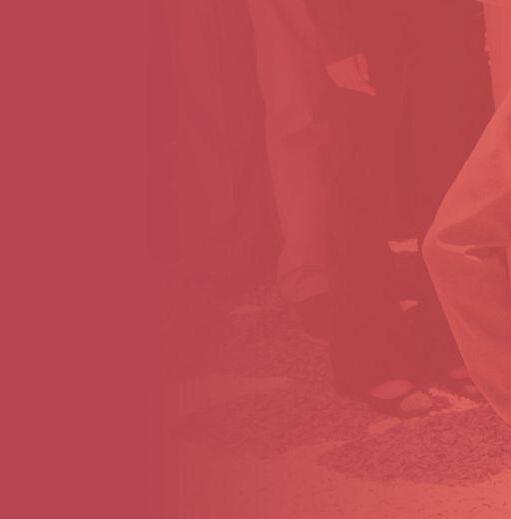



Enroll in a virtual or in-person exam prep workshop, like the one happening at Facility Fusion in April 2023.
2. CLOSE YOUR KNOWLEDGE GAPS

Use our Self-Assessment Tool to gauge your strengths in the 11 core competencies of FM, which form the subject matter of the CFM Exam.
If you need a deep-dive in a particular competency, choose from our Core Competency Courses.









USING MODERN BUILDING CODES TO MINIMIZE RISK
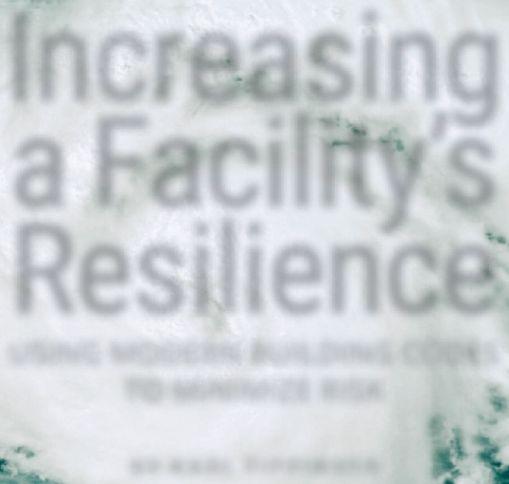
BY KARL FIPPINGER

Natural disasters are increasing in frequency and severity due to extreme weather conditions and a changing climate. A variety of perils are causing these disaster events including tropical cyclones, extreme heat and cold, tornadoes, flooding, wildfi re, severe hail-producing thunderstorms and even derechos. The recent earthquakes in Türkiye and Syria, collectively responsible for the loss of more than 50,000 human lives, serve as a stark reminder that the seismic danger is ever present.
In 2022, the U.S. experienced a total of 18 billion-dollar disasters totaling US$165 billion in economic losses and claiming 474 lives. The year tied with 2017 and 2011 for the third-highest number of billion-dollar disasters in U.S. history.
For facility managers, managing and mitigating the multitude of risks associated with natural disasters is challenging.
The good news is that — whether for new construction, remodels, renovations or retrofits — using modern building codes to design and construct facilities is one of the best and most cost-effective ways to mitigate more frequent and severe natural disasters.
THE VITAL TOLL OF MODERN BUILDING CODES IN MANAGING RISK AND MITIGATING DISASTER LOSSES
In the face of more frequent and severe natural disasters, facility managers and building owners recognize the critical need for safer, more disaster-resilient buildings. In its Natural Hazard Mitigation Saves report, the National Institute of Building Science (NIBS) found that incorporating contemporary construction features that allow buildings to survive natural disasters, on average, amounts to just 1–2 percent of total building construction costs.
A 0.7 percent increase in the cost of construction means a building can be
reinforced to withstand shaking during an earthquake. Similarly, a 1.2-1.7 percent cost increase over standard construction costs will raise a building’s ground floor, generating a flood safety factor or “freeboard” needed to withstand most floods. These added costs are minimal when compared to the costs of business disruptions and repairs, lost revenue or the total loss of a facility.
The report also found that adopting the latest building code requirements saves US$11 for every $1 invested. For example,
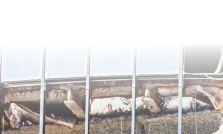
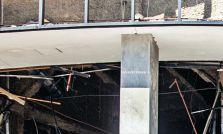
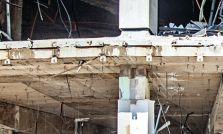

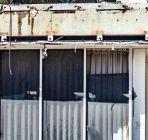
adopting the earthquake-related safety provisions of the International Codes or I-Codes saves US$12 for every $1 invested. Adopting the wind-related safety provisions of the I-Codes saves US$10 for every $1 invested. Finally, adopting the riverine flood-related safety provisions of the I-Codes saves US$6 for every $1 invested.
On the importance of designing and constructing facilities using modern building codes, the Natural Hazard Mitigation Saves report highlights Anheuser-Busch. The company spent US$11 million to perform a seismic retrofit of its Van Nuys, California, USA, brewery just prior to the 1994 Northridge earthquake. The company saved US$2 billion in losses avoided, while protecting its market share and the safety of its employees.
Whether considering new construction or a renovation, remodel or retrofit of an existing building there are a variety of cost-effective, disaster-resistant options within modern building codes that can help FMs more eff ectively manage their risk and mitigate potential losses from natural disasters.

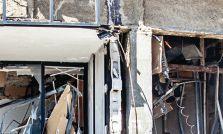
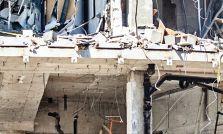
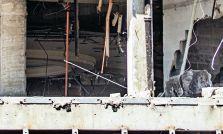
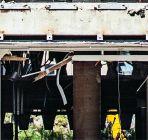
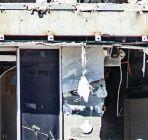
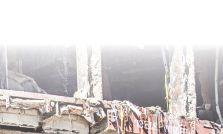
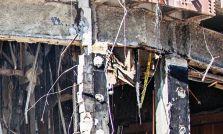
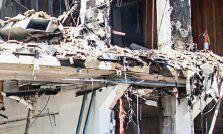
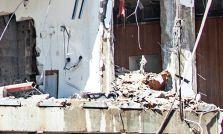
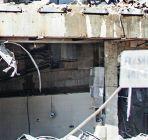


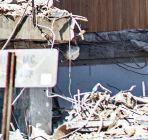


However, there is a significant gap to close. According to the Federal Emergency Management Agency (FEMA), only 25 percent of hazard-prone jurisdictions in the U.S. adopt the latest two editions of hazard-resistant building codes. State and local governments, commonly referred to as the authority having jurisdiction (AHJ), regulate the built environment. AHJs rely heavily on model codes and standards published by code developers, like the International Code Council, to serve as the basis for their building codes. However, most AHJs are using older versions of building codes. In many cases, these are weakened versions of the model codes where the disaster-resistant provisions of the codes have been modified or even fully amended out of the code.
There are several effective ways FMs can proactively strengthen their buildings to avoid business interruptions and disaster-related losses while making facilities more resilient to natural disasters. Designing and constructing resilient buildings requires preparing and planning for buildings to absorb, recover from or successfully adapt to adverse events.
When it comes to mitigating risk from natural disasters, having a working knowledge of current building codes and standards is important for anyone involved in the design, construction, operation and maintenance of a building, especially facility managers. Remember that model codes only represent the minimum requirements for the design and construction of safe buildings. Organizations should challenge their design and construction professionals to help understand the options. Meet with governmental emergency managers to learn more about the natural hazards that can impact a facility. Local building officials are also a great resource for information regarding what is required to design and build a facility as well as cost-effective above-code options that might be available.
Whether designing new construction or performing remodels, renovations or retrofit projects, always take the opportunity to incorporate disaster-resistant construction features into the next design. For example, the International Existing Building Code (IEBC) includes an appendix of Guidelines for the Seismic Retrofit of Existing Buildings. Incorporating a storm shelter into the next design is a potentially life-saving investment that can be retrofitted into existing buildings or included in new construction projects. The ICC 500: ICC/NSSA Standard for the Design and Construction of Storm Shelters provides minimum design and construction requirements for storm shelters that offer a safe refuge from storms that produce high winds, hurricanes and tornadoes.
Each May, the International Code Council sponsors its annual Building Safety Month campaign. Building Safety Month is an international campaign to raise awareness about building safety. Building Safety Month reinforces the need for the adoption of modern, regularly updated building codes, and helps individuals, families and businesses understand what it takes to create safe and sustainable structures.
Similarly, the U.S. Department of Homeland Security’s Ready Campaign is a national public service campaign designed to educate and empower people to prepare for, respond to and mitigate emergencies, including natural and man-made disasters. The goal of the campaign is to promote preparedness through public involvement. The Ready Campaign is a great resource for FMs to prepare their occupants and facility management teams for natural hazards such as floods, hurricanes, tornadoes and earthquakes. dedicated exclusively to preparedness planning for businesses. FMJ

Karl Fippinger, CEM, PMP, is vice president, fire and disaster mitigation, for the International Code Council. He is a 30-year veteran of the fire and emergency services having served as an assistant fire chief with the OccoquanWoodbridge-Lorton Volunteer Fire Department in Prince William County, Virginia, USA, as well as an adjunct fire and rescue instructor for the Fairfax County Fire and Rescue Department in Fairfax County, Virginia, USA. Fippinger is also a certified emergency manager with the International Association of Emergency Managers and brings more than 25 years of public- and private-sector experience in federal, state and local disaster preparedness, response, recovery and mitigation.
climate.gov/news-features/blogs/2022-us-billiondollar-weather-and-climate-disasters-historicalcontext nibs.org/projects/natural-hazard-mitigation-saves2019-report iccsafe.org/products-and-services/i-codes/the-icodes/ conservation.ca.gov/cgs/earthquakes/northridge stantec.maps.arcgis.com/apps/MapSeries/index. Codes.iccsafe.org/content/IEBC2021P1 Codes.iccsafe.org/content/ICC5002020P1 iccsafe.org/advocacy/building-safety-month/ building-safety-month/ ready.gov/about-us ready.gov/business
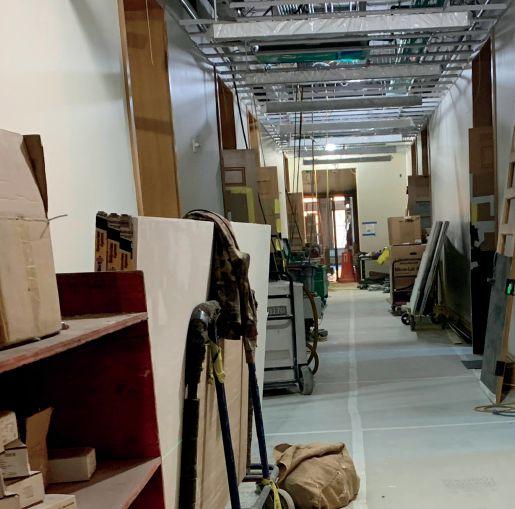
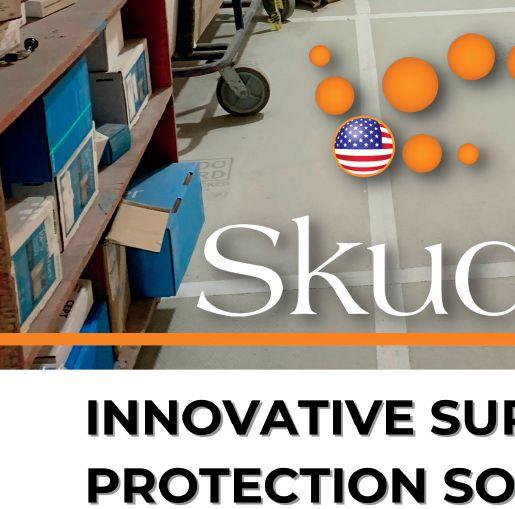


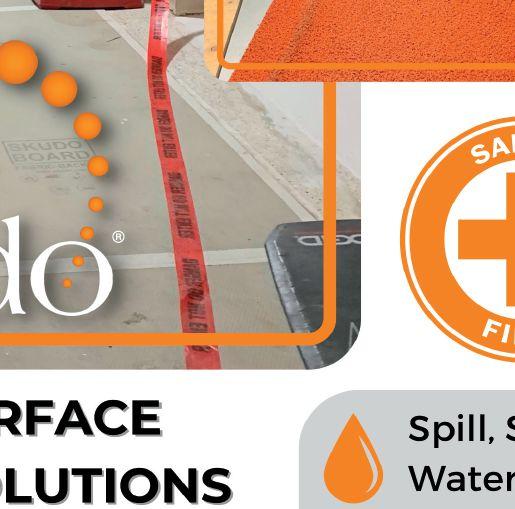
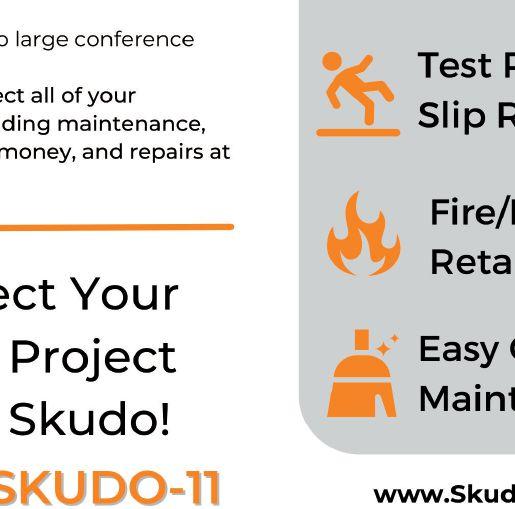

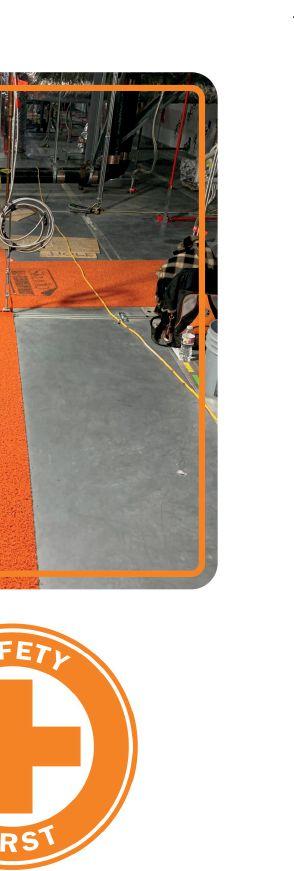





BY JASON LUND











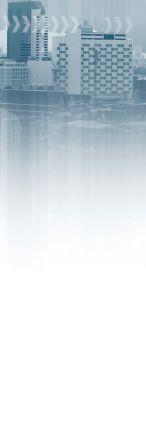
The drive to make office buildings smarter has made it easier to do everything from controlling the temperature to reserving a conference room with a few taps on a smartphone. But these efficiencies have increased cyber risks.
Property owners and facility managers must be aware that all smart buildings are innately vulnerable to cyberattacks. While informational technology and telecom are well developed within the cybersecurity realm, the same cannot be said for much of the operating technology found in smart buildings.
Within a typical office building, there could be 20 independent networks vulnerable to hacking. On average, only five or six are highly secured.
Once a system is hacked, cybercriminals could manipulate heating, ventilation and air conditioning (HVAC) systems; infiltrate sprinkler systems; and exploit smart access technology, such as intelligent credentials and contactless building access. Data hacking is another area of concern. Passwords and personal information can become compromised, leading to identity or intellectual theft. There is also the real possibility of a cyberthief holding the systems or data hostage until a ransom is paid.
The repercussions can last for years.
Key steps building owners and managers can take to bolster an asset’s cybersecurity profile, include:
❍ building infrastructure such as internal routers, hardwired cables and closed-circuit lot devices to secure the building automation systems,
❍ segregating BAS and subsystems on different systems to reduce vulnerabilities,
❍ consulting with a cybersecurity company specializing in installing systems that make cyberattacks more challenging,
❍ investing in advanced identification and access management systems to flag vulnerabilities,
❍ securing the access chain by requiring anyone with access to the BAS systems – third-party vendors, remote security monitors or life safety systems technicians – to follow the asset’s internal cybersecurity measures,
❍ educating building tenants and property managers on what they can do to prevent cyberattacks, and
❍ understanding and monitoring any changes to the asset’s cybercrime insurance coverage.
Many building owners may be surprised to learn they are not sufficiently covered by insurance if a cyberattack were to occur. In addition, owners and FMs might have a limited understanding about the risk of IT and operational technology (OT) threats, insurance coverage, and what accountability they bear if a cyber incident were to occur. The unfortunate truth, however, is that blanket property insurance policies likely do not provide the necessary scale of coverage. As insurers have limited visibility into a building’s IT/OT infrastructure, they more often prefer to rely upon the expertise within their cyber underwriting teams to assess risks and provide coverage based on those findings. This has resulted in traditional property and casualty insurers removing cyber inclusion from their product lines. These exclusions may not be widely known or understood until it is too late.
By removing cybersecurity coverage from the blanket property insurance policies, FMs must explore cyber-specific coverage, a stand-alone marketplace that is rapidly growing and can be difficult to navigate.

As part of vetting what level of protection a property or campus holds, building owners should begin by asking basic policy questions, including:
❍ What cyber coverage is currently included or excluded?
❍ What is the appropriate level of coverage for each property in a portfolio?
❍ Does the current policy provide coverage for in-building OT, as well as IT assets?
❍ What is the expected down time impacting both the physical asset’s damage from a cyber event, as well as business interruption exposure/loss of rents and extra expenses?
However, simply identifying coverage gaps and seeking to fill them is sometimes easier said than done.
The main challenge for securing standalone cyber insurance is that this type of policy is coming out of a hard market cycle one marked by a rise in cyber claims that continues to develop in terms of frequency and severity. In this environment, insurers are forced to reevaluate their underwriting results and are keenly focused on identifying and evaluating the adequacy of individual cybersecurity profiles. This investigation work can result in insufficient coverage capacity for a buyer if sufficient cybersecurity protocols are not in place as well as rising premiums.
Properly securing a building begins with the right network platform to serve a secure foundation. Taking a security-first approach to an in-building network helps cover all cybersecurity requirements, not just some of them. A modern approach to this problem is to adopt zero trust network access (ZTNA) models and solutions that not only help secure operations for IT/OT functions but also collect management and reporting information needed to make sound security decisions. This solution must be adaptive and provide proactive security that meets the challenges of an ever-changing threat landscape.
Smart building solutions for both IT and OT use cases help produce impactful economic and intrinsic value when cybersecurity is placed at the forefront.
It is also critically important to select an intelligent building management platform offering a single screen view to gain important visibility into all security systems, networks and endpoints. This ensures that the entire infrastructure is monitored from end to end, and the architecture provides the necessary intelligence to easily manage and ensure compliance according to government regulations for cyber insurance qualification purposes. Finally, understand that cybersecurity measures should be deployed and managed to not impact the usability or manageability of IT/ OT systems. The goal should be to integrate security tools and processes that are completely transparent from an end-user perspective to ensure users and devices efficiently function on the network.
The good news is that insurance brokers with financial risk specialists have resources to better adapt to new threats and gauge the risk of exposure in advance of a market submission. To accomplish this, however, a careful evaluation of a property’s existing security posture must be analyzed to see if it qualifies for more comprehensive cyber insurance.
Underwriters will evaluate several key security controls before being able to offer cybersecurity insurance policies that match appropriate levels of risk between the insurer and property owner. All systems must be vetted to ensure the property is appropriately secured to avoid painful issues down the road.
These controls include:
❍ multi-factor authentication (MFA)
❍ endpoint detection and response (EDR)
❍ patch management
❍ secure remote access
❍ incident response plans
❍ disaster recovery plans
❍ backups and email filtering
❍ properly architected user management and service accounts
❍ phishing and cyber awareness training for all employees
Smart building solutions for both IT and OT use cases help produce impactful economic and intrinsic value when cybersecurity is placed at the forefront. Not only does this line of thinking help prevent cyberattacks, but it also offers a better path toward rapid recovery.
According to a recent report from Cybersecurity Ventures, cybercrime is expected to account for a loss of US$10.5 trillion globally by 2025 – a staggering number. Having a cyber insurance policy in place will help lessen the impact that an attack/breach may have on the digital operations of building owners and operators. To achieve this goal, it is important to consult with an expert that understands the unique needs of commercial real estate and how to most effectively mitigate risks that exist within building and campus digital infrastructures. FMJ

JasonLund has served as the leader of technology infrastructure in the U.S. for JLL since 2021. With more than 30 years of experience in commercial real estate, Lund has held the position of executive managing director at a global commercial real estate firm and has been integral in international business development and launching national platforms for valuation advisory. After overseeing engineering, technology and environmental consulting groups, Lund focused on technology consulting for both national and international commercial real estate. He obtained the MAI Designation from the Appraisal Institute and the MRICS designation from the Royal Institute of Chartered Surveyors and earned a bachelor’s degree in finance from the University of Southern California.





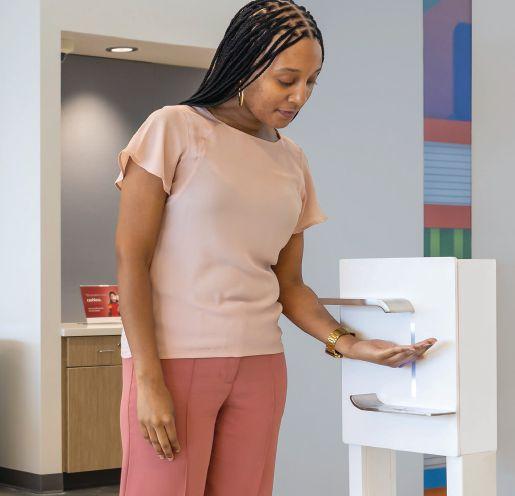






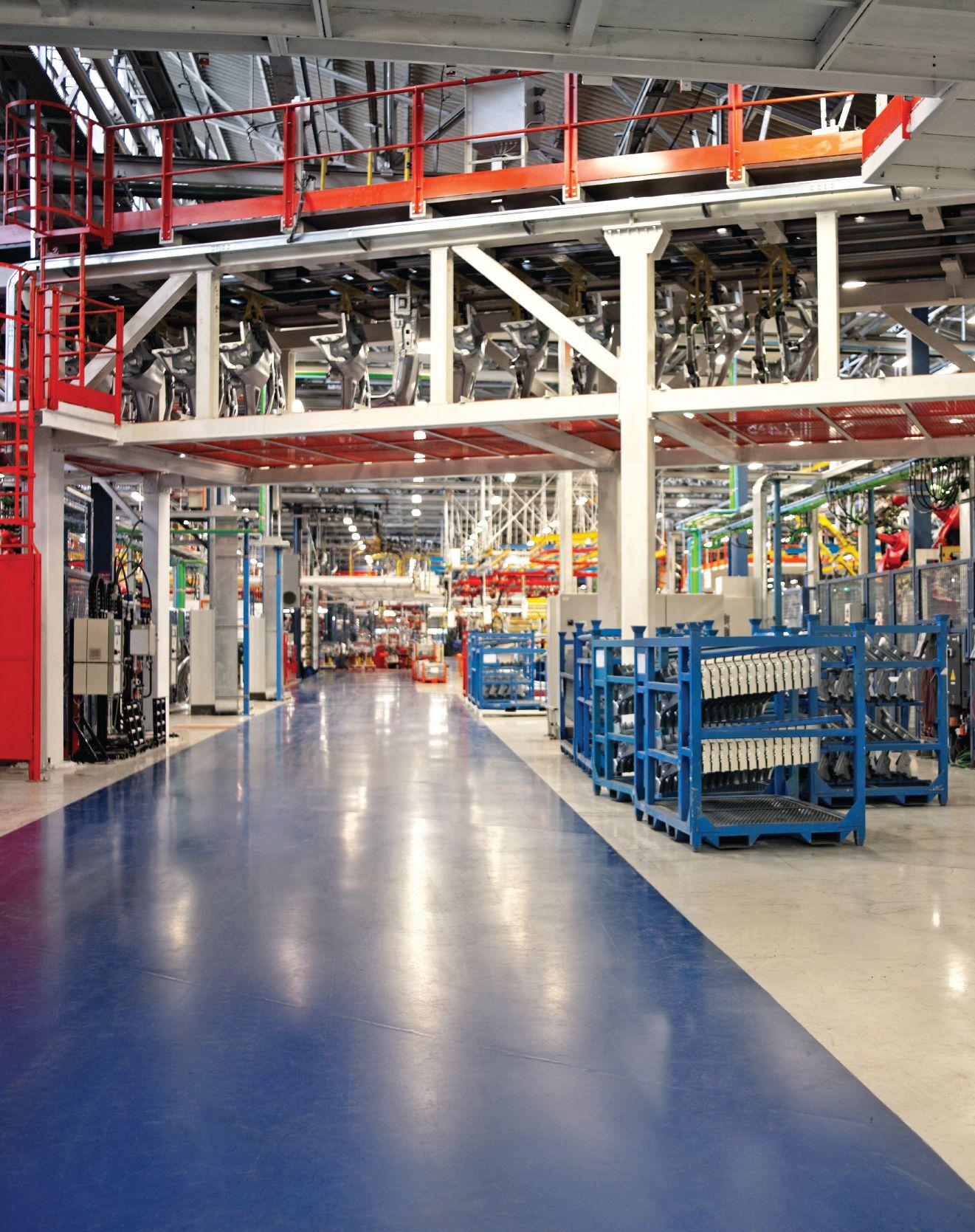
Understanding the dangers of VOCs & reactive gases
BY FARIYAL KHANBABI
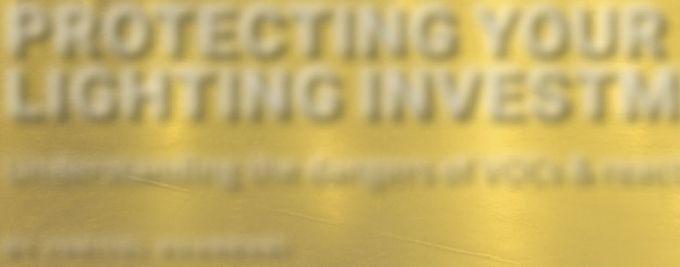




According to the 2022 CMM In-House/Facility Management Benchmarking Survey Report, health, safety and improving facility and building image and security are the most important issues for plant managers and service contractors.
It is no secret that industrial facilities are home to some of the toughest environments in existence. Whether the facility is a chemical plant, a manufacturing site or industrial facility, all equipment is likely carrying a hazardous rating Class I Div. 2, Class I Div. 1, IECEx/ATEX Zone 1 or Zone 2. What is less known, however, is how specifically these conditions can impact a site’s lighting, which directly affects these important issues.
Good lighting helps to ensure facility and plant safety by clearly illuminating potential hazards, increasing alertness and reducing accidents by as much as 60 percent. Crisp, clear illumination can also help increase the clarity of security footage and improve building appearance. However, in industrial settings, lighting can be susceptible to harsh environmental conditions that can affect performance and overall fixture lifespan.
High-quality industrial-grade LED lighting manufacturers have made great strides in understanding the hazards present at facilities and introducing technologies to address some of the most common culprits of fixture decline, including high heat, vibration, power fluctuations and moisture. Every detail from power supplies and mechanical designs to coatings and corrosion-resistant hardware have all been optimized to allow for long life and products warrantied for up
to 10 years even in extreme environments. However, among the most elusive causes of reduced fixture performance have been volatile organic compounds (VOCs) and reactive gases. Not only are these pervasive in almost all facilities, but until recently, there were little to no proven solutions to protect industrial lighting from their impact.
A wide variety of solvents, process oils and other materials that produce mist or vapors are common across nearly every manufacturing, industrial and plant facility. Like VOCs, reactive gases like hydrogen sulfur dioxide and chlorine are also emitted through building maintenance processes with a similar effect on lighting performance.
While most of the time VOCs go undetected, over time these materials can be devastating to lighting and facility safety, often causing chemical degradation of the LEDs and other electronic components. This results in color shifting or lumen depreciation, which affects visibility and clear illumination of hazards.
Concentrations of VOCs and reactive gases are everywhere and can be up to 10 times higher when present in indoor structures. Elevated temperatures promote their release, causing them to coat virtually any
surrounding surface. Because VOCs are difficult to detect and prevent in such severe environments, many facilities and plants live with the burden and expense of constantly replacing lighting when performance starts to decline.
Even the most enclosed fixtures are not immune as VOCs can permeate silicone-based seals, discoloring the diode surface itself, and resulting in decreased light output and color shifting which diminishes visibility. One of the tell-tale signs includes lighting that shifts to more of a purple tone rather than a crisp white. Over time, this reduced visibility increases the risk for accidents and errors. Because the root cause of the loss of performance is the VOC itself, the change can be reversible if VOCs are able to escape through ventilated luminaires. However, in hazardous locations, the presence of combustible airborne particles necessitates fully sealed fixtures which do not allow for venting of VOCs and other chemicals. Similarly, reactive gases can also damage the LEDs and sensitive connections that power the fixtures. However, the most harm caused is corrosive and irreversible making it even more essential to prevent damage before it starts. Moreover, as it relates to hazardous locations, failing to install the proper hazardous location-certified products for facilities is extremely dangerous and puts employees at serious risk. Lighting in hazardous locations must adhere to the UL/CSA/IECEx/ ATEX standards by law, as dictated by local jurisdictions. Not every manufacturer offers products for these conditions, and only certified products are compliant.

Economic burden of occupational injury and illness
Inadequate visibility, exposed electrical parts and corroded fixtures from VOCs and reactive gases put workers at risk. Furthermore, lighting maintenance at industrial facilities is often deprioritized due to the difficulty in accessing the fixtures and the corresponding burden of production downtime. Faulty electrical fixtures account for 52 percent of fatalities, with the Occupational Safety and Health Administration (OSHA) continuing to identify poor lighting as the leading cause of injuries. Over the past decade alone, these accidents have cost companies billions of dollars in medical and compensation expenses. Worse yet, thousands of these accidents have resulted in loss of life, all of which could be prevented with better, more resilient lighting.
Providing a well-lit, vibrant work environment is essential for maintaining facilities
and plants and improves overall building reputation and security. When overall illumination is increased, accident rates decrease as much as 60 percent, making it easier to perform work that requires precision and attention to detail. Improved lighting can also dramatically improve the clarity of closed-circuit camera systems, enhancing security.
But with VOCs and reactive gases in the atmosphere affecting the reliability and performance of fixtures, keeping up with lighting maintenance is a never-ending chore. Between the specialized equipment needed to reach high-mounted fi xtures, the rewiring requirements for overloaded circuits and the need to keep plenty of replacement bulbs on hand for a wide range of fixture models, it can cost hundreds of thousands of dollars a year just to maintain a building’s lighting. Not to mention the lost revenue due to production downtime to perform lighting maintenance.
In recent years, LED chip manufacturers have focused on efficiency as well as driving current and maintaining LED temperatures rather than developing specialized protections against environmental factors. While evidence from multiple tests and studies have proven that sensitive electronic areas treated with protective coatings are significantly better protected than uncoated areas, component manufacturers have not commercialized protections to prevent these failure modes.
This has prompted some best-in-class fixture manufacturers to engineer advanced solutions to protect their products from the impacts of VOCs and reactive gases. Those specializing in the industrial sector are keenly aware of the environmental conditions that can wreak havoc on the lighting and are committed to offering solutions that protect customers’ employees and investment.




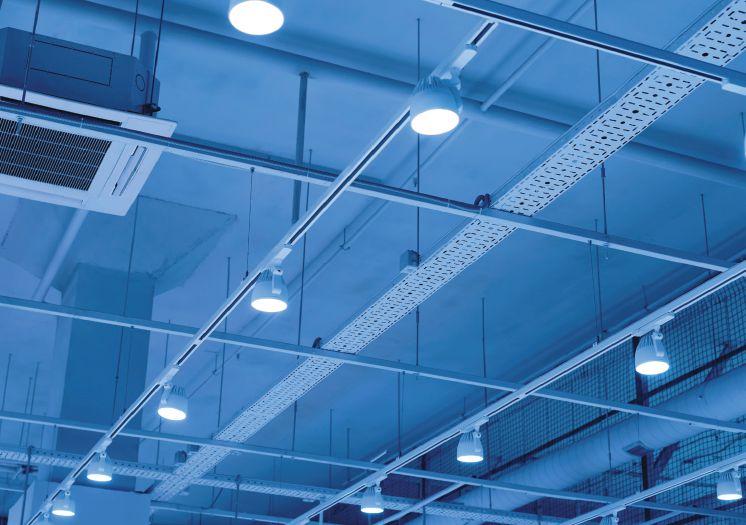
These solutions include VOC-resistant coatings, along with noble metal electrical contacts and protected conductive joints to resist corrosion and prevent VOCs and other chemicals from permeating through. This ensures that electrical components remain secure, all while delivering optimal output and visibility, even in the harshest environments. Upgrading facility lighting fixtures to high-efficiency, high-durability lighting such as VOC shielded LED fixtures can drastically improve overall employee safety and productivity, while decreasing maintenance costs. And as an additional bonus, the flexibility to group, dim and schedule lights around the unique needs of a facility and seamlessly integrate with existing factory automation maximizes energy savings.
It is no secret that high pressure sodium (HPS), metal halide and fluorescent lighting consume more energy than LEDs, which contributes directly to increased pollution and environmental impact. On top of massive operational savings and decreased maintenance, investing in resilient LED fixtures can help industrial facilities and work sites place a strong emphasis on operational efficiency and sustainability through overall emission reduction. In addition to their long-life performance, LED fixtures can cut electrical consumption and greenhouse gas emissions by as much as 90 percent compared to conventional fixtures. All of this makes investing in upgraded lighting a win for building safety, security and sustainability.

With the cost of maintaining lighting at industrial facilities at an all-time high, investing in long-lasting products designed to withstand harsh industrial environments is a critical solution to ensure employee safety, plant security and business continuity. For added peace of mind, seek out manufacturers whose warranty programs have been verified by third-party industry organizations. FMJ

Fariyal Khanbabi is the CEO at Dialight. Khanbabi brings over a decade of C-suite experience to her role, having formerly worked as CFO at Harvest Energy and Britannia Bulk, LTD. Having spent her entire career in the technology space, Khanbabi has become accustomed to being the only woman in the room and thus has proven to be a strong advocate for women in the workplace, especially in the LED industry.
RESOURCES
cmmonline.com/resources/industryresearch#industry-research-details-form pubmed.ncbi.nlm.nih.gov/22188353/




Roni Bader, CFM Dubai, United Arab Emirates
Douglas M. Nicholson, CFM Winnipeg, MB, Canada
Jerry Taylor, CFM Durham, North Carolina
Michael Schlosser, FMP, SFP San Diego, California
Ma Chun Wai, FMP, SFP Hong Kong
Alexander Young, SFP New Hamburg, ON, Canada
Jeff Womack, FMP, SFP Schertz, Texas
Asem Ahmed, CFM, FMP Giza, Egypt
Abdullah Zouri, CFM Dhahran, Saudi Arabia
Darin Young, CFM Sun City, Arizona
Garrett Guenther, FMP, SFP Beloit, Wisconsin
Mark Albers, FMP, SFP Decatur, Georgia
Andy Sullivan, SFP London, On, Canada
Les Chewning, CFM, FMP, SFP Secane, Pennsylvania
Omar Lewis, FMP, SFP Kingston, Jamaica
Arial Amstein-Willey, FMP
United States
Coco Lupu, FMP
United States
Keyvan Vaghei, FMP Richmond Hill, ON, Canada
Oday Alamayreh, FMP
Jordan
Chris Collinge, FMP Richmond, BC, Canada
Ayman Hamed, FMP Madinah, Saudi Arabia
Mohammad Iqbal Alam, FMP
United States
Kimberly Newhouse, CFM, FMP Ponte Vedra Beach, Florida
Garth Moote, FMP
Greater Sudbury, ON, Canada
Roshny Johny, FMP Brampton, ON, Canada
Chris Waite, FMP Layton, Utah
Dzifa Nuer, FMP
Ghana
Santoshkumar S, FMP Trichy, India
Wendy Edison, FMP
St John’s, Ne, Canada
Allison Rader, FMP Charlotte, North Carolina
Richard Kennedy Jr, FMP Burleson, Texas
Jun Bao Yue, FMP
Singapore
Kerrie Hughes, FMP
Largs North, Australia
Satya Vani Andey, FMP
Teresa Cook, FMP Seattle, Washington
Sayre Brennan, FMP Marietta, Georgia
Ryan Krueger, FMP Merrill, Wisconsin
Aik Koon Ang, FMP Singapore
Mahammad Babayev, FMP Baku, Azerbaijan
Anthony Hoppe, FMP Rixeyville, Virginia
Onkar Ghotra, FMP North York, ON, Canada
Kevin Lugo, CFM Cypress, California
Dave Curtis, CFM Iowa City, Iowa
William Taylor, CFM San Diego, California
Philip Lopez, FMP, SFP Morgan Hill, California
Robert Kief, CFM, SFP Gig Harbor, Washington
Shawn Kissoondath, FMP, SFP Christ Church, Barbados
Anthony Von Dollen, FMP, SFP Brentwood, Tennessee
Hugo Cardenas, CFM, FMP, SFP
Khalid Nassar, CFM 6th of October City, Egypt
Xiaodong Xing, CFM, FMP, SFP Beijing, China
Yawovi Amedjonekou, SFP Lome, Togo
Stacey Allen, FMP, SFP Racine, Wisconsin
Steve Litschauer, FMP, SFP Honolulu, Hawaii
Alba Salvidrez, FMP, SFP Commerce City, Colorado
Vijith Menon, CFM, FMP, SFP Mumbai, India
Mohammad AbuSalameh, CFM, FMP Sharjah, United Arab Emirates
Thang Tran, FMP, SFP United States
Ahmed Moawia Abdalbagi, FMP Wad Madani, Sudan
Mike Melham, FMP Medicine Hat, AB, Canada
Richard Callf, FMP United Kingdom
Alhanouf Aljasser, FMP United States
Kasey Smith, FMP, SFP White Rock, New Mexico
Glenn Osterhaus, FMP Houston, Texas
Sarah Loo, FMP Kowloon, Hong Kong
Mohsin Ahmed Zaila, FMP Riyadh, Saudi Arabia
Alfredo Gomez, FMP Los Angeles, California
Dan Landolphi, FMP Holbrook, Massachusetts
Parkville, Maryland
Mohammad Shajid Equbal, FMP Muscat, Oman
Nawaf H. Alhazani, FMP Riyadh, Saudi Arabia
Nicole Mueller, FMP Minneapolis, Minnesota
Minette Posada, FMP Houston, Texas
Ahmed Mohsen Hazaa Alharbi, FMP Hafr Albatin, Saudi Arabia
Joseph Kennington, FMP Atlanta, Georgia
Duane Hayward, FMP Hendersonville, Tennessee
Vadivel Kathiresan, FMP Thiruvallur, India
Tariq Bouaichi, FMP Englewood, Colorado
Wivaldy Lee, FMP
Singapore
Taha Barki, FMP United States
Jane Davis, FMP Bronx, New York
Laura Priedolin, FMP Peoria, Arizona
Adam Kress, FMP United States
Ma Chun Wai, FMP, SFP Hong Kong
Lynane Newton, FMP Aurora, ON, Canada
Joshua Gomez, FMP Pittsburg, California
Berkeley Burgess, FMP Lansdowne, Virginia
Krista Anderson, FMP
Portugal Cove-St. Philip’s, Canada
Michael Patten, FMP Marietta, Georgia
Abdulaziz Abdullah M Al Mushrai, FMP Riyadh, Saudi Arabia
Kyle Condreay, FMP, SFP Englewood, Colorado
Blaine Bradley, FMP Kelowna, BR, Canada
Faris Almotiri, FMP Riyadh, Saudi Arabia
Christy Wilkes, FMP United States
Marcos Moreno, FMP La Algaba, Spain
Joseph Segreto, FMP Toms River, New Jersey
Mark Albers, FMP, SFP Decatur, Georgia
Kevin Fischer, FMP Summit, New Jersey
Erica Lyke, FMP Nashville, Tennessee
Ashley Crews, FMP Essex, Maryland
Michael Mears, FMP Kempner, Texas
Erik Noriega, FMP Killeen, Texas
Chris Lamont, FMP Forest Hill, Maryland
Mohammed Bulaihed, FMP Dhahran, Saudi Arabia
Daniel Maneha, FMP Laie, Hawaii
Kevin Sullens, FMP McKinney, Texas
Corvin Dozier, FMP Georgetown, Texas
Timothy Bostic, FMP Peachtree City, Georgia
Curtis Hopkins, FMP Harker Heights, Texas
Ming Liang Sia, FMP Singapore
Michael Byland, FMP Woodinville, Washington
Adam Timm, FMP United States
Hayden Cook, FMP United States
Samuel Ciprut, FMP Richmond, BC, Canada
Mohamed Mostafa, FMP Egypt
Matthew Stonehocker, FMP Port Orchard, Washington
Purvak Darji, FMP Calgary, AL, Canada
Nathan McFarlane, FMP Carleton Place, ON, Canada
Erich Schmidt, FMP Los Gatos, California
Brian Liang, FMP
North Olmsted, Ohio
Kevin Ingle, FMP Glen Burnie, Massachusetts
Ahmed Saeed, FMP Giza, Egypt
Valerian Gomes, FMP Mississauga, ON, Canada
Rene Echeverria, FMP Gainesville, Virginia
Ahmed Fathy, FMP Pyramids Gardens, Egypt
Joanna Waldsmith, FMP United States
Shaikh Aziz Ahemad, FMP Ahmedabad, India
Ricardo Reina, FMP Tempe, Arizona
Alexs Perez-Mendez, FMP United States
Dakota Evick, FMP Culpeper, Virginia
Fadi Elias, FMP Amman, Jordan
Fahad Al Kahtani, FMP Riyadh, Saudi Arabia
Mohamed Abouelnasr, FMP Riyadh, Saudi Arabia
Chris Acton, FMP
Saskatoon, SK, Canada
Anthony Sy, FMP
Canada
Babatunde Olowo-okere, FMP Kennesaw, Georgia
Sameeuddin Siddiqui Mohammed, CFM Riyadh, Saudi Arabia
Thomas Gramer, CFM Stephens City, Virginia
Jimmy Dunn, SFP Arnold, Missouri
Kurt Klein, CFM, FMP, SFP Hampton, District of Columbia
Richard Gunpat, CFM, FMP, SFP Trinidad and Tobago
Mark Thia, CFM, FMP, SFP Singapore
Hugo Cardenas, CFM FMP, SFP
Rodney Harper, SFP Rigby, Idaho
Bryant Grauber, SFP Douglassville, Pennsylvania
Leiana Flores, FMP, SFP San Antonio, Texas
Michael Sunstrom, FMP Baltimore, Maryland
Julie Arteaga, FMP Eagan, Minnesota
Brady Martini, FMP Orlando, Florida
Damian Davies, FMP
New York
Gabriel Jefferson, FMP United States
Victoria Landron, FMP United States
Ikechukwu Mbachu, FMP Abuja, Nigeria
Shuang (Anita) Ren, CFM, FMP, SFP Beijing, China
Lee Thompson, FMP Frederick, Maryland
Patrick Martin, FMP George Town, Cayman Islands
Gbolade Thomas, FMP Lagos, Nigeria
John McEnery, FMP Foster, Rhode Island
John Gentry, FMP Baker City, Oregon
Mohammad Ghannam, FMP Al Ain, United Arab Emirates
Gary Ellison, FMP United States
Chris Selle, FMP United States
Silvia Prieto, FMP Mountain House, California
Bhanoji Rao Vadlamani, FMP Bangalore, India
Rose Gelsinger, FMP
Pilot Butte, SK, Canada
Dawn Gwin, FMP Luling, Louisiana
Michael Rhodes, FMP Overland, Missouri
Todd Roberts, FMP St. Augustine, Florida
Allen Karapcik, FMP Hastings, Florida
Terrance Jenkins, FMP
Upper Darby, Pennsylvania
Abel Lopez Gonzalez, FMP
United States
William Luck, FMP Hamilton, ON, Canada
Patricia Lau, FMP Markham, On, Canada
Deanna Colley, FMP Calgary, AL, Canada
Estrellita Nader, FMP Beirut, Lebanon
Saud Ruwaili, FMP Riyadh, Saudi Arabia
Teri LeBlanc, FMP Edmonton, Al, Canada
Gaurab Sengupta, FMP Kolkata, India
Savoeun Vun, FMP Desert Hills, Arizona
David Botello, FMP Round Rock, Texas
William Hicks, FMP Dewitt, Michigan
Prathamesh Hindalge, FMP Toronto, ON, Canada
George Keteku, FMP Accra, Ghana
Bryan Feola, FMP Greenwood Village, Colorado
Enoch Komey, FMP Ghana
Jeff Spaide, FMP Harrison, Tennessee
John Digber, FMP Osu-Accra, Ghana
Kwaku Addo Boateng, FMP Tema, Ghana
Vonnette Ofosu-Asante, FMP Accra, Ghana
Tim Kraft, FMP New Brighton, Minnesota
Bernie Vickery, FMP United States
Sandra Burnette, FMP United States
Thlaythla Meak, FMP Herforst, Germany
David Rogers, FMP Cocoa, Florida
Jessica Gortmaker, FMP Valley City, North Dakota
Eric Doelp, FMP Savage, Minnesota
Amy Tedford, FMP Nashville, Tennessee
Anindya Bhattacharyya, FMP Hyderabad, India
Jadie Chenault Hassan, India
Fernando Herrera, CFM
San Diego, California
Gary Vota, CFM, FMP
Singapore
Westminster, Colorado
Martin Prince, FMP
San Fernando, Trinidad and Tobago
Denver, Colorado
Eric Versteeg, FMP Fernley, Nevada
Brian Esmann, FMP Canada
United States
Jeremy Bergeron, FMP
Colorado Springs, Colorado
Singapore
Miami, Florida
Denver, Colorado
Madrid, Spain
FMP
Winnipeg, MB, Canada
Stafford, Virginia
Jersey City, New Jersey
Jon Merrill, FMP, SFP Colorado
Cinnaminson, New Jersey
Denise Bates, FMP, SFP
Madison, Alabama
Mililani, Hawaii
Cocoa, Florida
Asim Alsaleem, FMP
United States
Nitin Verma, FMP
T. Scott Dawson, FMP
Nat Amato, FMP Easton, Pennsylvania
United States
FMP Canada
David Dotey, FMP
Steve Garay, FMP Princeton, New Jersey
Baltimore, Maryland
Joe Ponserella, FMP
Toscano Ulises, FMP
Allan Jones, FMP
United States
United States
David Cowan, FMP
United States
Steven Haffron, CFM
Miami, Florida
Brian Howell, CFM
Cairo, Egypt
Cairo, Egypt
United States
Briana Heinen, FMP
United States
United States
San Diego, California
Cocoa, Florida
United States
Nina Tall, FMP
Valentin Espinosa, FMP
Elias El Haddad, FMP
Brendan Martins, FMP
Henderson, Nevada
Fresno, California
United States
United States
Neelagandan A E, FMP
FMP
Garey Howard, FMP
Needmore, Pennsylvania
Daniel Carroll, FMP United States
Brandi Catrett, FMP
Troy Taylor, FMP
Collierville, Tennessee
Allie Cerami, FMP
United States
Saeed Almotairi, FMP
Manasi Gomes, FMP
United States
Amanda Stacey, FMP Calgary, Alberta, Canada
Atlantic City, New Jersey
Francesca Fossati, FMP
Berwyn, Pennsylvania
Carlito Domingo Jr, FMP
Baroni Darlington, FMP
Cairo, Egypt Cairo, Egypt
Cairo, Egypt
Cairo, Egypt
Ali Abdel Moneim, FMP
Cairo, Egypt
Cairo, Egypt
Cairo, Egypt
Cairo, Egypt
Cairo, Egypt
Cairo, Egypt
United States
Cairo, Egypt
Sayed, FMP
Cairo, Egypt
Denver, Colorado United States
States Bianca Hong, FMP
Sparrows Point, Maryland
Adam Vonda, FMP
Spring Hill, Florida


Using data management to maintain aging infrastructure

BY JOSH LOWE

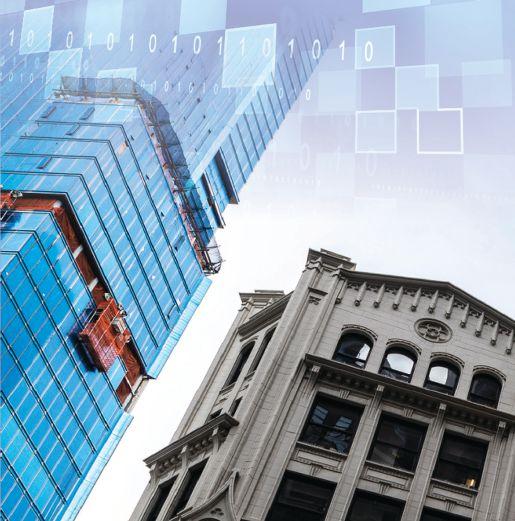






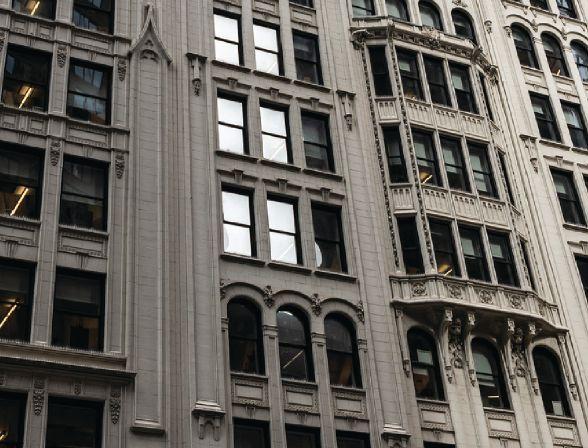



Lower occupancy thanks to work from home (WFH) and hybrid schedules is compounding the already sizable risk of aging infrastructure.
Fewer people using commercial buildings means less rental income to maintain those buildings.

Deloitte’s 2023 Commercial Real Estate Outlook found that only 40 percent of global real estate chief financial officers expected higher revenues in 2022 compared to 2021, and 33 percent anticipated having to cut expenses.
Although commercial building occupancy has been stabilizing since the height of the COVID-19 pandemic, it will likely never return to pre-pandemic levels. After seeing a rise in productivity as a result of WFH, businesses in countries around the globe are planning more days of remote work per week.

That means facility managers and building owners have some tough decisions to make in 2023.
How can they maintain aging infrastructure on even less budget than before? How should they pivot their facilities strategy to better align themselves with a more remote workforce? Should they repurpose their existing space? And if so, in what ways?
The stakes are high. Making the wrong choices can put companies out of business. Building owners and FMs require accurate data — and plenty of it — to make smart decisions and drive strategic changes that will protect the long-term viability of the organization.
Yet, many organizations do not have that necessary data. They lack a clear understanding of their facilities’ current condition. Their data is disorganized, disjointed, incomplete or just plain inaccurate.

A better approach to facilities data is needed like never before.

Traditional methods don’t deliver dependable data
Traditional data management can take many forms: Binders stuffed with paper. A disorganized plan room. Spreadsheets passed down from FM to FM since the building’s inception. FM software that was cutting edge 20 years
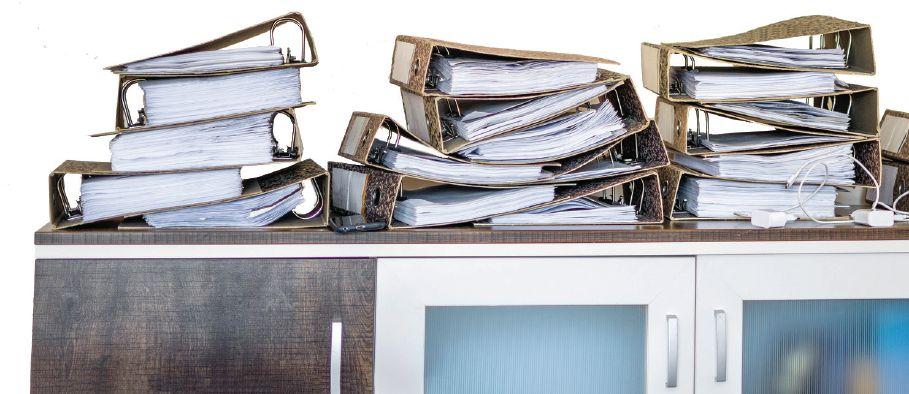






ago but no longer serves the building’s needs. Static facility condition assessments (FCAs) that quickly become obsolete.
Whatever the form, these old-fashioned approaches do not support the level of data integrity necessary for making confident, long-term decisions. Instead, what data FMs do have is:
• INACCURATE: The data is not regularly validated as facilities change. Square footage is one example of this. When a building is constructed, the correct square footage is recorded for the FM team. As the facility evolves over time, the square footage is often not remeasured and as a result, the FM team makes calculations and decisions based on a number that no longer reflects reality. Organizations with already tight budgets run the risk of needlessly over- or underspending.
• INACCESSIBLE: Not everyone on the FM team may be able to find or have the rights to see the information they need to do their jobs effectively. In aging buildings where assets may be more prone to unexpected failures, this can lengthen response times and make it harder to decipher the history of key assets.

• DISCONNECTED: In many organizations, FM data is collected and stored in separate systems that are controlled by different departments. This creates data silos that are not conducive to knowledge sharing. Without a complete picture of an aging facility’s current situation, it is a struggle to plan, budget and respond appropriately.
• OVERLY BROAD: Managing a facility comes down to managing the individual assets that make up the facility. However, many buildings are not managed down to the asset level. For example, instead of work orders being associated with a specific asset, they are associated with a specific issue or complaint. When FMs review work order histories, they cannot tell which assets were touched or which asset was the root cause of a problem. Without granular, asset-level data, it is more difficult to spot potential issues with aging assets. it is also harder to determine which assets need replacing and what their remaining useful lives are to inform capital planning.
• DIFFICULT TO MAINTAIN: Data that is scattered across different systems and departments is a challenge to keep
current — especially if there is no standard procedure for updating facilities data. Traditional FCAs are a prime example. Once an FCA is complete, the resulting data becomes stagnant because it is not designed to be updated as the facility changes over time. It is not connected to the facility’s work order system or inspections program, which could infuse it with fresh information and keep it up to date. Thus, FMs are forced to completely redo an FCA every time they want a current snapshot of the building — a costly and time-consuming venture.
These drawbacks have serious consequences for FMs responsible for the upkeep of aging infrastructure.


• REACTIVE APPROACH: FM teams without complete, accurate data often focus on the latest emergency rather than on the bigger, longer-term picture. Instead of a proactive approach that could prevent unexpected failures, FMs run from one fire to the next.
• INEFFICIENCIES: These can manifest in many ways: Extra time spent entering the same data into multiple documents or programs. Slower response times because necessary information is hard to locate. Key warning signs missed because some data falls through the cracks.
• INABILITY TO MAKE DATA-DRIVEN DECISIONS: When an FM must rely on incomplete data and guesswork, it leads to uncertainty around what issues to prioritize, where to spend limited resources and what changes should be made to improve efficiencies.
• DIFFICULTY SECURING NECESSARY CAPITAL: A budget proposal built on estimates and best guesses is not going to convince the financial decision makers. If FMs can prove why they need


every dollar they are asking for, there is a greater likelihood they will receive more budget. Being able to show the data behind every line item in the facilities budget request makes a compelling argument for fully funding the FM department.
• UNDERSTAFFED TEAMS STRETCHED EVEN FURTHER: With many FM teams understaffed due to retirements or difficulty recruiting, current team members are stretched thin. Poor facilities data can compound the problem. Workloads may not be effectively balanced among team members. Operations and maintenance (O&M) manuals, blueprints, inspection routes and other vital information may be time-consuming to find.
Data (or lack thereof) impacts every action taken in FM. Without it, guesswork reigns and poor decisions pile up, creating even more challenges on top of the already difficult task of maintaining aging facilities.
Better facilities data is the key to maintaining aging infrastructure

Attempting to make wise asset management decisions without complete, transparent, defensible data can feel like trying to navigate a cave without a flashlight.
Data can spotlight where time and money should be spent based on available resources. Does it make more sense to replace the failing water heater or repair some large cracks in the drywall? Should a section of the building be torn down and rebuilt or should more money be put into it? FMs face hundreds of these kinds of decisions every day. Data can help them make the most strategically and fiscally responsible choices.
In many cases, buildings with lower occupancy may require more preventive maintenance (PM) than usual. Case in point: a building with large bathroom facilities and high-flow water pipes that is underutilized could become a breeding ground for waterborne diseases. The FM may need to add a PM routine of regularly running the water in those bathrooms to prevent stagnation. Good data management helps ensure additional PM tasks are communicated to the maintenance team and can be tracked. Another situation in which data comes into play is in the growing competition for Class A space. As the owners of Class A buildings reduce prices to attract more tenants and achieve full occupancy, those who could not afford Class A space pre-pandemic are now able to move in.
However, even with the draw of reduced rent, many Class A spaces are still not fully occupied. The U.S. national vacancy rate is up to 16.6 percent. The overall commercial vacancy rate in Europe stood at 7.4 percent at the end of 2022, but more outlying



Compliance is Evolving — And You’re Being Left Behind
office districts are seeing higher vacancy rates. Office vacancy rates across the Asia Pacific region are also expanding.
Despite lower rental income, Class A buildings cannot let up on their maintenance and allow their facilities to become less desirable than competing spaces. What is an FM to do? Comprehensive data on condition and remaining useful life can help reconcile maintenance needs with a tighter budget.
The bottom line: When budgets are tight, every maintenance decision can have outsized consequences. Dependable data makes it easier to:
• DETERMINE WHERE TO FOCUS LIMITED RESOURCES
• UNDERSTAND THE PROS AND CONS OF EACH DECISION


• MAKE THE RIGHT CHOICE FOR BOTH THE SHORT AND LONG TERM
• DEFEND ACTIONS TO BUILDING LEADERSHIP
Improving data management: where to start
Before beginning to collect and organize data for effective decision making, it is necessary to know what data is needed and why.
What are the organization’s goals? Is it to reduce energy consumption? Reorganize existing space into smaller sections more appropriate for hybrid work?
From a facilities standpoint, what matters most to the organization? For example, a recreation center would want adequate outdoor lighting to ensure patron safety. On the other hand, a hotel would be concerned about maintaining a certain level of style so they can charge a higher price.
What data will enable the FM team to work toward achieving those goals? Every piece of data collected costs money, so it is important to only track what is necessary. Collecting extraneous data adds needless complexity and takes additional time to gather.
Once it is determined what data is needed and why, the next step is to collect the data in a way that can be easily maintained over time. A database structure – ideally a location-based database structure – allows this.
A database is designed to ensure data integrity, allow an unlimited volume of data and enables multiple users to collaborate within the system in real time, among other advantages.
Within a database, information (be it photos, replacement cost, work order history or other data points) can be assigned to individual assets. This information can then be easily accessed and updated.
A database brings two key advantages to facilities data collection and management, specifically. First, it provides data that is fully transparent, defensible and connected. For every asset, an FM can call up all the information associated with it – from where it is located in the facility to when it was last assessed. In addition, audit trails let an FM know when a piece of information is updated. Second, a database makes it easier to uncover the insights the facilities data can provide. An FM can view the entire facilities portfolio or drill down to a single room or set of assets, enjoying a high level of visibility into areas of excellent or poor performance. Armed with this information, an FM can prioritize limited money, parts and labor to the areas that make the most sense.


Josh Lowe earned a degree in architecture, has a background in construction and a penchant for pushing the boundaries of new technologies. Lowe has worked with building information modeling (BIM) technology for over 15 years. In 2016, he co-founded AkitaBox, a SaaS application for proactive building management. He has also consulted on several other BIM and facility management technologies. He is a contributing speaker at Autodesk University and North American Revit Technology Conference. As chief solution engineer at AkitaBox, Lowe and his team are focused on achieving data visualization and accuracy, integrating datasets into existing clients’ programs and developing new strategies for compliance.
RESOURCES
Be prepared for the road ahead
The COVID-19 pandemic radically changed the FM world. Although life has begun to normalize since then, the next big change could be right over the horizon. FMs with solid data management will have the information and insights to respond effectively to whatever the future holds. FMJ

www2.deloitte.com/cn/en/pages/financialservices/articles/financial-services-industryoutlooks-2023/pr-commercial-real-estate-outlook. html wfhresearch.com/wp-content/uploads/2022/09/ Working-from-Home-Around-the-World-23August-2022.pdf commercialedge.com/blog/national-office-report/ realestate.bnpparibas.co.uk/sites/default/ files/2023-02/european-commercial-real-estate360-bnppre-global-research.pdf thepropertytribune.com.au/commercial-realestate/office-market-to-favour-tenants-in-2023finds-new-report/ 365datascience.com/tutorials/sql-tutorials/ database-vs-spreadsheet/




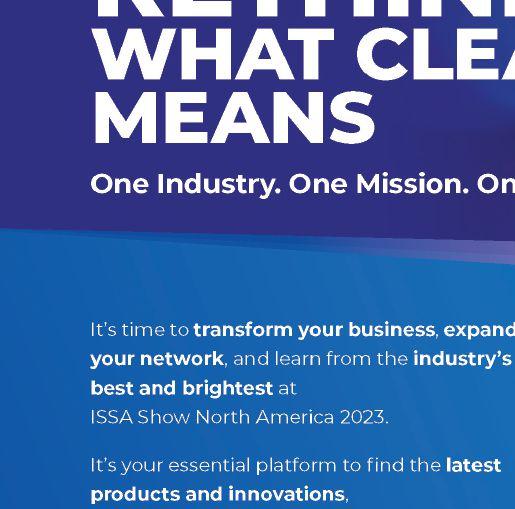
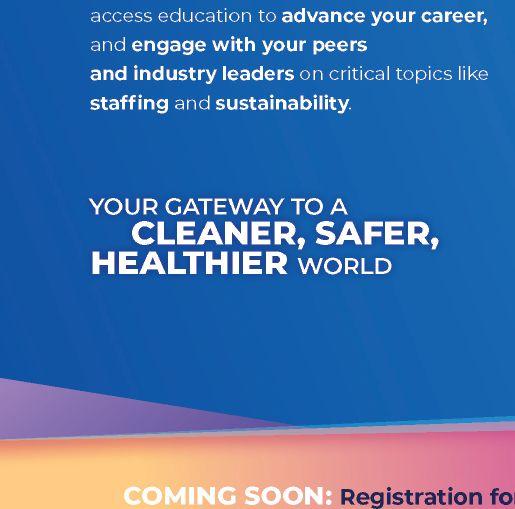

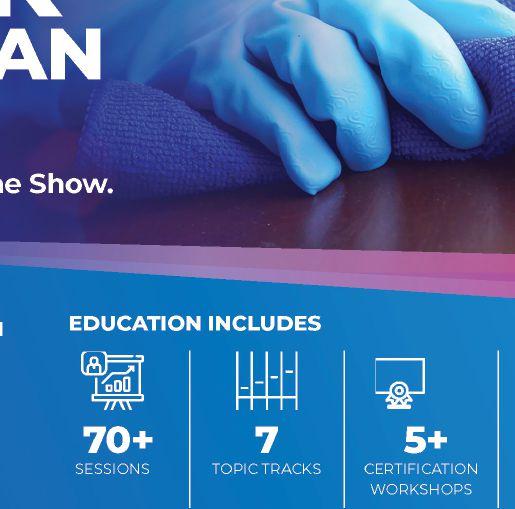



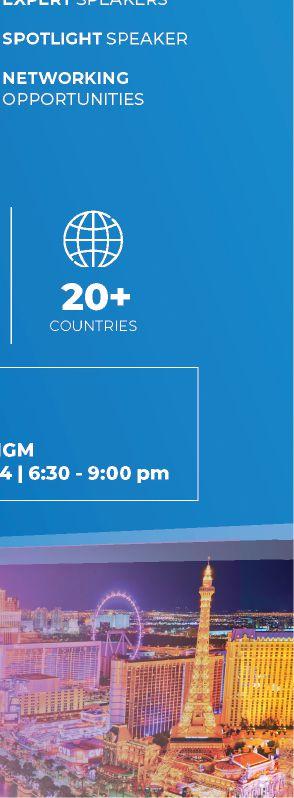


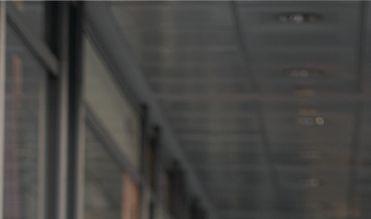



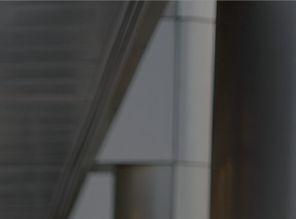

BY JOHN E. KELLEY






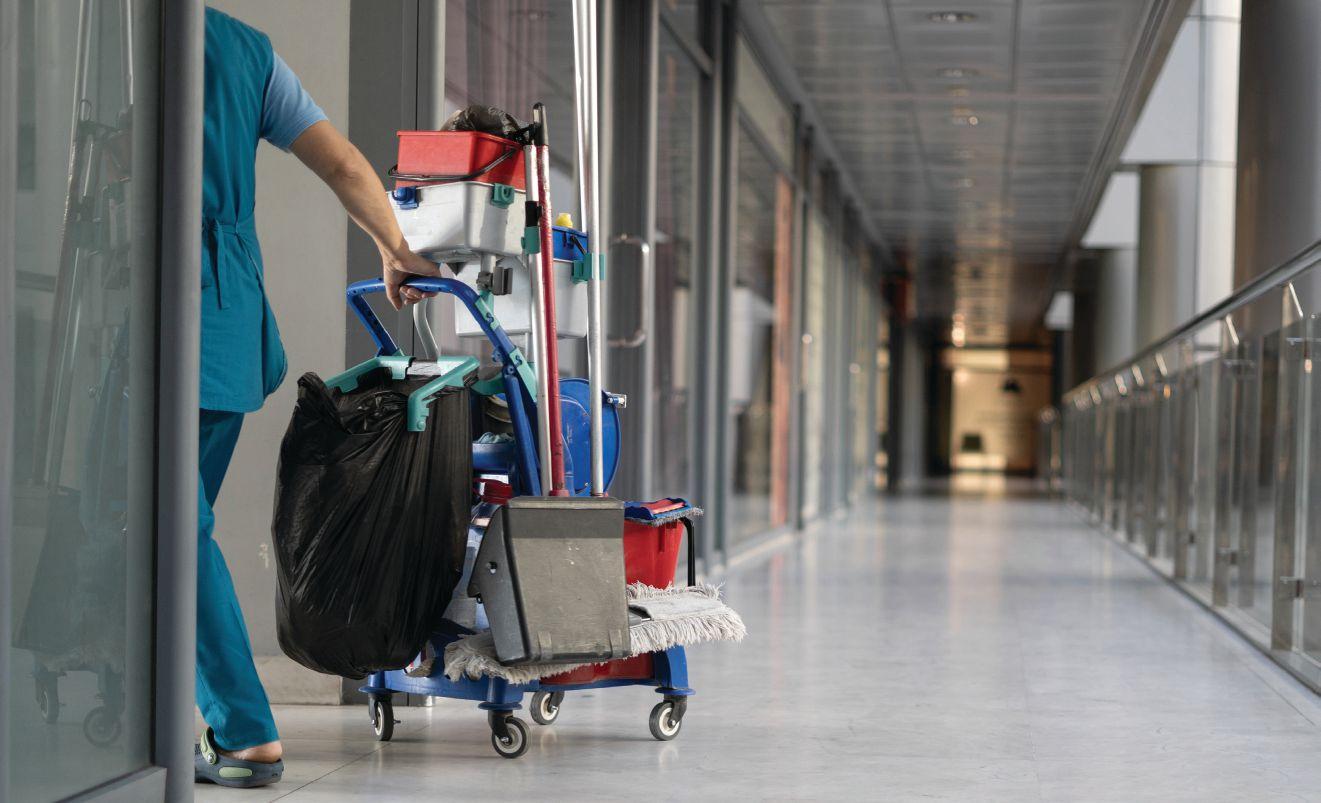
Business as usual is anything but usual.
What used to work no longer works. How assets and supplier partners are managed has changed.
The pandemic made everyone wiser and better informed about how to respond to pandemic events and their impact on facilities. There are also more tools at the facility management team’s disposal and a greater understanding of what a pandemic is and how it affects everything in the soft services and FM industries.
In 2020, there were high expectations of an exciting new year with plans to improve employee experience, add new technologies, implement innovations and improve operational efficiencies. But by the end of the second quarter, the realization that most, if not all, these goals were not going to be achieved, and the future was not clear as to what the impact of COVID-19 would have on corporate real estate. These conversations quickly took over, affecting everything about the built environment; and not surprisingly some of these theories ended up not being 100 percent true:
COVID-19 is something that can be contracted by touch.
❍ As more was learned about COVID-19 and how it is contracted, protocols were updated.
Disinfect every surface, everywhere.
❍ This made sense initially, but as the world learned COVID-19 was airborne, the focus changed. However, disinfecting high touch points continues and with positive results.
Remote working and remote education can work.
❍ This worked with a few tweaks for schedules and some improved communication tools, and corporations spent a great deal of money on technology, systems upgrades, desks, monitors, chairs, keyboards and other equipment to outfit their now-remote workforce so their firms could keep their businesses operational.
❍ Education brought new challenges; computers for children in an at-home virtual school setting and ensuring Wi-Fi bandwidth was adequate so everyone including parents and guardians could continue to work while children learned.
❍ In both cases, there was a loss of social contact that seems to have hurt social skills in general.
Protecting, servicing and caring for the built environment is changing rapidly.
❍ Supporting clients in getting their employees back into the office was a priority, but many parts of the world took another hit with COVID-19 variants and by employees who wanted to continue to work remotely.
❍ Many firms continued to service their facilities as in the past but with an added enhanced service to help their employees feel and stay healthy during the transition back to a new business as usual in the workplace.
The built environment continues evolving as the world works to help businesses bring their employees back to the office.
The conversation also changed a year or more into the pandemic:
Cleaning for appearance is not a best practice.
❍ The janitorial industry had been cleaning for appearance for decades, in part because it was cheaper and much faster.
❍ Disinfection of surfaces requires dwell time for the disinfectant to work before surfaces can be wiped clean and dry.
❍ This has previously happened in restrooms and cafeterias but not always in office areas.
COVID-19 is an airborne pathogen.
❍ COVID-19 is an airborne pathogen and that changed the focus to cleaning the air coming into the built environment.
❍ Adding fresh air by opening windows helped; however, most office buildings have sealed windows that could not be opened. Increasing the number of air exchanges could improve the overall indoor air quality, and that seemed to work.
Disinfecting high touch points is a best practice.
❍ This is still being done in many facilities, but not as much as when COVID-19 started.
Indoor air quality is a major focus.
❍ Upgrading air handler units with UV light, thermal sterilization, ionic purifiers, ozone generators and other technologies were implemented to help improve indoor air quality.
❍ Sensors to monitor and detect poor indoor air quality were starting to be added to the built environment.

Throughout the pandemic and into the present, everything was tried:
Hygiene theater
❍ There was a lot of wiping and disinfecting, wasting limited resources and incurring an added expense.
❍ It kept the janitorial staff employed, which was positive for that industry.
❍ In the end, the expense outweighed the value to building occupants.
Drones spraying electrostatic disinfectants.
❍ This worked in large arenas and stadiums.
❍ It was not a great solution for schools and office spaces.
Automated robotic equipment that would spray disinfectants throughout a facility.
❍ This was expensive, and although there were some great applications for this process, it did not work everywhere.
❍ Schools and some manufacturing facilities benefited, but this is not the case for commercial office buildings.
Applying antimicrobial coatings to surfaces.
❍ This was used widely across many industries.
❍ It was cost-effective, but the efficacy was not clear as every surface is used and cleaned differently, and the wear of the antimicrobial coating was uncertain.
❍ These came in two basic types:
• A film that was applied to surfaces that could be peeled off and replaced;
• A chemical that could be applied to a surface, allowed to dry, and then cleaned daily to remove buildup.

ɋ Masks and hand sanitizer were a hot commodity and provided some protection: however, masks were not popular.
ɋ There were many other technologies and innovations used to improve the cleanliness of facilities, which offered a mixed bag of results.
One positive outcome of the extra focus on cleaning was transiting from cleaning for appearance to cleaning for health. Based on results from April 2020, the cold and flu season saw a 99 percent reduction from the previous year in the number of individuals getting the cold or flu during the influenza season, when compared to the previous years despite similar levels of testing.
Many factors attributed to the low infection rates during the influenza season: Lockdowns, wearing masks, improved cleaning and disinfection of surfaces, more focus on cleaning high touch points and an enhanced focus on personal hygiene. All of these are best practices, but not all are needed all the time.
Because some of the clients are still feeling the post-pandemic pains and others have pivoted how they operate their organizations and run their businesses, how can FM help clients with these escalating costs both now and into the future, while building confidence in their workforce to return to the office?
In a time when change is not only happening quickly but has also become a part of business as usual, the FM industry and their supplier partners must be prepared for the future.
In the years since the pandemic began, there has been an improved focus on cleaning for health and how it will address a pandemic, influenza infection rates and the overall improved health of the population. Today, there is a pullback on most, if not all, enhanced cleaning services implemented to fight virus spread as fears diminish. These enhanced services have increased the operating costs, and most of these costs were not budgeted. To add to this financial dilemma, building occupancy is still low, while building owners and FMs are adding enhanced services and employee experience features to draw employees back to the office. Of course, some industry verticals never saw a drop in occupancy because of what they do, mainly in manufacturing, pharmaceutical manufacturing, medical manufacturing and others.
ɋ Consolidate resources: Combine services, supplier partners and processes, and leverage shared assets, tools and technology to help offset some of these cost increases.
ɋ Evaluate scope and frequencies: Look at the scope and frequency of services to enhance, reduce or even eliminate unneeded services, allowing owners to offer the best fit for the best value in services needed to meet the new occupancy and space utilization trends.
ɋ Embrace new technologies: There are new products and solutions that can drive efficiencies in soft services such as sensors to alert service providers of spaces being occupied or which desks are being used each day. These sensors can also tell service providers when a restroom may need service or when a dispenser is low on supplies.
ɋ Utilize new and improved equipment: Equipment has also come a long way, and with the proper use of some of these new pieces of equipment, the need for periodic and deep cleaning services can be reduced or even eliminated. These services normally happen quarterly, semi-annually, or annually and come with an additional cost; however, by doing a better job of cleaning each day, these periodic services should not be needed as often.







“The pace of change has never been this fast, yet it will never be this slow again.”






Service evaluations: Until service providers know what a facility’s needs are, it will be difficult to meet those needs and maintain a safe, healthy and productive work environment. Many scopes of work were written long before the pandemic, and most facilities are not being used in the same way they were 10 or 20 years ago or even how they were being used during the pandemic. Occupancy patterns have changed with peaks and valleys throughout the week, with very low occupancy levels on Mondays and Fridays and a 50-200 percent increase in occupancy levels on Tuesdays, Wednesdays and Thursdays. A service level evaluation will help to identify where and when the highest space utilization occurs and based on these occupancy trends, will allowing supplier partners to focus their time and resources to clean and maintain the facilities that have been entrusted to FM.
The expectation is that the FM industry must be better prepared, supplier partners need to be industry leaders, and customers need to watch their employee habits and motivators. As a group all three parties must become more agile, with solutions ready to be put in place to reduce costs quickly as the economic and social landscape changes. What is uncertain is when is when the next pandemic will strike, but there is a good chance that there will be a next time.
In this century, there has already been:
COVID-19 (2019-present)
Monkeypox (2022)
Black fungus (2021)
MERS (2021)
Measles (2017-2019)
Zika virus (2015-2016)
Ebola virus (2013-2016)
Haiti cholera outbreak (2010)
Swine flu (2009-2010)
SARS (2002-004)
Something is coming, and it is not if, but when? Organizations must develop a plan for how they want to respond to a new pandemic and implementing technology to drive service levels based on occupancy and space utilization. These new tools will help FMs understand occupancy patterns today, control costs tomorrow, improve the effectiveness of limited resources, and enhance the health and well-being of building occupants for years to come.
In a time when change is not only happening quickly but has also become a part of business as usual, the FM industry and their supplier partners must be prepared for the future. Canadian Prime Minister Justin Trudeau said the following: “The pace of change has never been this fast, yet it will never be this slow again.” FM suppliers must be industry leading in their respective fi elds by continually learning and observing and by being bold, creative and agile. Showing value and being what trusted advisors should be, industry leading, forward thinking and most of all agile is what clients want and expect. The future is uncertain, but the FM industry is ready and able to meet the challenges head on. FMJ

John E.Kelley, FMP, CBSE, has 24 years in the janitorial industry as a senior vice president, two years at CBRE as a strategic sourcing manager, and six years at JLL as a global janitorial operations subject matter expert.
RESOURCES
pcimag.com/articles/107649-a-guide-to-antimicrobial-coatings nature.com/articles/s41579-021-00642-4 nature.com/articles/d41586-020-03519-3
weforum.org/agenda/2018/01/pm-keynote-remarks-for-world-economicforum-2018/
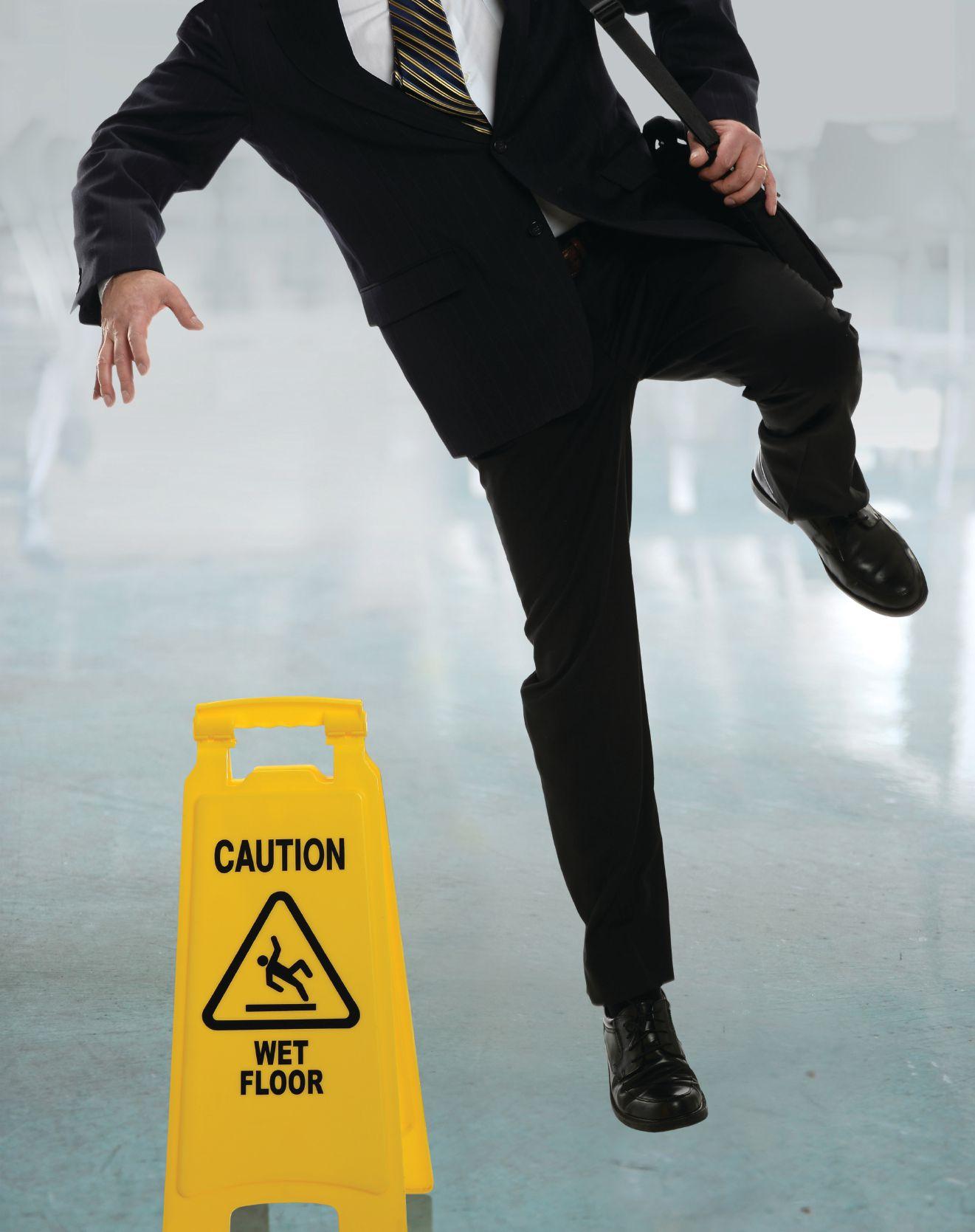

BY JEFF BAKER
Slips and falls are like a secret tax that everyone must pay. For the people who experience the accident, falls can mean time away from work, reduced income, pain, inconvenience and long-term disability.
Accidents can impact companies too — from employee morale and productivity to brand reputation. This is in addition to hard costs like medical expenses, increased insurance premiums and potentially costly litigation. These accidents can also sap staff morale and hamper guests’ confidence. No one entering a business should have to wonder if they are safe.
Slips and falls have long been a serious problem and the dangers continue to increase. According to the Consumer Product Safety Commission, inappropriate flooring contributes to 2 million falls. In 2021, work-related deaths from slips and falls increased 5.6 percent. According to a 2021 Liberty Mutual Insurance Survey, falls on the same level were the second leading cause of injury, costing more than US$10.5 billion. Falls to a lower level were the third leading cause of injury, costing US$6.2 billion. Part of the problem is old-fashioned denial and complacency. Company leadership may believe slips and falls are problems for other facilities, not theirs. That may be true for a while, but eventually, a risky environment will likely cause an accident. At that point, companies must respond reactively.
It is also important for leaders to recognize that going months without an accident only implies a facility is safe. To ensure safety, facility managers and others must assess actual risks and develop solutions that measurably lower them. Taking proactive measures is the only way to truly reduce obvious slip-and-fall risks to people, property and reputation.

Conduct a walking surface assessment
Few things are scarier in business than unknown safety hazards. Most companies have implemented some programs to prevent slips and falls, but they may not be paying close attention to the many nuances that can raise or lower risk. For example, some non-slip flooring materials may be effective when dry but lose their non-slip characteristics when wet or coated in other substances, such as grease or cleaning agents.
Another issue is durability. Some materials deteriorate or erode rapidly and can increase the chance of a slip-and-fall accident as they age. How often should they be replaced and who is checking?
To understand actual risks and begin developing solutions, FMs and safety teams must audit facilities routinely. A slow, careful walk through the building sets the stage to observe, analyze and document potential risks. It is also important to understand how employees and/or guests circulate through the building. Where are major traffic patterns? What type of environment is this — are people rushed or taking their time? Are they transitioning from outdoors to indoors? What are the walking surfaces in the different areas?
Talk to employees: A single safety audit will only capture a snapshot in time. That is why it is so important to listen to employees during the walkthrough. Ask about the kinds of problems they may have witnessed or encountered. Workers are usually well-attuned to the risks — self-preservation is a critical instinct. Lean on their insights.
Assess movement: Start with high-traffic areas and radiate from there. Be sure to identify the types of traffic. Do employees and guests move in only one direction or is traffic bidirectional? People moving both ways can increase risks as they may slip while trying to avoid a collision. Intersections can also be problematic. Delineate the types of traffic. In addition to employees on foot, are there carts, hand trucks or forklifts? Heavy carts can be difficult to stop, particularly on a slippery surface, and that can cause accidents.
Watch for wet and slippery surfaces: Water, soap, industrial lubricants and even cleaning detergents can make walking surfaces particularly slick in some areas. Does the facility have faucets or hand sanitizer stations that drip, or areas that are at a higher risk for spilled substances? Pay close attention to entrances and exits. How are those areas managed during
foul weather? Even if the surface is dry at that moment, what is the potential for water or other substances to accumulate? Who cleans it up and on what schedule? Look for round and trench drains and other areas where liquids can collect. Drains may constitute a trip-and-fall hazard, especially if there is an uneven surface. Sometimes water can pool without drainage — puddles are an obvious risk. Are there areas that are often slippery? Again, employees will help point them out. There are other clues, such as warning signage or even caution tape that lets people know an area is potentially dangerous. Keep in mind that warning signs generally do not increase safety or reduce liability. These are short-term band-aids that only slightly mitigate potentially serious risks.
Check elevated surfaces: All the risks cited above are only multiplied at elevation. Platforms, catwalks, mezzanines, crossovers, stairs, ladders and other elevated structures should be a top priority for any risk control efforts. In addition to flooring concerns, handrails should be included in walk through reviews on elevated surfaces. In addition to slips and falls, be aware of any potential trip hazards in elevated areas. Neoprene mats, used to increase safety, can
get rolled up, increasing risk. Like warning signage, mats may only provide the illusion of safety.
Review cleaning protocols: In a post-pandemic world, cleaning more frequently and with harsher chemicals is the new norm. During a safety review or walkthrough, understanding both how areas get dirty and how areas are cleaned are key pieces of information.
Note which contaminants accumulate on floors — water, oil or other sticky substances — and how (and when) they are being cleaned. What types of cleaning products are being used? Bleach, for example, can cut through grease and kill germs, but it may also break down a surface’s anti-slip properties.
Bringing in a third-party expert for an annual audit is one of the best ways to spot safety issues. This helps break the complacency trap and may help spot dangers that internal people have become accustomed to.
After conducting a thorough audit and analysis, it is time to choose the appropriate surfaces to remediate any issues. Do not make assumptions about which flooring types provide the best protection against slips and falls. Some of these biases are
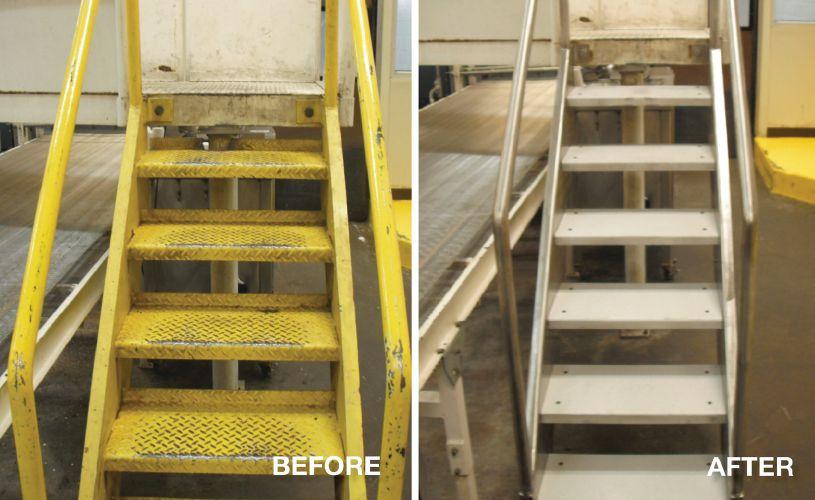
based purely on appearances and reputation. For example, diamond plate is everywhere, and with its raised bumps, looks safe enough. Diamond plate loses most of its non-slip properties when wet or greasy, providing only the illusion of safety.
That is why it is so important to rely on objective measurements to select the most appropriate flooring materials. The industry standard is the coefficient of friction (COF), which measures how much resistance two surfaces encounter when moving across each other, such as a shoe moving across a wet floor.
COF is measured on a 0 to 1 scale. The closer the material comes to 1, the greater its ability to prevent slips and falls. The National Floor Safety Institute notes that a COF of 0.4 or less is unsafe, while a COF of 0.6 or higher is considered safer.
Make sure the flooring’s COF remains high under the specific conditions people may encounter in the facility. If the materials do not maintain a high COF when wet, they are not a good solution.
Choosing a poor non-slip flooring product may be worse than not installing any at all. Employees and guests can have misplaced confidence in a material’s ability to keep them safe. When people believe a surface is slip-resistant, they may take less care when walking across it.
In addition to diamond plate, there are other materials that can be problematic:
• Non-slip tape
Tape can be effective for a little while, but it has poor durability. Someone must replace the tape, possibly every few hours for high-traffic areas, and that is an additional labor cost. Even worse, tape can get kicked up, creating an uneven surface and another trip hazard.
• Serrated stair treads
There are also materials that can help reduce slip-and-fall risk but pose other threats. Serrated, anti-slip stair treads can support better slip resistance, but the danger is in the name — knives are often serrated. If someone falls on one of these surfaces, they risk significant injury.





One of the best anti-slip surfaces is coated metal, which has a high COF, even when wet. In addition, coated metal is quite durable, providing protection for 10 years or longer. Metal-bonded surface coatings create thousands of tiny, random surface peaks and valleys to generate high COF. The peaks give the material its anti-slip properties and maintain them even after years of wear. The valleys allow water and other liquids to drop below the walking surface, mitigating their risks.
People do not always associate cleaning with safety, but maintaining a clean environment is an important part of any slip-and-fall prevention strategy. Even with the safest surfaces, organizations should make a point of frequently cleaning up excess water and oils. Choosing the right cleaner is important because harsh chemicals can increase wear and over time reduce the surface’s safety profile. In some cases, cleaners can even delaminate flooring.
Cleaning priorities closely parallel the areas of focus during the safety audit: elevated surfaces, wet areas and frequently contaminated flooring. These should be cleaned often to ensure safe walking surfaces.
The ideal solution is a water-based cleaner and degreaser that is both safe and powerful. This cleaner can be used effectively in hotels, restaurants and other public buildings. The cleaning process should remove heavy soils, without leaving residues which can drive bacteria growth or generate a slip hazard.
FMs and other leadership have a business and ethical obligation to make their spaces as safe as possible. By using proactive measures to mitigate the risk of slips and falls, FMs will better protect employees and guests, help preserve an organization’s brand and prevent costly accidents. FMJ
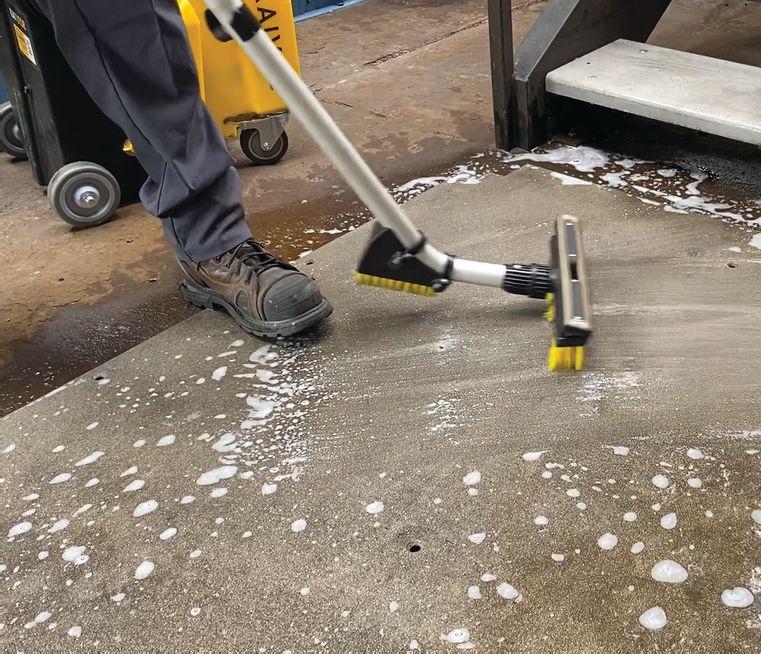

Jeff Baker is the sales director at SLIPNOT, a manufacturer of high-traction safety flooring. Baker has more than 40 years of experience in the environmental, health and safety space. He has helped improve safety at numerous facilities around the world. Baker holds a bachelor’s degree in civil engineering from Wayne State University and a bachelor’s degree in chemistry from the Lawrence Institute of Technology.
Photos courtesy of SLIPNOT.
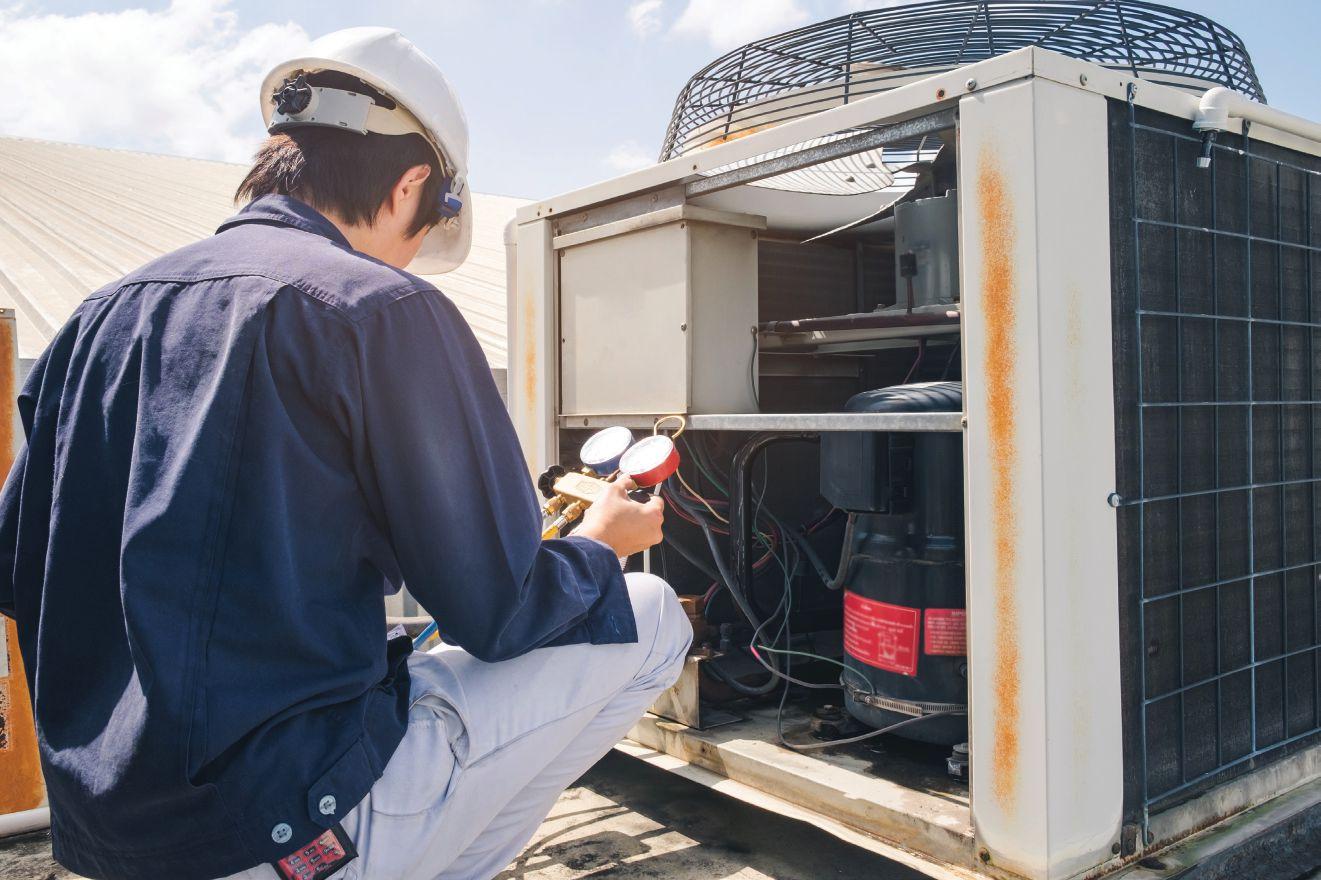

BY DR. DEREK HILLESTAD
Facility managers play a critical role in ensuring the functionality, comfort, safety, sustainability and efficiency of their built environment through various risk management efforts. One way facility managers can help identify and correct potential risks is through a facility condition assessment (FCA). While these assessments are typically utilized for both operational and financial decision making — such as asset management, capital planning and portfolio benchmarking — they also provide a deeper understanding of a facility’s current state while identifying potential risks like outdated or faulty systems that can negatively impact the health and safety of staff, occupants and the surrounding community.
FCAs are an analysis of a building’s condition as it relates to its age, design, construction methods, materials and systems. To begin, FCAs require the assessor to gather information on the building’s original construction and any renovations or upgrades that have been performed over its lifespan, and in some cases, an estimate of probable costs associated with potential projects. For facility owners and managers, it is best to provide documentation to assist with the assessment development, including:
• Warranty information
• Safety inspection records
• Records indicating the age of material building systems, such as the roof, chillers, boilers, electrical, etc.
• All previous FCA reports
• Pending proposals or contracts for equipment replacement
• A description of future improvements planned
• Disability access survey and status of any improvements
• Drawings and specifications, including as-built or construction
While learning a building through drawings and documentation is a good starting point to develop an understanding of the facility’s history and current state, a physical site walkthrough helps the facility condition assessor ensure accuracy of the results. It also identifies and confirms additions and renovations that have occurred since the date stamped on drawings and creates a more realistic snapshot of the current conditions. In addition, capture technology should be used to include typical elevations of the building’s exterior, site work, parking area, roofing, structural systems, plumbing, HVAC, electrical systems, conveyance systems, life safety systems and any special or unusual conditions.
When complete, FMs will receive an in-depth condition report, including photographic evidence of the findings. Though not typically included in the standard scope, FMs can also request the report to include additional testing and review. These include engineering calculations to determine assets or systems compliance with design requirements, destructive testing, opinions on security posture of the facility and environmental assessments such as asbestos, potable water quality and hazardous wastes. It is important to remember that these assessments represent a snapshot in time, so cost projections can fluctuate based on changing economic or market conditions.
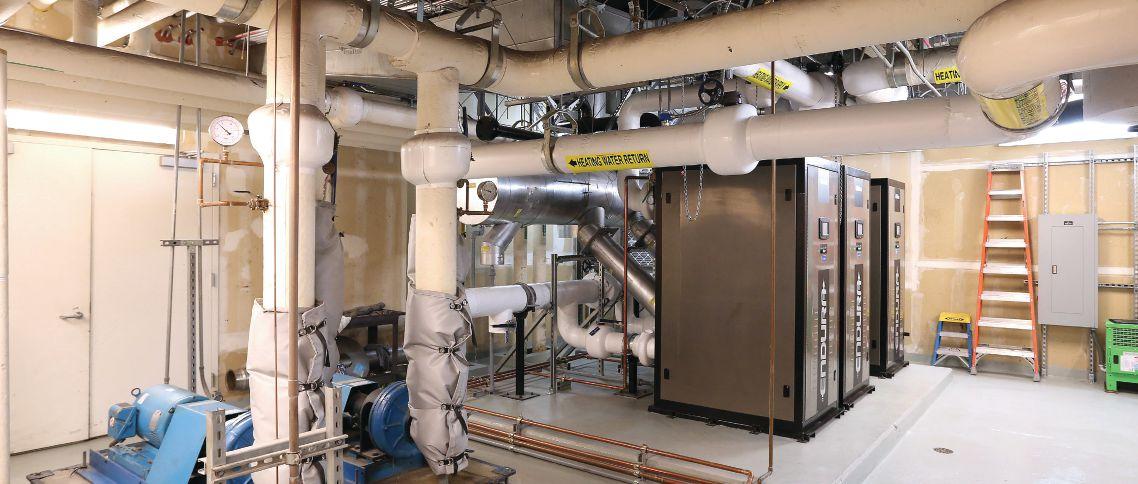
With an FCA in hand, FMs can be better equipped to make strategic decisions on capital renewal, budget planning and funding allocations to determine a course of action that addresses required upgrades to the facility.
FCAs can be an important starting point to measure other strategic facility planning initiatives such as system reliability, uptime, operability, maintainability, total cost of ownership, life cycle costing, energy management and master facilities planning — all of which can impact an FM’s risk management efforts related to a building’s performance. The building’s condition gives a measure of the effectiveness of current maintenance programs because it determines useful life of components or systems and compares it with full economic life expected, given good maintenance.
When done systematically and well, FCAs can assist FM leaders in identifying assets, materials and systems which are near or past useful life and pose a risk for performance failure. For example, if stained ceiling tiles are present throughout multiple spaces within a building, further investigation can reveal many potential larger problems, such as roofing failure, leaking sprinkler pipes or uninsulated HVAC equipment.
ology. Regarding FCAs, external experts help fill in the knowledge gaps, but only if the C-suite is honest about their internal capabilities (and knowledge blind spots).
From there, FMs should conduct condition assessments every three years, or conduct a portion of the overall portfolio annually. If a facility’s staff has a complete understanding of all areas covered within an FCA, they can proceed by conducting the assessment in-house. However, partnering with a service provider who specializes in FCAs, especially for a given industry or building type, can help ensure accuracy, organization and thoroughness of the results. A FCA team can comprise of a stand-alone service provider or a combination of architectural, engineering, energy efficiency or asset management firm. Firms with a multidisciplinary approach and composition of team members with varying areas of expertise are best positioned to deliver the most effective FCA services.
Firms with a multidisciplinary approach and composition of team members with varying areas of expertise are best positioned to deliver the most effective FCA services.
With a litigious society where plenty of risks exist, risks are present throughout both the exterior and interior of a building’s footprint. Sidewalks, entrances and exterior walkways that are uneven, damaged or otherwise in poor condition could enable tripping hazards. Interior spaces that are not compliant with accessibility standards (such as the European Accessibility Act or Americans with Disabilities Act) can introduce risks for individuals. This is especially important for primary and secondary schools and health care facilities to consider protecting the safety of students and patients. FMs can also stay ahead of challenging conversations with code officials that frequent their buildings by identifying obstructed pathways, unclean mechanical rooms and unsigned emergency exits.
FCAs can identify these potential risks and provide FMs with a clear path forward for mitigation and correction. A good FCA can also help with emergency planning and readiness efforts by verifying emergency annunciation technology, such as public address system, security card readers and cameras that are operable and in good working condition — providing yet another level of risk management.
FMs can plan for and incorporate FCAs into their risk management program by determining the internal knowledge of staff as it relates to various assets, systems and areas of expertise. It is common for FMs and engineers to be a jack of all trades. For example, if the chief engineer carries a Professional Engineer (PE) license in mechanical systems, there could be value in engaging an architectural, electrical and structural expert to assist with rounding out the FCA method-
Another aspect to consider if choosing to partner with a service provider is one that offers forward-thinking technology to house information covering the facility’s construction and renovation history, maintenance, operations and utilities and FCA findings. Such technology is also helpful for FMs to assess their assets in one place, evaluate potential investments, define long-term planning, measure facility performance and ensure any projects conducted, especially those resulting from findings from a condition assessment, are efficient and achieve the organization’s goals.
Regardless of which FMs take to conduct FCAs, it is important to utilize the findings as a part of a risk management program. While these assessments are a first step for asset management, capital planning and portfolio benchmarking, they also help FMs identify potential risks that could result in safety violations, health consequences for building occupants or expensive facility damage if not corrected in time.
Making FCAs a risk management tool can help FMs and their organizations be better equipped to maintain the integrity, safety, health, sustainability and efficiency for all occupants, staff and the surrounding community. FMJ

Derek Hillestad, Ph.D., CFM, is a senior facilities analyst of SitelogIQ Midwest. Hillestad has more than 22 years of experience with architectural, mechanical, electrical, and energy systems for new and existing facility environments. Having been involved in over 50 facilities-related projects, his industry knowledge includes a strong background in field survey and analysis functions as well as operational optimization of the facilities portfolio. Hillstead earned his doctorate in construction management from Arizona State University. He is an active IFMA member.
























ACOUSTICAL/SOUND MASKING
Biamp Systems | biamp.com
Lencore Acoustics LLC | lencore.com
LogiSon Acoustic Network | logison.com
AED/HEALTH AND SAFETY
Zoll | zoll.com
BUILDING MAINTENANCE/REPAIR/RESTORATION
Otis Elevator | otis.com
CARPET/FLOORING/TEXTILES
MasterCorp | mastercorp.com
milliCare Floor & Textile Care | millicare.com
Tarkett | tarkettna.com
CEILINGS/CEILING CARE
Armstrong World Industries | armstrong.com
DISASTER RECOVERY/EMERGENCY RESPONSE
BELFOR USA Group Inc. | belforusa.com
Legend Brands | legendbrands.com
EDUCATION
Capitol Technology University | captechu.edu
ELECTRICAL/WIRE MANAGEMENT
FreeAxez LLC | freeaxez.com
Schneider Electric | schneider-electric.com
ENERGY SOLUTIONS/MANAGEMENT
Ebtron | ebtron.com
Schneider Electric | schneider-electric.com
FLOORING INSTALLATION/MAINTENANCE
Corporate Care | corporatecare.com
FM CONSULTANTS/SERVICES/PROVIDERS
ABM | www.abm.com
Aerotek | aerotek.com
Alghanim International | falghanim.com
Al-Hajry Overseas Co. LTD. | alhajry-overseas.com.sa
Al Shirawi Facilities Management | alshirawifm.com
Canadian Base Operators | canadianbaseoperators.com
EMCOR Facilities Services | emcorfacilities.com
Facility Engineering Associates, P.C. | feapc.com
Leadec | usa.leadec-services.com
Linc Facility Services. Doha. Qatar | abm.com
ODP Business Solutions | odpbusiness.com
OpenWorks | openworksweb.com
Renaissance Services SAOG | renaissanceservices.com
Sodexo | sodexousa.com
SRACO Company | sraco.com.sa
Staples | staplesadvantage.com
The Building People | thebuildingpeople.com
FM HARDWARE
IAdea | iadea.com
FM SOFTWARE
FM:Systems Inc. | fmsystems.com
IBM | ibm.com/us-en
Eptura | eptura.com
Officespace Software| officespacesoftware.com
JLL Technologies | jllt.com
Planon | planonsoftware.com
FURNITURE
CORT | cort.com
Davies Office Inc. | daviesoffice.com
Versteel | versteel.com
INTEGRATED FACILITIES MANAGEMENT
Al Asmakh A to Z Services Group | asmakh-atoz.com
ESFM | esfm-usa.com
United Facilities Management | ufm.com.kw
JANITORIAL SERVICES/CLEANING PRODUCTS
Excel Dryer | exceldryer.com
R-Zero | rzero.com
Tork, an Essity Brand | torkglobal.com
Vaask | vaask.com
LANDSCAPE/MAINTENANCE/PLANTS/ SERVICES/SUPPLIES
Ambius | ambius.com
RESTROOM PRODUCTS
Kimberly-Clark Professional | kcprofessional.com/en-us
SECURITY
Kastle Systems | kastle.com
Securitas Security Services USA | securitasinc.com
TECHNOLOGY SOFTWARE TOOLS
ARC Facilities | arcfacilities.com
SCLogic | SCLogic.com
WASTE MANAGEMENT
Republic Services | republicservices.com

COMPANY NAME: FM:Systems
EXPERTISE: FM Software
CSP LEVEL: Silver
CSP SINCE: 1998
WEBSITE: fmsystems.com
How is FM:Systems responding to the ever-changing needs of the FM world?
FM:Systems is responding to a rapidly changing landscape by engaging with our clients and industry leaders to anticipate the challenges that lie ahead. We are looking to smarter technology, especially sensor technology, and more insightful analytics to manage and measure facility performance, giving FMs the business intelligence they need to be proactive, not reactive. We are conducting our own research studies to understand how trends are growing or changing and are keenly focused on how trends differ across market segments, such as health care or the public sector. We don’t believe there is a one-sizefits-all approach to the future, and we want to ensure we are providing informed solutions within industries. We are seeking out new partners, new integration opportunities, and new ways to measure facility and workplace performance, giving FMs an increasingly rich data set by which to assess their obstacles and plan for the future.
What innovations are FM:Systems working on that will help FMs be more successful in their roles?
We are heavily focused on both the underlying workplace data and the outward user experience as the pillars of a successful post-pandemic workplace. Workplace data and multi-data-point analysis drive smarter decision making at a time when utilization and occupancy are highly unpredictable. We are continually advancing our data models and improving the efficiency and processing of complex data sets to deliver real-time or near real-time insights on building occupancy and overall facility performance. While the complexity of data ensures a highly efficient facility, it is the simplicity of the occupant experience that makes a space high performing in terms of utilization and ROI. FM:Systems embraces the potential in the hybrid workplace, and we believe intuitive digital experiences are a requirement for success. Technology solutions that seamlessly connect employees with their workplace and one another, through interactive floorplans and integrated calendars, will not only drive utilization of the space, but it will also promote the kind of high-quality collaboration and engagement that drives businesses forward.

COMPANY NAME: The Building People
EXPERTISE: Real Estate
CSP LEVEL: Silver
CSP SINCE: 2023
WEBSITE: thebuildingpeople.com
How is The Building People responding to the ever-changing needs of the FM world?
Our biggest differentiator is that we look at a total portfolio solution. There are a lot of companies that focus on specific solutions in the workplace, facilities, energy or technology. We have realized the importance of technology, buildings and people working together as one cohesive portfolio solution to enhance organizational alignment. This is the single most important component for success because technology, buildings and people are not autonomous; they must be aligned together for the benefit of the organization to meet its overall mission.
You can make a building smart with technology, but that doesn’t mean it will perform more efficiently. And then, how are people adapting to new technologies? People adapt to change differently. The early adopters are always looking for the newest technology and wanting to use it, while the laggards are still trying to figure out if they want to use and implement it. We focus on taking technology and implementing it into the building to its full capacity, making sure the people are adapting to the technology to ensure it is fully implementable.
How is The Building People changing the FM industry?
We’re changing the FM industry by looking at the entire solution and the total life cycle of facilities versus looking at a segment of the life cycle. We’re not just paying attention to managing or operating your building, but your entire facilities management solution. We don’t look at facilities on a prescriptive basis. Prescriptive solutions are not changing the way FM is delivered. We implement a strategic approach to facility management delivery. We look at the entire facility and figure out how to improve it. From day one, we’ve strived to find operational efficiency and how we can save the occupant money while reducing energy and moving towards a more automated format, all without sacrificing reliability and credibility in the building. You don’t have to pick between energy savings and operational efficiency. You should get both. We’re bringing that total solution to the customer.



BY DEREK ORT T




Denying that
the
world is facing a
changing climate is naïve on the part of any facility manager. Recent weather events have proven that traditional weather patterns are a thing of the past regardless of geographic location.
Preparing a facility in anticipation of any weather event to maximize safety and minimize damage to protect people and property is a wise move. Doing so includes conducting regular vulnerability assessments and developing a robust weather response plan. While severe weather of any type cannot be avoided, how businesses respond before, during and after each event will directly impact the overall outcome, including how well they keep personnel safe, safeguard assets and whether they can keep their doors open.
Despite the devastating effects of severe weather, many businesses operate with outdated or generic weather plans that should be more customized and extensive, especially in the face of a changing climate.
A robust and actionable business continuity and emergency response plan that addresses vulnerabilities can help mitigate operational downtime and the impact of severe weather events.
vulnerability assessments is vital
As the adage goes, “hope is not a strategy.” It is not a matter of if a severe weather event will strike; it is a matter of when. Hoping for the best-case scenario when unpredictable Mother Nature is involved is not the best course of action.
Vulnerability assessments are the first step in creating a comprehensive and effective weather response plan. The overall objective of creating a vulnerability assessment is to
establish a connection between safety, business continuity and the bottom line.
When done correctly, a vulnerability assessment can help quantify an organization’s overall exposure to blatant and unforeseen weather risks. Furthermore, it allows a business to take the next step and address each risk regarding preparation and probability.
Implementing a vulnerability assessment requires a holistic view by examining the scope, gathering supporting and conflicting data, and poking holes before a weather disaster strikes.
From there, reviewing any appropriate procedures or policies currently in place and interviewing relevant system administrators to gain a cross-section of perspectives is imperative. Next, analyze any data during the assessment phase and identify issues and exposures that must be addressed. Securing that information also allows the opportunity for review later, which gives organizations the capacity to analyze risks and trends over time.
Vulnerability assessments will help resolve existing soft spots by determining if an exposure source is essential to the organization’s operation. If it is not critical, the best action may be to disable it. On the other hand, if the source is deemed necessary, it should be upgraded to eliminate any potential risk.
In situations where an upgrade is not possible, relevant personnel management should be made aware of the risk the system presents before the consequence manifests itself in the form of any disaster, weather included.
Vulnerability assessments should be conducted frequently, especially in today’s changing climate. When an unusual weather event happens somewhere unexpected, it might be a good time to go through
the exercise again to be prepared for any “what if” scenarios.
Anticipating the worst possible outcome requires that FMs have a thorough understanding of the capacities and limitations of their infrastructure.
Weather response plans should be dynamic and updated frequently — not left on a shelf to collect dust. They also should not be cookie-cutter because it is not “one size fits all.” Instead, FMs and their teams should develop these plans keeping the specific nuances of a particular business or industry in mind.
Even if a business or organization is not in a region affected by severe weather, customers, partners or vendors may still be impacted, so it is essential to have a plan to anticipate those impacts.
Regardless of the business, industry or geographical area, below are core steps facility managers and their teams should take as they put together their company’s plan to protect their people and property.
Access to real-time and accurate forecasts is crucial in planning for severe weather. Detailing how data will be accessed and from what sources it should be accessed should be documented in any weather response plan. Are internal resources and services available to provide in-house data and intelligence or would it make sense to partner with a third party that can provide up-to-theminute weather alerts tailored specifically to a particular business? Weather intelligence services deliver a multi-layered approach
that helps FMs and other administrators make business decisions more confidently when faced with a severe weather threat. This type of timely information can guide when to act and when not to.
When developing a weather response plan, it is important to consider relationships with contractors, utility service providers, weather intelligence supplies and vendors to create a support network. For example, suppose there is a loss of power due to high winds. In that case, FMs should have at their fingertips the contact information of a provider who can give accurate time estimates so that generator output can be appropriately managed. Having these details documented in a weather response plan can minimize downtime and, in turn, productivity.
Be sure to make these vital connections before a severe weather event. Instead, get to know service providers well ahead of expected (or unexpected) weather events. Having those professional relationships in place can help mitigate loss and maximize safety.
Knowledge is power. No one can preempt every scenario that might occur in severe weather — flooding, infrastructure loss or loss of communications — especially in a changing climate. However, hypothesizing various possibilities of what could happen and including them in a weather response plan can add a layer of preparedness that may help the decision-making process when the time comes.

People are the heartbeat of any business, so having safeguards in place to protect them in the event of severe weather is paramount. Therefore, any weather plan should have the following elements:
• A place of safety: People first look for shelter in severe weather. Designating a safe area for employees or customers to retreat regardless of the type of weather should be included in a weather response plan. Document protocols as to when employees should be sent home and when they should return to work. Having these steps in place before a weather event will help eliminate chaos and confusion later.
• Communication and staffing: A weather response plan should outline a two-way communication protocol that helps to ensure the safety of employees, prepare for any staffing shortages and protocol for announcing any operational changes.
• Staff training: A weather response plan should also include a section on staff training. Everyone in the organization must be trained to understand their specific roles. Then, should an emergency notification come through, every team member should be able to act confidently and quickly, knowing what to expect. Preparing staff for severe weather events can be achieved through routine drills, ensuring they know how and can execute their responsibilities in the event of a natural disaster.
• Supplies: Major storms are known to impact power grids, roads, telephone lines and more. Finding that a facility has been cut off from receiving deliveries or utilities will require the stockpiling of supplies to keep the business going until services return to normal. This could include installing a generator to provide power for up to four days if the grid is damaged. It could also mean stocking up on available supplies that are typically delivered daily but are stalled. Having emergency supply providers on standby (those who can make deliveries immediately before or after an event) should a business need something urgently is a standard best practice.
Even if a storm does not directly impact a facility, it can still stress a business, affecting service providers or clients in the broader region. A company may even become a specific area’s sole service provider or product. This would require a plan to meet increased demand — adjusting supplies and staffing requirements to support the affected community.
Responding to weather requires flexibility and time-sensitive decision making. As traditional weather patterns continue to change, vulnerability assessments should be evaluated more often, and weather-response plans should be adjusted.
No two weather events are identical, but they can surface similar challenges and help better prepare for the next one.
After each severe weather event or threat, it is a good rule of thumb to take stock of the current response plan by asking:
• Was it effective?
• Were sufficient preparations made?
• Did anything arise that was not considered previously?
• Did the staff stay safe?
• How were facilities affected?
• Access to information — were alerts received when needed?
• The performance of service providers — were there any providers unaffected by the storm, and should any changes be made?
• Were employees informed in the lead-up to an event or is a new method of communication needed?
• Were on-site staff well protected and accounted for?
• Were there enough supplies on hand until the risks passed?
Asking these questions allows facility managers to improve emergency plans, ensures that people and facilities remain safe, and avoids large-scale losses.
A business’ current emergency plan will undoubtedly need adjustments or additions in a changing climate. Assessing vulnerabilities and developing a robust response plan is the best way to maximize safety and minimize damage during a weather event — no matter the weather. FMJ

Derek Ortt is the business continuity manager and a senior tropical meteorologist at StormGeo. He has 15 years of experience forecasting tropical cyclones and helping businesses mitigate the impacts of severe weather threats.





Ensuring stadium safety in an emergency

BY AKSHAY BIRLA
Whether it is opening day or the conference finals, sports fans will be flooding into stadiums arenas to watch their favorite players and teams.
Stadium facility managers can always expect a baseline of mischief and misconduct at any sporting event, but when tens of thousands of people gather in one place, real threats to public safety emerge, increasing the chance of something going wrong. While threats like an active shooter or improvised explosive device (IED) are always a top priority, the more likely emergency would be a security breach or aggressive groups of fans.
The lawlessness witnessed at the EURO 2020 Final in London is a prime example. Stadium managers were reminded that even sporting events on a global stage are prone to threats and disruptions. During the event, more than 2,000 ticketless fans breached the gates of Wembley Stadium and forced their way into the final between Italy and England, creating a chaotic and potentially life-threatening situation. Fortunately, there were no fatalities, but the English Football Association’s (FA) reputation was tarnished, and investigations were launched into the FA’s handling of the situation. While a series of near misses kept the situation from escalating, there was a visible lack of adequate preparation and anticipation.
Thinking ahead, stadium facility managers should use the events that transpired in London as a reminder that any stadium of any size must be optimally prepared for all forms of risk. To be ready, FMs must be equipped with the best strategies and technologies to respond to any emergency.
With the potential for a massive disaster always looming, it is natural for any stadium FM to experience anxiety heading into game
day. The work of emergency managers determines how much risk is contained and can make the difference between a minor inconvenience and a full-scale activation. The damage caused by a stadium disaster — to life and reputation — is often irreparable. A sporting organization cannot afford to ignore the potential impact of a disaster on its brand and business continuity.
The sheer unpredictability of emergencies makes addressing them even more difficult. Whether it be a natural disaster or a planned attack, having an emergency management platform and response plan in place to create a common operating picture is crucial in achieving optimal preparedness during an emergency.
Coaches tell their players practice makes perfect. A better way to express this as it applies to emergency preparedness is practice makes permanent. The fi rst






step to improving preparedness is revisiting and reviewing emergency action plans, response guides and other critical processes to ensure that everything is still relevant and actionable.
Some of the best practices for reviewing emergency plans and procedures, in accordance with the U.S. Homeland Security’s Evacuation Planning Guide for Stadiums, are:
Conducting a risk assessment to identify potential emergency threats
Identifying key personnel who will be involved in response to a perceived threat
Identifying stakeholders and local and state agencies that will be involved in response efforts
Creating specific plans, procedures and protocols for response
Establishing an incident command center for coordination of response and communications














Developing procedures for coordinating critical event response across multiple locations
Compiling all forms to be used, including incident reports and forms for insurance purposes
Seeking input on the preparedness plan from all community stakeholders, including law enforcement, fire, medical/hospital and public health
A clear plan must be in place to ensure a safe environment for athletics. Yet these plans cannot operate independently; they must be paired with emergency preparedness technology to be successfully implemented in real-world scenarios.
Sometimes, threats can even emerge after the fi nal whistle. A recent example is a stand collapsing at the Stadion de Goffert in the Netherlands in October of 2021. While Vitesse fans were celebrating in the stands following an away victory over NEC Nihmegen, the stands holding fans collapsed, leading to a truly harrowing scene. Thankfully, like EURO 2020, there were no fatalities, but any stadium FM must be prepared for all sorts of emergencies, even structural ones.
Having pre-determined, crisis-specific workflows is necessary for any stadium emergency preparedness plan. Emergency



management technology provides the customizable and dynamic workflows necessary for managing and mitigating risks while providing situational awareness, tracking, communications, monitoring and reporting capabilities.
Stadium managers must also adequately train their staff in crisis management to fully benefit from a comprehensive emergency management procedure. Training in emergency response is just as crucial for crisis management teams as practice is for players. Any new employee should go through job-specifi c training to learn how to perform their regular duties, operate equipment and understand the expectations around organizational policies. Unfortunately, new employees are often not taught emergency response protocol. If they are informed about emergency response, their training usually is not all-encompassing, only glossing over the stadium’s procedures and guidelines. At the very least, a baseline emergency training program should be mandatory for all stadium employees. The training should cover stadium-specific policies and procedures, which may include:








0 Individual roles and responsibilities


0 Various threats, hazards, and emergencies
0 Emergency equipment and how to use it

0 Communication and notification protocol



0 Emergency response procedures



0 Shelter in place and evacuations
0 Emergency proceduresshutdown



Stadium staff must be able to act swiftly and eff ectively. All employees must be trained in emergency response, from security guards to stewards. To realize the full benefits of staff training, reinforcement training sessions should be used to build on the skills and knowledge received during baseline training sessions. Drills and simulations are another essential component of eff ective emergency response training, giving employees reallife crisis experience. These practices will ensure that response eff orts holistically reflect the stadium’s commitment to safety while empowering every team member to serve a purpose effectively.
Staff must also understand the organization’s chain of responsibility. In an emergency, key stakeholders will experi-






ence an uptick in stress, regardless of their need to effectively share information and navigate a course of action that will yield the best outcome. Having templates that create clear chains of responsibility and action will prove advantageous. These templates identify critical information, specifi c individuals and responsibilities, and backup options if primary communication networks are no longer available.
Maintaining situational awareness is the foundation of emergency management and public safety. In the event of a disaster, the situation inside and around the stadium can evolve rapidly. A complete understanding of circumstances, data and up-to-theminute information is required to make frequent and rapid operational decisions successfully. The centralization of all data and information is crucial to comprehensive situational awareness. Without quick and efficient data sharing, key stakeholders are left in the dark, limiting the speed of response to any incident.
Leveraging technology that creates a common operating picture improves situational awareness, ensuring that information is reliable and accurate across multiple locations and that all stakeholders are working from the same data set. Stadium managers can create a fully comprehensive common operating picture by combining a centralized cloud-based solution and connected devices with an emergency preparedness plan.
Dashboards that hold critical information in an easily viewable format are essential to any emergency management platform. Real-time operational status
and visibility of available resources help provide organized summaries to the right people in the right positions, enabling prompt, well-organized and effective incident response.
Emergency management platforms exponentially increase an organization’s situational awareness capabilities by providing:
A common operating picture including organization-wide, community and state-level events
Operational status and visibility of resources available in real time
A centralized location for situational awareness, available across multiple locations and devices at any time
The ability to simplify processes and standardize communication eff ectively with students, athletes, staff, and stakeholders during events or emergency situations
The ability to identify roles and actions of emergency response teams
No matter how prepared stadium FMs and their staff are for disaster, a successful outcome will fall by the wayside if they cannot effectively communicate with emergency personnel and stakeholders during an incident. During the heat of a crisis, there may be a loss of communication or degraded communication capabilities. Athletic organizations need a centralized emergency communication platform with the means to contact everyone who could be impacted and keep them constantly and consistently informed.
Critical to contacting and keeping key stakeholders up to date with the latest developments, a centralized communication plat-
form allows stadium managers to instantly connect with leadership, athletes, spectators, emergency responders and the media.
To ensure optimal communications, organizations should:
Develop communication mechanisms or implement a platform for centralizing information and creating notifi cations for stakeholders, key incident response personnel and others who are impacted
Create and keep up-to-date contact lists for communication during and after an emergency or incident
Be prepared to promptly communicate with leadership, athletes, staff, members of the media or anyone who may be affected
Emergency managers who take the necessary steps to enable proactive emergency response have the greatest chance of successful crisis intervention. With thousands of fans gathering in one place, the need for optimal preparedness must be abundantly clear to stadium FMs. The planning, investment and training done in the offseason will allow athletes, spectators, staff and everyone in between to enjoy the game while staying safe. FMJ

Akshay Birla is the chief marketing officer of Juvare. Birla received his bachelor’s degree in economics from the University of Chicago and his master’s in business administration from the Kellogg School of Management at Northwestern University.
RESOURCES
cisa.gov/sites/default/files/publications/ evacuation-planning-guide-stadiums-508.pdf eurosport.com/football/eredivisie/2021-2022/ stand-collapses-at-stadion-de-goffert-as-vitessearnhem-fans-celebrate-with-players-followingwin-ov_sto8589906









The IFMA Middle East Operations and Maintenance Benchmarking Report is the first report of its kind published for this region. The report provides benchmarks in two major facility categories: janitorial and maintenance. The report provides detailed performance benchmarks by several demographic factors including industry sector served by the facility, use, single buildings vs portfolio sites, ownership profile, age, size and various geographic locations across the Middle East.








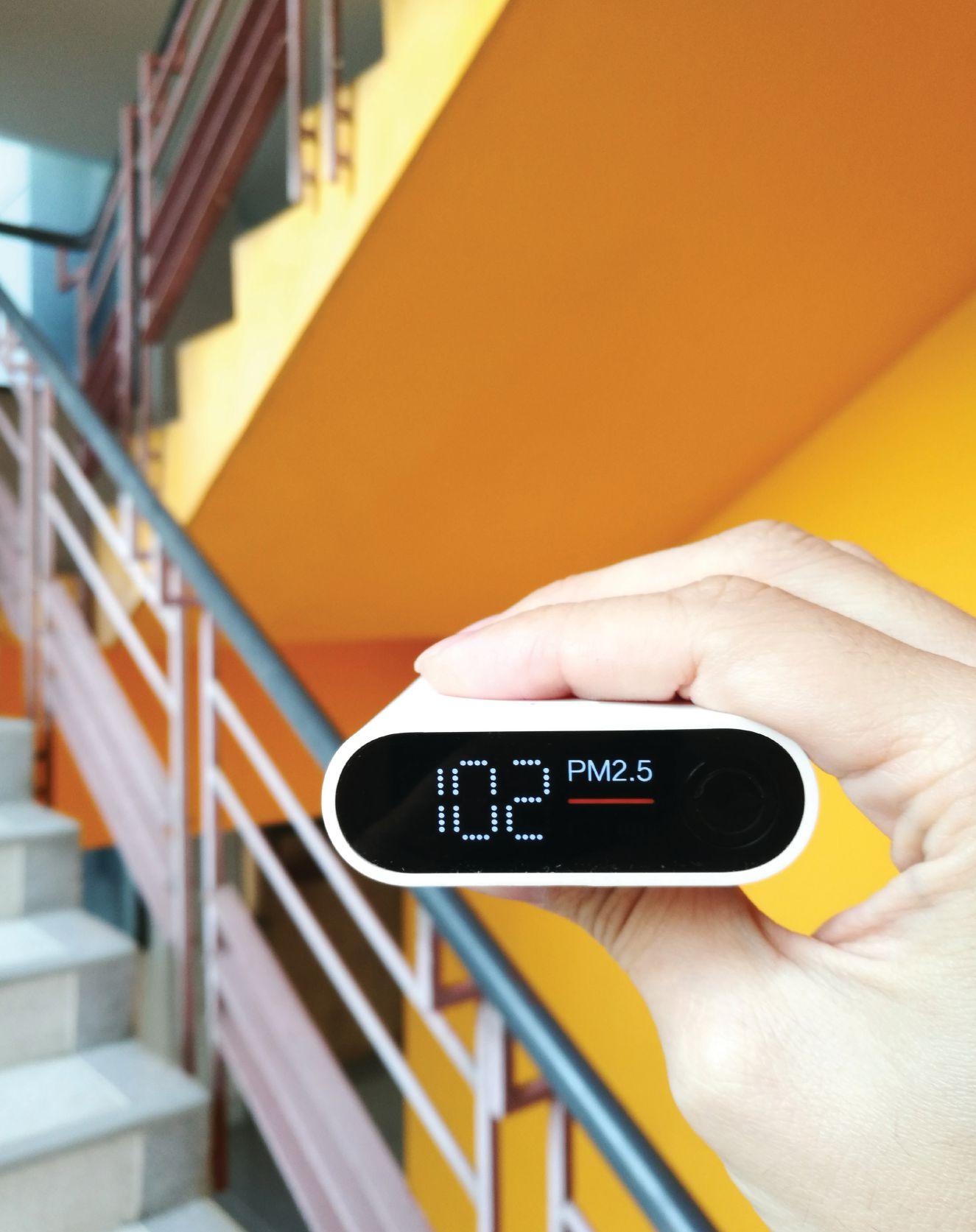
BY DR. JOSEPH LAI & ROGER LAW
In the three years battling the COVID-19 pandemic, the world had a painful loss of more than 6.85 million people, with myriad others suffering from long COVID conditions. Early in the battle, most people thought that the disease was not transmitted through air. After around two years, airborne transmission of the disease was confirmed, bringing the importance of indoor air quality (IAQ) to the forefront. Since then, the understanding of good air quality has been reshaped and research directions for combating COVID-19 in general built environments have been signposted. In the post COVID-19 era, it is vital to rethink the role of facility management in managing IAQ.
Many professional institutions and government agencies have published air quality standards or guidelines to define good air quality, which typically is represented by certain recommended concentration levels of some pollutants in the air over certain exposure time periods. Among such standards or guidelines across the world, for example, the LEED Standard and the WELL Building Standard emphasize the level of IAQ contributing to the health and well-being of building occupants. While the World Health Organization (WHO) and the China’s Standard (GB/T 18883-2022) regard that air with quality meeting their recommended limits/thresholds would cause no adverse health effects, the China’s Standard highlights that good air should be odorless. After the COVID-19 outbreak, good air quality may simply mean “clean air” with pollutant concentration levels below the limits stipulated in the IAQ guidelines or stan-
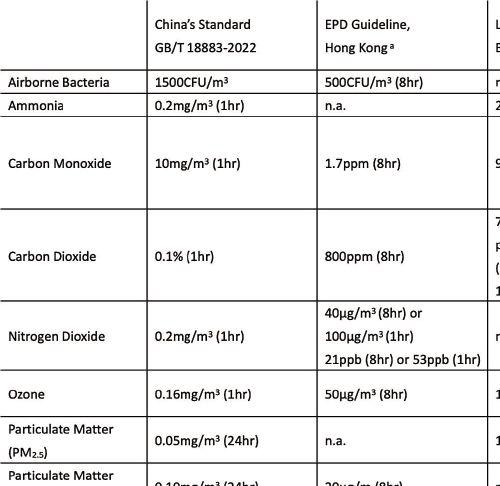

dards. Instead, the question of whether the air is safe from causing spread of the disease has become a common concern. This further leads to a question: “Is there a unified standard for formulating IAQ management plans?”
Accordingly, a review was conducted on the air quality standards or guidelines of the world’s two biggest economies (China and the United States) and WHO. Covered in the review include the standards or guidelines published by WHO, the U.S. Green Building Council, the International WELL Building Institute, mainland China and Hong Kong. As shown in Table 1, the limits for some selected air pollutants vary across the publications, with some limits not even specified. For example, respirable and fine suspended particles (PM10 and PM2.5) are subject to a tighter limit of WHO when compared to the limit of GB/T 18883-2022: the limits under the China’s standard are two to three times higher than the counterpart of WHO.
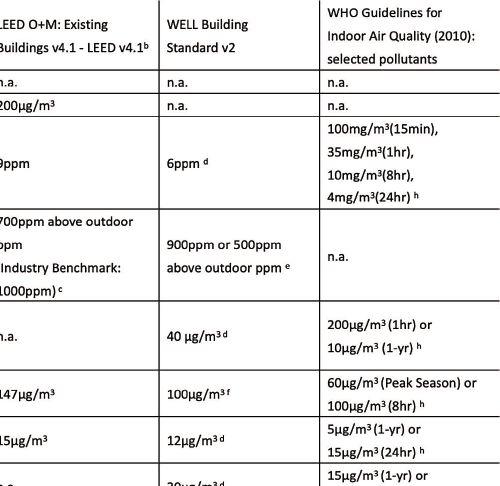



PM2.5 is a concern as it can carry microorganisms and remain in the air for extended periods, increasing the likelihood of disease transmission. Yet, the IAQ guideline published by the Hong Kong Environmental Protection Department (EPD) specifies the limit of PM10 instead of PM2.5. The EPD introduced the limit of airborne bacteria (500 CFU/m3 in eight hours), which is not specified in the LEED Standards, the WELL Building Standard or WHO Guidelines. While research has shown that each 10 μg/m3 increase in PM1.0 increases the risk of pneumonia hospit alization by approximately 8.5 times more than that from PM2.5, PM1.0 (which may contain more toxic pollutants and a larger surface area than PM2.5) it is not specified with a limit in the aforementioned standar ds/ guidelines. Of note, there are no recommended concentration limits for airborne viruses. While airborne bacteria, including bacteria and fungi, can easily replicate on a plate with nutrients and hence can be analyzed by plate counting of their concentration, different types of viruses can infect specific host cells. Thus, it is impractical to conduct air sampling followed by infectivity assay using many types of host cells to cover all types of viruses that may be present in indoor air. Furthermore,
quantitative polymerase chain reaction (PCR) commonly deployed to detect and quantify airborne viruses can only target a specific gene expression in the virus DNA/RNA once at a time. Thus, there is no practical method to measure the concentration of general airborne viruses. On the other hand, the infectious dose is onerous to be defined to correlate the healthiness or safety of building occupants.

Facility managers can refer to their local air quality standards and formulate appropriate operation and maintenance plans for their ventilation and air-conditioning systems. However, from a public health perspective, there are many more physical, chemical and microbiological parameters to consider when evaluating IAQ in space. Even if the measured IAQ level at certain time intervals can meet the target level, its ongoing compliance remains critical.
To improve IAQ, common strategies include increasing outdoor air supply, upgrading central air filtration to MERV-13 or higher, and extending the operating hours of ventilation and air condi-

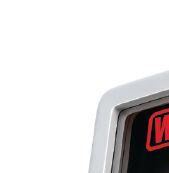

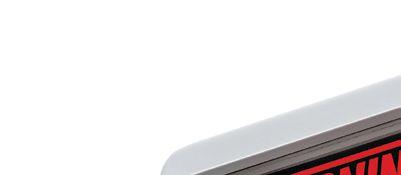

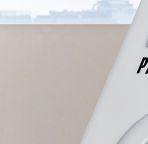
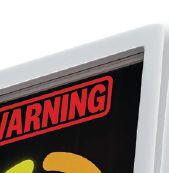





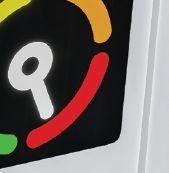
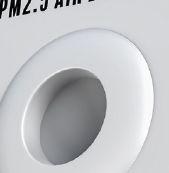

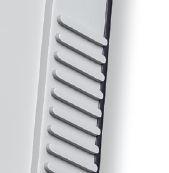





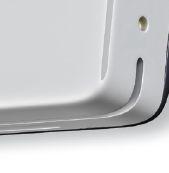



tioning systems. However, these measures may require retrofitting work and may significantly compromise the existing energy-saving measures in buildings. Air purifi ers are a cost-effi cient way to improve IAQ by delivering an increased air change per hour (ACH). Air purifiers can draw near-ground air through a high-efficiency particulate air (HEPA) filter and deliver filtered air from the top outlet, creating a piston-like effect on air cleaning. Clean air delivery rate (CADR) is a useful metric that characterizes an air purifier’s capacity and is used to estimate the additional ACH provided by an air purifier (divide the CADR by room size).
It is important to note that a high CADR does not guarantee good air quality in a space. CADR refers to the delivery of contaminant-free air for a speci fic contaminant. For example, ANSI/ AHAM AC-1:2020 requires three challenge aerosols, including cigarette smoke (0.1-1µm), fi ne test dust (0.5-3µm), and paper mulberry pollen (5-11µm) for testing CADRs of air purifier. An air purifier tested under ANSI/AHAM AC-1:2020 will have three CADR values for the three different aerosol size ranges, which may vary significantly based on the fractional filtration efficiency of the HEPA filter. GB/T 18801-2022 includes CADR testing against different
gaseous compounds, such as formaldehyde, ammonia and TVOC. Without specifying the target pollutants, a single CADR value may not lead to a definite representation if there are multiple indoor air pollutants. An air purifier equipped with a HEPA filter and anion generators can effectively remove PM2.5, radon and even airborne bacteria, but removal of gaseous pollutants such as TVOC and formaldehyde requires an absorption filter and other chemical reactions to decompose these pollutants.

Lif e cycle cost is typically an indispensable consideration for facility managers. As a filter of an air purifier becomes loaded with either solid or gaseous pollutants, the CADR of the air purifier will decrease. Pollutants absorbed or captured in the filter may detach, making regular replacement of the filter vital for ongoing IAQ control. FMs can refer to the cumulative clean mass (CCM) for a target pollutant tested for a filter in accordance with GB/T 18801-2022 to evaluate the lifetime of the air filter. As the current air purifier technology cannot effectively remove carbon monoxide, carbon dioxide, nitrogen dioxide or sulfur dioxide, air purifiers cannot entirely replace proper ventilation in a facility.
The COVID-19 pandemic presents an opportunity for FMs to reevaluate the definition of clean and safe air. Despite the nonunified IAQ standards identified from the above review, FMs should review any past outbreaks in buildings or premises they manage and, if feasible, examine their causes and ascertain whether t hey were due to poor IAQ such as insuffi cient ventilation or filtration. While the pandemic has increased demand for air purifi ers as a short-term solution to reduce transmission risk, a thorough and regular review should be conducted to ensure their effectiveness and performance, including the lifetime of maintaining an acceptable CADR. FMs should also critically assess the effectiveness of their ventilation, filtration and monitoring systems to prepare for guiding against similar pandemics in the future. For this purpose, an
The COVID-19 pandemic presents an opportunity for FMs to reevaluate the definition of clean and safe air.
in-house IAQ management plan should be established, based on which the performance of facilities such as ventilation systems, air purifiers and air quality sensors should be comprehensively assessed. Correspondingly, an appropriate operation and maintenance plan should also be formulate d to ensure the ongoing and long-term performance of the facilities. With the increasing availability of smart systems in this Industry 4.0 era, FMs may also consider utilizing advanced sensing or wireless technologies, such as laser sensing for PM1.0, electrochemical sensing for TVOC and the Internet of Things, to upgrade their existing facilities and monitor more closely the IAQ in their buildings, so as to meet or even surpass the recommended minimum levels of the current IAQ standards or guidelines FMJ

Dr. Joseph Lai is an associate head of the Department of Building Environment and Energy Engineering at The Hong Kong Polytechnic University. He is a registered professional engineer practicing for more than a decade in building services consultancy, property development and facility management before transitioning to academia. Lai holds a Ph.D. and has actively conducted FM research. Serving as a co-editor of the journal Facilities and an associate editor of the journal Smart and Sustainable Built Environment, Dr. Lai is also the Academic Advisor (Asia) of the IFMA Foundation. He has been honored with the Educator Award from IFMA.

Roger Law is a senior engineer at Aurabeat Technology Limited. He holds a BEng (1st Class Honours) in Building Services Engineering and an MSc (with Distinction) in Facility Management from The Hong Kong Polytechnic University, and an LL.M. from the Chinese University of Hong Kong. As a Young Professional member of IFMA and a WELL Accredited Professional, Law has received the Outstanding Paper Award for Young Researchers from the Building Services Operation and Maintenance Executives Society. He also serves as the chair of the Young Members Committee of the Hong Kong Association of Energy Services Companies.
RESOURCES
Law et al. (2021), COVID-19: research directions for non-clinical aerosolgenerating facilities in the built environment, Buildings 11(7), 282. doi. org/10.3390/buildings11070282
Wang, X. et al. (2021). Ambient particulate matter (PM1, PM2.5, PM10) and childhood pneumonia: The smaller particle, the greater short-term impact? The Science of the Total Environment, 772, 145509–145509. doi. org/10.1016/j.scitotenv.2021.145509
Yanchao, S. et al. (2021) Study on the effect of air purifier for reducing indoor radon exposure. Applied Radiation and Isotopes, 173, 109706–109706. doi. org/10.1016/j.apradiso.2021.109706
*Refer to the respective publications for exact details.
a Excellent Class of IAQ objectives stipulated in A Guide on Indoor Air Quality Certification Scheme for Offices and Public Places (2019).
b LEED O+M: Existing Buildings v4.1 – Indoor Air Quality Procedure.
c LEED O+M: Existing Buildings v4.1 – Indoor Environmental Quality Performance.
d Chapter A05 Enhanced Air Quality of WELL Building Standard v2. Additional point will be given to PM2.5: 10µg/m3 and PM10: 20µg/m3.
e Chapter A06 Enhanced Ventilation Design. Additional point will be given to 750ppm or 500ppm above outdoor level.
f Chapter A01 Air Quality of WELL Building Standard v2.
g WELL moved to considering individual limits of VOCs instead of TVOC (see resources.wellcertified.com/articles/well-tip-navigating-the-new-vocrequirements-in-well-v2/)
h WHO Global Air Quality Guidelines (2021); same limits of these pollutants apply to both outdoor and indoor settings.




















Why a sound maintenance strategy matters


BY MIKE SCHLAGENHAUFER





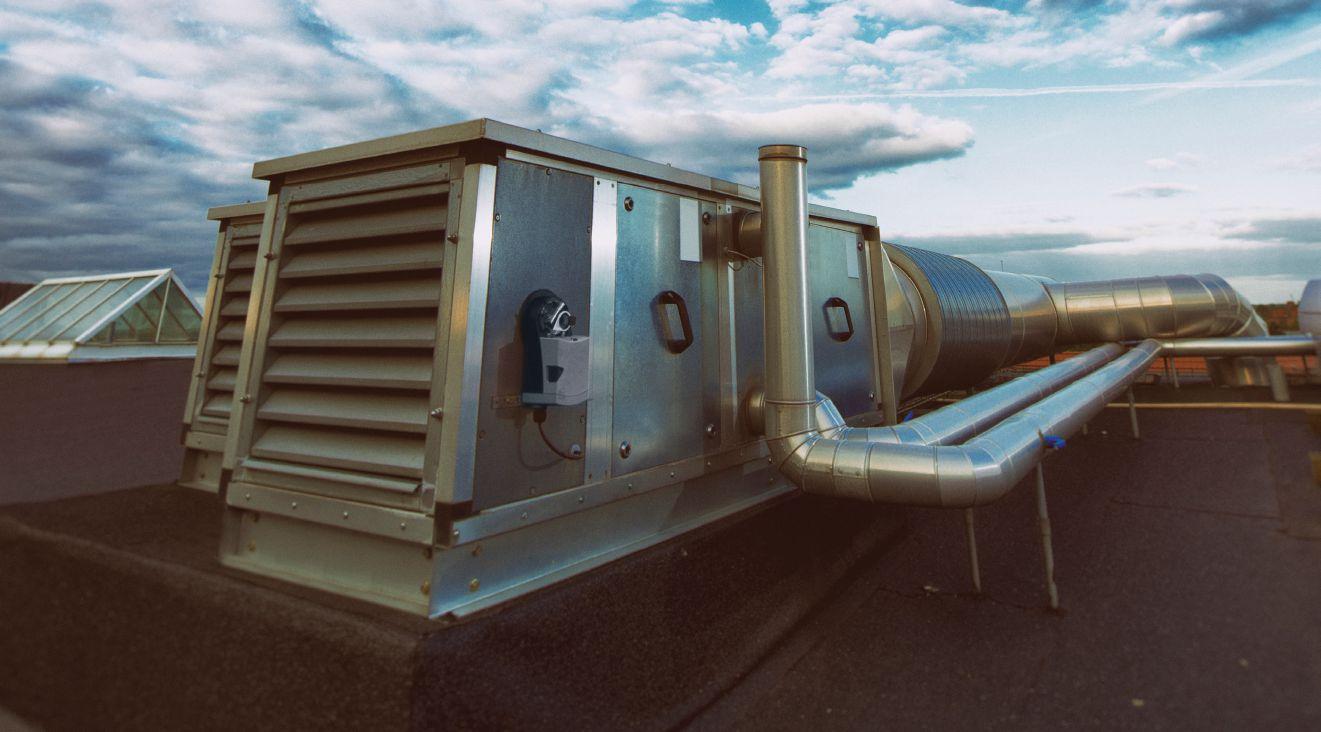
An operation’s biggest asset is their workforce. An organization’s second biggest asset includes their building and all the equipment in it. Equipment must be in top operating condition to allow employees to achieve business objectives and complete tasks in a safe and productive manner to meet the customers’ expectations. Maintaining the building and equipment protects the workforce, which protects the bottom line.
Asuccessful maintenance strategy includes two parts, preventive maintenance (PM), and predictive maintenance (PdM). Effectively managing both PM and PdM enhances safety, ensures continuity of business operations, and allows for effective time management of personnel and machinery.

PREVENTIVE MAINTENANCE (PM) is the basic maintenance that focuses on replacing and maintaining equipment based on original equipment manufacturer (OEM) recommendations or other standards.
Think of this as changing the oil, oil filter, air filter and such on a car. For example, the car’s manufacturer has recommended to

change the oil and filter every 5,000 miles or every six months, whichever happens first. This is a routine PM task and follows a predetermined schedule like time, mileage, widgets produced or hours of operation. These schedules do not consider the actual usage of the piece. They are based on the average usage and OEM expectations, not real-life usage of the piece of equipment.
PREDICTIVE MAINTENANCE (PDM), sometimes referred to as condition-based maintenance, is a method which helps analyze the actual condition of a piece of equipment — reducing or eliminating the possibility of an unexpected failure or breakdown. It focuses on replacing or repairing an item before it fails.
Think of PdM like the tires on a car. Tires wear based on how they are used. Quick

acceleration, hard braking and overloading vehicles will wear tires more quickly. Tires fall into the area of condition-based maintenance. Instead of replacing based on a schedule set out by the manufacturer, they are replaced based on actual wear of the equipment.
Predictive maintenance often utilizes sensors or other technology to monitor a piece of equipment. These sensors or tools provide insight into when equipment will need to be replaced with a higher level of specifi city unable to be matched by an OEM maintenance schedule.

PM and PdM go hand in hand. PM is designed to deal with the routine servicing and replacing of standard wear and tear items. PdM takes a long-term approach with the goal of extending the life and operation of machines past the normal expected operating time.
Consider an air handling unit on a facility’s roof top.
Facility 1 is in an area that deals with snow and cold days alongside hot and humid days.
Facility 2 is in a location that experiences high temperatures all year-round.
Both facilities get the same OEM manual with purchase of the air handling system. That manual recommends belt adjustments and filter replacements after every 1,000 hours of run time. Both maintenance teams follow this schedule, and the units perform without any issues. However, Facility 1 takes 100 days to hit 1,000 hours of use. At Facility 2, the unit works more frequently and must manage higher temperatures to ensure the building stays at the desired temperature. Thus, this unit reaches the same 1,000 hours of run time every 42 days.
The same equipment must work harder in the hot climate to reach the same performance and the PM work needs to be done more frequently than in a cooler climate. However, the type of PM work is not changing. As the equipment in Arizona gets more of a workout, the PM frequencies are adjusted to meet the OEMs recommendation. The OEM schedule accounts for this diff erence in work by setting the schedule based on hours of run time; however, other components within the air handling unit that are not on a PM schedule also get higher use. This increases the chance of a catastrophic system breakdown in the second facility.

Predictive maintenance (PdM) focuses on the condition of things like bearings, motors and other parts. Critical parts that are not covered by preventive maintenance.
To implement, first understand the critical components of the equipment. Once identified, establish a baseline. This is done with tools and equipment used to measure chosen indicators when a part is in good working condition. That baseline allows a facility to measure those indicators at predetermined intervals and document any deviations. As the part deteriorates, indicating failure, a decision can be made to either run to a catastrophic failure or to shut down the unit and replace the part before it fails. This is a key benefit to PdM. It provides notice of a failure and affords a choice of how to respond, potentially avoiding hours, days or even weeks of downtime.
With the benefi t of early indicators of failure, operations plans can be adjusted, maintenance workers can be scheduled, and customers can be made aware of any impacts to timelines or production. An often-overlooked side benefit of a planned
shutdown versus catastrophic failure is scheduling the right people to complete the maintenance. When machinery is pushed to catastrophic failure, the people in the facility at the time of failure are often the ones tasked with maintenance. This can cause false installation and increase the potential for safety hazards. PdM allows time to plan and to respond in an organized way.
It is logical to start with the most critical piece of equipment causing the most failure concerns and work toward other equipment. Once a facility’s experience with PdM increases, so will its understanding of the most critical components to watch out for, allowing it to better assess which parts will fail first, freeing up valuable time for other tasks.
Once implemented, PdM provides long-term data on the failure rate of critical components. With that information, these critical parts can be added for repair or replacement to a standard PM schedule, increasing time savings, uptime and customer satisfaction.

Technology is a powerful tool to assist in a PdM strategy. There are sensors and other tools available that can monitor parts in real time and connect to enterprise resource planning (ERP) or manufacturing execution system (MES) products. These technologies require training and getting used to, but when implemented can take some of the manual work and human error out of the equation.
As technology has evolved and Industry 4.0 (digitalization and connectivity of all things) becomes more prevalent, OEMs have started to manufacture new equipment with a variety of sensors on critical components. These sensors can provide real-time data on critical components and help get a PdM program off the ground
faster. These may already be installed on machinery and just need to be leveraged or may be present on the next generation of equipment.
To take PM and PdM systems to the highest level, artificial intelligence (AI) can help. As this technology becomes more common, a facility may have several pieces of equipment connected and collecting data. This can quickly become overwhelming. AI can help analyze the data and provide recommendations. It can even potentially preorder the spare parts needed. New technologies are continually being introduced. Establishing a plan to optimize the technology available can improve safety and efficiency.
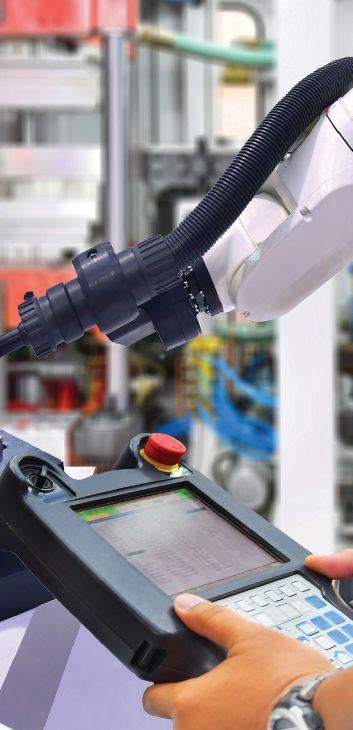


If in-house resources for a PM and PdM program are not available, third-party providers can be an option. To choose the best provider, consider the types of experience and insights they have with PM and PdM and how they manage and respond to the issues they identify. There are a few questions to ask when evaluating a company, including:
What capabilities do they have?
What factors do they monitor (temperature but not vibration?)
Do they have knowledge of all equipment or only know about one area (air handlers, chillers, compressors?)
Do they provide analytics?
Can they connect to an ERP or MES?
Getting answers to these questions allows for planning, coordinating between providers, or filling in gaps with in-house maintenance resources.

Besides increasing the operational uptimes of equipment, PM and PdM can provide nontangible benefits, like improving employee morale. If employees must work weekends to meet deadlines when equipment breaks down, they may become frustrated, causing a decrease in output, or increase in turnover rates.
PM and PdM can help sales teams attract new customers or obtain greater market share with current customers by demonstrating reduced late deliveries, and increased dependability of operations.
Having sound PM and PdM strategies are crucial to helping a business run well and have been proven to improve overall equipment eff ectiveness, reduce downtime, increase meantime between failure and improve on-time deliveries. All these factors improve the bottom line. Many large companies will not do business with companies that do not have a documented and well-established maintenance strategy. Solidifying a robust PM and PdM strategy is not just beneficial, it is necessary. FMJ

Mike Schlagenhaufer isa manufacturing consultant at Acuity Insurance, where he brings more than 40 years of experience in manufacturing, starting with an apprenticeship and working his way through a variety of positions in the manufacturing field. He joined Acuity in 2015 as a manufacturing consultant. His priority is to evolve how manufacturers deal with and think about insurance companies and act as a resource for his fellow employees — enabling them to better understand the unique needs of manufacturers.




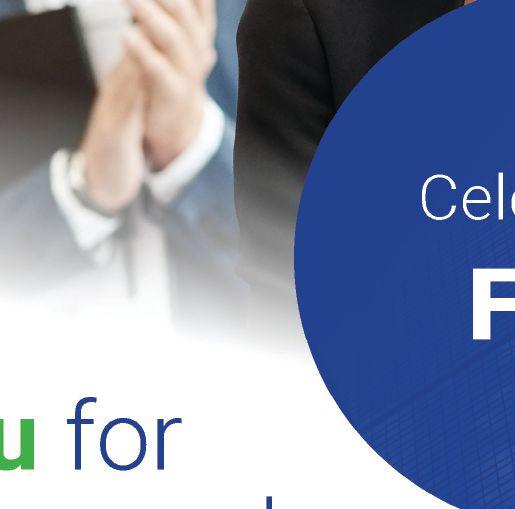
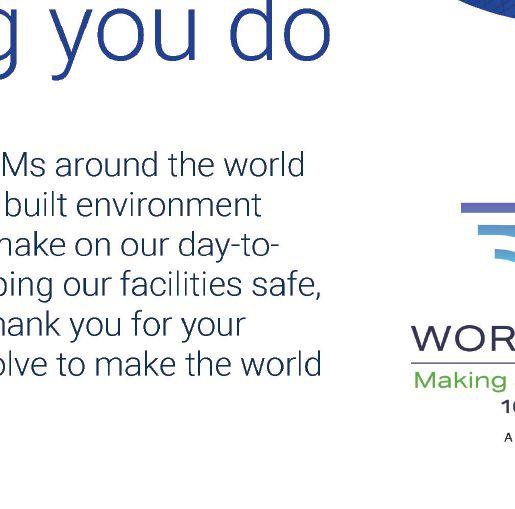

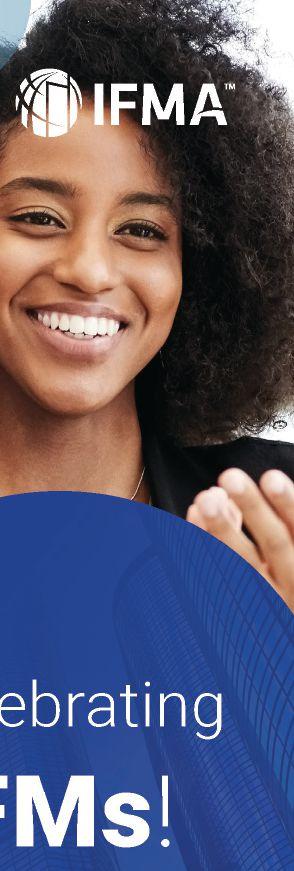
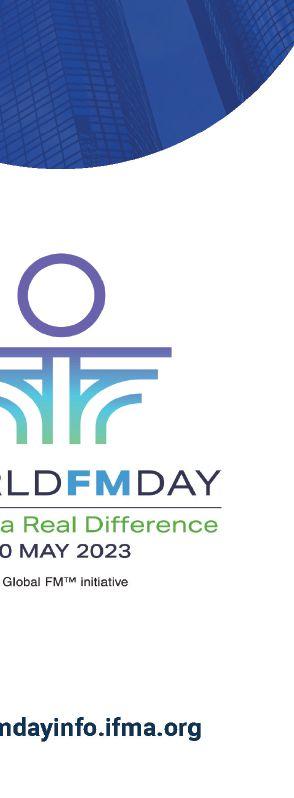

BY DIANE LEVINE & NANCY SANQUIST
Supply and demand have long encroached upon the facility management industry’s talent field. Today, organizations demand skills covering all 11 FM core competencies — with sustainability as a rapidly growing area of expertise required by employers — as well as engineering, technical and operations knowledge, all of which are in short supply.
As a U.N. NGO with special consultative status, the IFMA Foundation works directly with companies, universities, and government and community entities worldwide to develop a diverse, readyto-work talent pool, eager to make a difference as qualified, aware and responsible professionals. Building and preparing the workforce for tomorrow’s business challenges not only assists the growing needs of the FM industry, but also helps individuals in under-served communities improve their lives through better paying jobs and bring a higher level of expertise to their organizations through professional development scholarships. These opportunities positively impact the U.N.’s 17 Sustainable Development Goals (SDGs).
Established in 2019, the Eric Teicholz Sustainability Scholarship provides financial aid to FM professionals or those in a related field who are interested in earning IFMA’s Sustainability Facility Professional® (SFP®) credential. Criteria for receiving the award includes diversity and the impact that the scholarship is expected to have on the applicant and their environment.
Outstanding FM practices come from outstanding FM training. The skills scholarship awardees learn are essential to their careers now and in the future. The SFP increases their knowledge of sustainable FM practices to ultimately impact their organizations’ economic, environmental and social sustainability goals.
These skills are not only helping recipients excel in their fields, but also help them realize the role FM plays in making the world a better place.

“Humans and organizations play a fundamental role in ensuring that both the natural and business environments, as well as social well-being, are sustainably supported for present and future generations. Sustainability must therefore be made an integral part of our everyday lives,”
Facility management is a great career for women. As illustrated in IFMA’s March 2023 Women in FM Report, women often receive higher wages than men in the FM field and are often promoted to higher positions from the entry level.
Connie Chan, an engineering graduate, is an associate product manager for Smart Energy Connect in Hong Kong. Receiving a Teicholz Scholarship last year, she recently began her journey toward the SFP credential.

“I hope to gain and apply knowledge in sustainability to my work, helping my customers achieve their sustainability goals by choosing the best solution,” said Chan. “I wish to acquire insights to educate the younger generation as well as corporate leaders in sustainability, helping them build good frameworks and practices along the way.”
Scholarship recipients have come from six continents; however, special emphasis is placed on residents of Africa and Asia, home to the largest populations on Earth yet often suffering difficult environmental and social conditions.

Lekia Nwiido, a 2021 scholarship awardee, is in operations management for the Novare Group in Abuja, Nigeria. He is working on a biofuels project that involves a facility, schools, health care centers, banks and supermarkets, and providing jobs for 5,000 employees. The project offers an advantage in environmental and social development such as the reduction of greenhouse gas (GHG) emissions, which will also result in income generation for Nigeria. He is taking lessons learned from IFMA’s SFP and applying them directly to improving his organization and community.
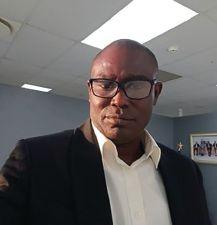
“Overall the SFP credential provides a detailed road map of how I could improve the sustainability of my facilities and projects using all eight major areas of sustainability as defined by IFMA: energy, water, materials and resources, quality of services, waste, site impact, how to integrate sustainability efforts with an organization’s values and strategies, how to present a business case for a sustainability initiative, how to evaluate initiatives from a financial viewpoint, and how to track and report accomplishments,” Nwiido said.
Not only are awardees making a difference in their communities, they are also sharing their experiences and findings, encouraging other groups to take up the mantle for sustainable FM practices.
“I am a passionate advocate for sustainability and sustainable facility management. Speaking at different conferences has kept me busy as I’m now regarded as an experienced FM and a grounded SFP. In September I spoke at the FM International Conference hosted by FMCE, and in November I spoke at the International Architects Conference hosted by AAB, both held here in Gaborone, Botswana, and both centered on themes of sustainability,” said Michael Mafa, a 2020 scholarship winner. As an FM consultant for Dikago Facilities Management in Botswana, he a sought-after speaker and instructor on the African continent.

“Becoming an IFMAqualified trainer has also opened doors for me to equip FMs in sustainability, particularly those taking introductory courses.
My current participation in the Botswana Facilities Management Association and on the Botswana Bureau of FM Standards Reviewing Committee have given me great opportunities to encourage the application of green FM policies on the part of my fellow FMs,” he said.
As the world changes how it works, scholarship sponsors realize the value the SFP can bring to organizations.
“As workplace technology is rapidly evolving, we acknowledge the ongoing efforts to create a more sustainable environment, which includes a clear understanding of current operating and carbon costs to support better planning and execution. By having this understanding, we can work to reduce our carbon footprint in the construction and facility management industry,” said Paul Head, director public of sector at Nuvolo.
Employees are questioning everything about work, including how, what, why and where it is done. While jobs in sectors like oil and gas are still growing, environment-related jobs are exploding at a growth rate of 237 percent. Facility management, once a profession looked upon as unexciting to youth (as it deals with operations and
maintenance), has become a popular choice in the fast-growing green jobs category, increasing at 11 percent per year, according to the LinkedIn Global Green Skills Report 2022.
“Facility managers, building owners, suppliers, technicians all work in silos in the FM ecosystem, resulting in suboptimized processes and inadvertently creating millions of metric tons of greenhouse gases. We’re excited to empower the FM le aders of the future to engage in climate action by aligning and improving supply chain processes and reimagining how supply chains can work for everyone,” said Jim Owens, chief growth officer at SDI and advisory board member for Penn State’s Center for Supply Chain Research.
The actionable takeaways from the SFP are not lost upon residents from wealthier, more developed countries. While those areas have more resources and higher standards for quality of life, they are also some of the greatest polluters.
Some scholarship recipients, such as 2022’s Martin Vaclavik, are quickly making a difference in the ways environmental, social and governance (ESG) policies and viewed, communicated and executed in Prague. He is a founding member of an ESG association that contributes to the local jurisdiction while adopting new regulations for non-financial reporting, and future members to streamline their action plans toward sustainability.
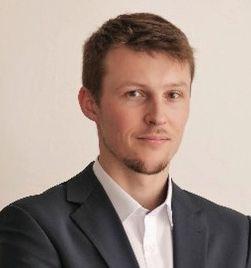
“Since
being awarded the SFP scholarship, I have worked on projects dealing with implementing ESG policies within larger organizations, which has been a real challenge,”
Vaclavik said. “My clients have always understood that having functional ESG policies depends on FM. I therefore understand the true added value of having SFP credentials. The SFP will help me with recognition and broadening my knowledge.”
The Eric Teicholz SFP program was expanded in 2021 to include additional scholarships supported by a corporate sponsor program, including JLL, SDI, Planon, Jumbo Chains, Nuvolo and three IFMA chapters (San Fernando Valley, Kansas City and South Florida). Since its inception, the program has grown by more than 450 percent. With these corporate sponsors, the program was able to establish two
new scholarships, one focused on technology and the other related to supply chains.
“In this new era, there are just so many novel technologies and opportunities for facilities teams to explore and implement to keep raising the bar and deliver more sustainable, productive and attractive workplace environments that put safety and well-being at the heart of their business. To enable young professionals in FM to take up this essential and pivotal role, we need to broaden their knowledge in environmental and social practices so that they’re able to support their organizations in the move toward a sustainable future,” said Erik Jaspers, IFMA Fellow, global strategy and innovation director of Planon and IFMA EMEA board member.
With a mission to make FM a career of choice, the Eric Teicholz Scholarship program and its sponsors are helping professionals improve their industry, their communities, organizations and their own lives.
“We are contributing to the future of the FM profession by providing a pathway for those interested in earning their Sustainability Facility Professional. In this quest we understand the importance of sustainability in the built environment and the criticality of ensuring that current and future facility managers are guiding their organizations toward sustainable practices,” said IFMA Foundation Chair and JLL Global Account Executive Irene Thomas Johnson, CFM.

Diane Levine, MCR, IFMA Fellow, is the executive director of the IFMA Foundation. She is a former IFMA board member, and an award-winning coeditor and author of the “Work on the Move” series along with numerous FM books and articles. Levine is one of the pioneers of the Foundation’s Global Workforce Initiative (GWI).

Nancy Sanquist, IFMA Fellow, is a professional involved in the built environment for the last few decades. She is a past chair of the IFMA Foundation and a co-founder of the Global Workforce Initiative (GWI) and Workplace Evolutionaries. Sanquist is the author of many articles and co-editor of books on FM/CRE, technology, architecture, urban planning and maintenance including the award-winning book series “Work on the Move.” Sanquist is working on a new book, “Reimagining Place in the 21st Century.”



















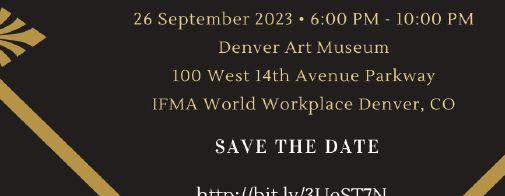





April 14-16, 2023















Become a Sponsor and make a difference in someone’s life








IFMA Foundation appreciates the support of the IFMA chapters, councils & communities for their continued financial support towards the mission of the organization.
Through the generosity of IFMA Fellow Eric Teicholz, JLL, Planon, SDI, and Jumbo Chain, the IFMA Foundation is offering scholarships to individuals interested in earning their IFMA Sustainability Facility Professional® (SFP) certification.







Applications are due by 11:59 pm PST, Tuesday, July 18, 2023 SAVE
Sustainability Facility Professional® (SFP)
®
IFMA’s SFP is an assessment-based certificate program delivering a specialty credential in sustainability. By earning the SFP credential, you will:


Earn recognition and credibility for your expertise in sustainable FM practices
Influence your organization’s economic, environmental and social bottom lines.
Maximize efficiencies and streamline operations to boost your triple bottom line: people, planet, and profit.

If interested in impacting the life of a future FM leader, Contact Program Support Specialist Christina Gonzales at christina.gonzales@ifma.org to learn how to become a sponsor.




Learn to use knowledge-based, data-driven methods to drive decisions and develop valuable solutions.
Sponsors:
Eligibility:

Professionals currently in facility management or related field with a demonstrated interest in sustainability & young professional members of IFMA Chapters and IFMA Councils and veterans are encouraged to apply


Skudo USA | SkudoUSA.com | @skudousa | linkedin.com/company/skudo-usa-inc-
Construction Specialties | c-sgroup.com |
Gordian | gordian.com | @Gordian | linkedin.com/company/the-gordian-group/
DEVELOPMENT
ISSA | issa.com | @issaworldwide | https://www.linkedin.com/company/issaworldwide/ |
FACILITY MANAGEMENT SERVICE PROVIDERS
Staples | staplesadvantage.com | linkedin.com/company/staples |
AGF |
| @AGFmfg | linkedin.com/company/AGFManufacturing |
PRODUCTS/SERVICES
Yamamoto North America LLC | yamamoto-na.com |
OFFICE PRODUCTS/ACCESSORIES/SUPPLIES
Vaask | vaask.com | @hello_vaask | linkedin.com/company/vaask/ |
|
For more information visit bit.ly/IFMA2023MediaPlanner. BUILDING MAINTENANCE
Engage with your next clients and help them find the solutions they need via IFMA!










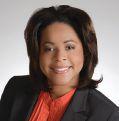
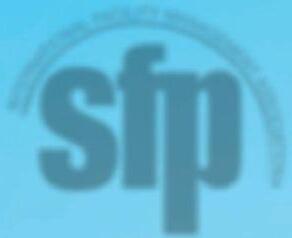

What can seem like routine day-to-day decisions in the FM world are critical drivers in the world’s shift to sustainability.
IFMA’s Sustainability Facility Professional® (SFP®) can show you how to strategically operate sustainable facilities and create lasting impact for your organization and the world.
Learn to maximize facility efficiency + develop strategy for sustainable use of water, energy and other resources.
The SFP is more than a credential. It is a commitment: ® TO SETTING TARGETS THAT MATTER TO CLOSING THE SAY-DO GAP TO REDUCING YOUR FOOTPRINT TO MAKING A MEASURABLE, MEANINGFUL DIFFERENCE IN YOUR FACILITIES AND YOUR CAREER.
Measure + report the effects of sustainability on your organization’s strategic plan while engaging stakeholders in your initiatives.
Study emerging trends like circular economy.


BECOME A SUSTAINABILITY EXPERT
Learn online with courses available 24/7
Optional virtual Learning Labs available in early 2023
Earn IACET CEUs

The construction and building sectors are responsible for 33 percent of global resource consumption and 40 percent of global waste.1

Get started now: OR ifma.org/sfp
[1] Ellen MacArthur (2019) From Principles to Practices: Realising the value of circular economy in real estate. Acharya, D., Boyd, R. and Finch, O. A Report of Ellen MacArthur Foundation and ARUP. Ness, D.A. and Xing, K. (2017) Toward a ResourceEfficient Built Environment, A Literature Review and Conceptual Model, Journal of Industrial Ecology, 21(3), 572-592, DOI: 10.1111/jiec.12586.





The SFP is a means to create value and change the perception that facility management is just a cost center.
ENG., MA/MBA,




I gained a lot of [sustainability] vocabulary and vernacular from the SFP. This credential helped me translate ethereal concepts into practical application.
LYNN BAEZ, CFM, FMP, SFP, CBCP, IFMA FELLOW DIRECTOR OF FACILITY OPERATIONS FOR THE BAY AREA | GOOGLE
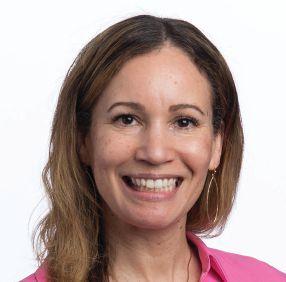













Knowledge Library
Grow your career and expand your FM skills with IFMA’s Knowledge
Access the largest curated library of FM content, created and reviewed by industry experts from the global FM community.

•Articles
•Videos
•Podcasts
•Research
•And much more!



Scan the QR code to learn more.





























Ask the Experts
Book Review
Nancy Sanquist
Extra TLC
Prepping Pools to Withstand Extremes
Heather Smith
Vendor Profiles
Highlights from IFMA’s Facility Fusion 2023
In each issue of FMJ, IFMA’s Facility Management Consultants Council shares some commonly asked FM-related questions accompanied by advice from top FM consultants. The questions and answers presented in this section align with IFMA’s core competencies following the themes outlined for the given edition of the magazine. While the following answers are intended to be helpful, these responses should not be deemed complete and are limited in context by the space allocated. Please contact the individual consultants directly for further explanation of the opinions expressed.
CONTRIBUTED BY

The Facility Management Consultants Council (FMCC) represents more than 300 FM consultants from various countries around the globe. Its mission states, “The FMCC is the resource and voice for facility management consultants worldwide to leverage our collective expertise to benefit IFMA members, and the facility management profession.”
Managing risk within the world of facility management reflects the interface between the built environment and human activities. The built environment can and should be known and managed to meet occupant requirements while minimizing risk. Buildings and infrastructure are designed and developed to accommodate human activity, governed by various building codes, standards, and now environmental goals. Managing facilities and human activity within buildings is the task of the FM team. Daily routines are structured in response to outdoor and indoor environments, waste/recycling programs, cleaning activities, wayfinding, energy and water use requirements, security, technology, back-up systems and fire safety, etc. — all delivered through communications with occupants, the FM team and service providers.
Managing facility risk begins at the building planning stage ensuring user requirements are fully captured and understood. This knowledge becomes the input for the design stage where material and systems choices should be made considering serviceability and whole life-cycle cost implications.
A portfolio of buildings is not typically all the same age, size or built of the same materials for the same purpose. Regardless the diversity of buildings, it is critical the FM team have an up-to-date record — preferably digital — of major building elements and systems with an operations and maintenance and capital replacement plan. The best way to capture and manage these elements is with technology like a Computerized Maintenance Management System (CMMS) tied into a life-cycle capital management software
system and other technologies like controls long used in the FM world. Digitally accessible data helps manage risks in FM.
However, not all risks are the same or have the same impact. It is therefore important to have a risk management plan directly reflective of the organization’s strategy and goals. Start with a simple risk register where risks are identified within the context of severity and impact linked to organizational objectives.

Managing risk is about managing uncertainty. Every risk carries a financial implication. The challenge is to identify risks, determine the likelihood of them occurring, estimate the financial implications of each risk and then determine various mitigation measures to protect against risk disruption. Insurance is a risk management tool. Insurance was established in ancient human history to protect people and property against various disasters. Of course, we continue to insure against various risk to this day which typically includes contracted relationships with disaster recovery experts.
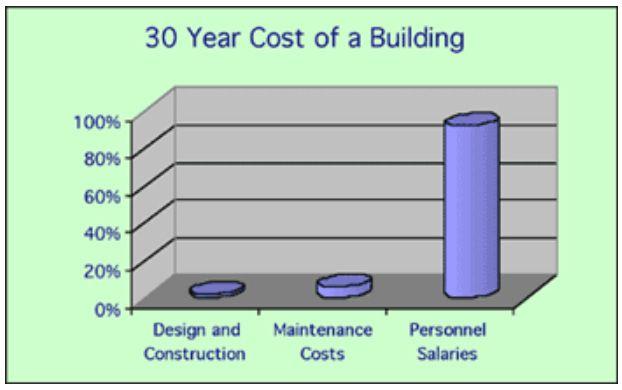
Source: Sustainable Building Technical Manual / Joseph J. Romm, Lean and Clean Management, 1994.
Viewed over a 30-year period, initial building costs account for just 2 percent of the total, while operations and maintenance costs equal 6 percent, and personnel costs equal 92 percent.
As illustrated, within the 30-year cost horizon of a building, it is clear the building occupants (personnel salaries) are the
largest financial implication. Managing risks to minimize impact for occupants is an FM and organizational goal.
However, predicting future occupant trends and the world of work is fuzzier than planning performance of a physical environment and requires a different risk management approach.
Most recently, risk and impact spiked with the appearance and rapid advance of the COVID-19 virus creating a pandemic and directly impacting occupancies of virtually every building environment where people typically gather.
Who knew?
Some risks are difficult to plan for, but they become a learning opportunity going forward.
What was learned from the pandemic:
• Air-handling mechanical equipment and controls may need flexible rates of air flow;
• Filters may need to be more robust than HEPA filters – like ULPA filters and require more frequent replacement;
• Surfaces may require more frequent cleaning cycles;
• Technology servers and power may need to be more robust;
• Security may need to be more robust;
• This dramatic change impacted many workplaces and employees who were forced to adopt different styles of work which also kicked-off the great resignation and quiet quitting;
• Spaces may need to expand or contract readily to accommodate changing occupant serviceability requirements (flexibility);
• Different workers require different work environments for maximizing productivity;
• Supply chains were severely disrupted affecting timely service, ordered equipment delivery and supplies delivery – while costs spiked;
• Classic office and retail spaces are now under-occupied as workers and shoppers adjusted to alternate arrangements – suggesting buildings need to be planned for flexibility in occupancy types –(office space conversion to residential for example);
• Single-use neighborhoods may be obsolete;
• Technology use surged for meeting and interacting in groups big or small – including online music concerts;
• Reduced commuting reduced the level of air pollution from vehicles – a positive environmental outcome.
This most recent pandemic risk exposure and learning opportunity can help the FM industry advance risk planning to become more resilient to future risks. Current risk planning has a strong focus on sustainability and environmental impact. It also has a focus on technology use and space/building use flexibility. Asset portfolios – age dependent – may need advanced capital renewal to better accommodate system and space changes to become more flexible for varied occupant types and uses and to become more resilient to environmental extremes.
Some organizations are testing the effectiveness of robotics to provide various occupant services such as robotic cleaning machines and security robots. This technology may be in part due to a lack of available workers.
Whatever risk planning and mitigation action an organization undertakes, completing an annual review of the plan and response mitigation is a required step for proactive risk management. Change demands FM organizations become more nimble. FMJ

Kathleen Lausman, MBA, BES is a principal at Shift2Lean Inc. and building industry professional with a background in architecture and business. Her more than 40 years of experience is that of the public owner and leader of project and facility management teams in various sectors: parks, law enforcement, education, healthcare, manufacturing, technology and government. She is a former deputy minister for the Nunavut Territorial Government, Canada and former co-chair and forming member of the Lean Construction Institute - Canada.
“We Are All Economists Now” New Values in Action for the Re:20s1
NANCY J. SANQUIST
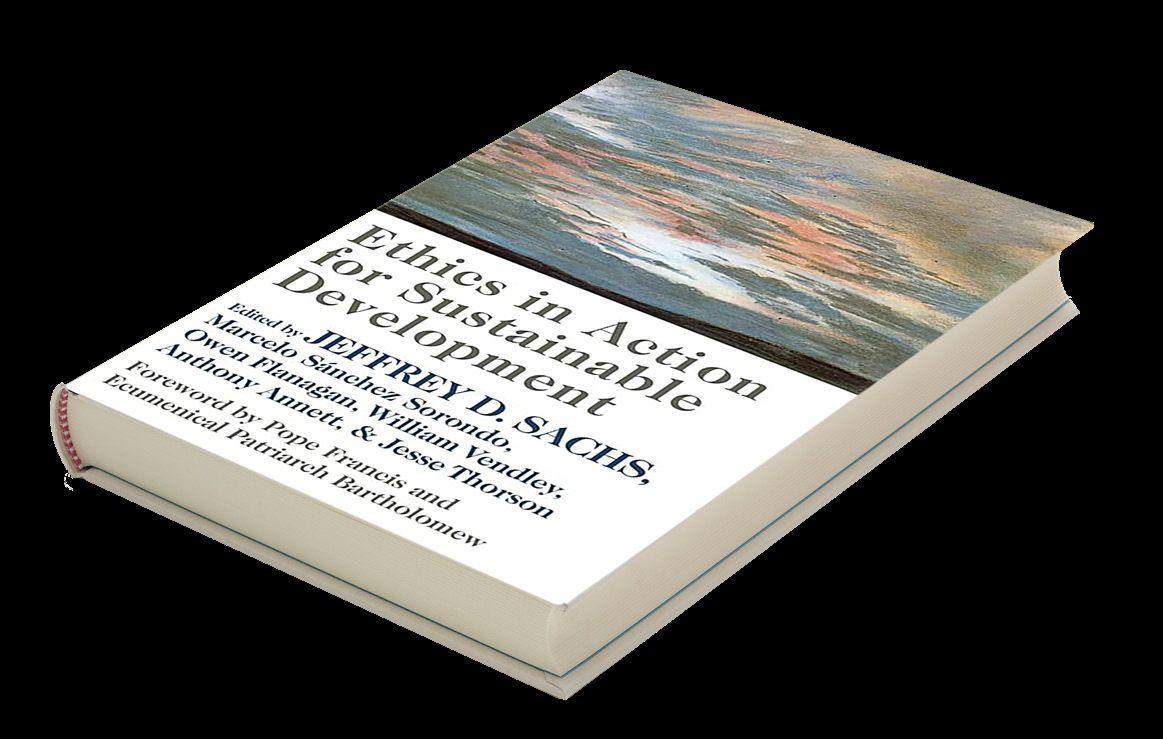
Ethics in Action for Sustainable Development
Edited by Jeffrey D. Sachs, et al Columbia University Press, N.Y., 466 PP., 2022
Donut Economics
Seven Ways to Think Like a 21st Century Economist
Kate Raworth
Chelsea Green Publishing, Vermont, 309 pp., 2017
1 See “Re:Work in the Age of the Re:20s” in FMJ Jan/Feb 2023, pp. 056-059.
As the theme of this edition of FMJ implies, we are in a period when risk surrounds us. We are in the midst of a polycrisis defined by economic and social inequality, global environmental and health crises, war and massive disaster recovery. We are trying to figure out where we are in the beginning of a new century, how we got here, and how we should reimagine a better future. To help us figure out these weighty questions in a time of “VUCA squared”2, two amazing economists have published books to help us create a new mindset to transform our industry. Together they provide a 21st century alternative to GDP ranking and a new moral framework for all of humanity. Both books include positioning of the critical UN’s 17 Sustainable Development Goals (SDGs) which are necessary to right the wrongs of our past exploitation of people, places and the planet, while providing a framework for new, transformative practices for education, institutions and businesses.
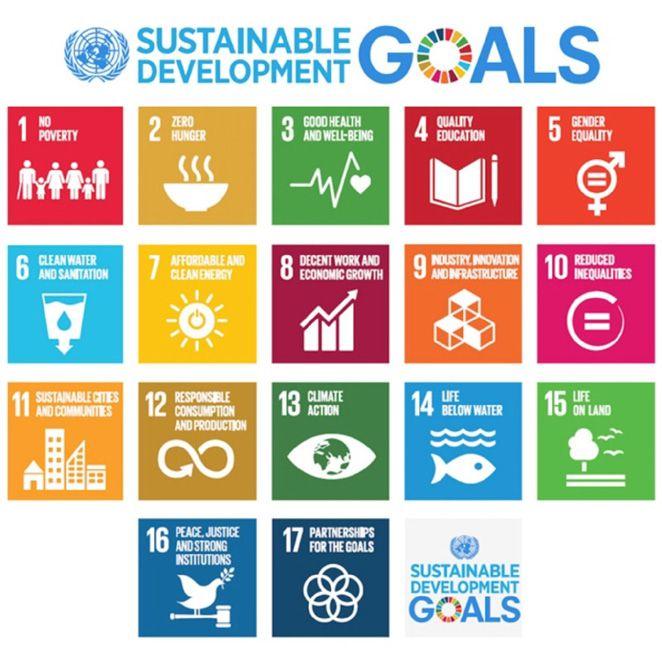
It is almost unconceivable that Jeffrey Sachs accomplishes as much as he does as an economist, academic, public policy analyst, author and professor at Columbia University where he is the Director of Sustainable Development. He has served as an adviser to three UN secretaries-general and currently is the SDG Advocate under the Secretary-General Antonio Gutierrez, as well as being the co-editor of the yearly World Happiness Report (www.worldhappiness.report). His previous book is “The Ages of Globalization: Geography, Technology and Institutions” (2020). Both of these publications are worth a read.
Kate Raworth, a radical economist, academic and consultant teaches at Oxford University’s Environmental Change Institute, Cambridge University’s Institute of Sustainable Leadership and Amsterdam University of Applied Sciences. In 2021, she was appointed by another brilliant economist, Marianne Mazzucato, to the UN’s World Health Organization (WHO) Council on the Economics of Health for All. Many of Raworth’s inspirational talks are available on YouTube.
These books do not have to be read in the same way. Reading Raworth is like going to a table and having a meal, taking in a few chapters at a sitting, sequentially following her storylines. Sachs’ book is formidable and should be approached like going to a buffet and choosing the authors and articles which interest you most, absorbing their content, then returning to the same table at another time for a different selection. I began with his chapters first (1,3,5,7), followed by Chapters 6, 12 and Conclusion and then with the remaining chapters.
A group of international theologians (representing Christianity, Islam, Buddhism, Judaism, Hinduism, Confucianism and First
Nation religions), philosophers, academic experts and practitioners standing in front of a building in Vatican City, Rome. are shown in a photo at the beginning of Sachs’ book. They were there for one of a series of meetings convened by Pope Francis from October 2016-December 2018, designed to “help nurture a strong sense of the common good and an agreement that there can be no distinction between concern for human welfare, protection of the environment and care for our salvation.”3
This Ethics in Action group wrote about their ideas from these meetings in Sachs compendium of articles which explain a moral framework for the world to operate. They are “adding true value to society and meeting the needs of the poor, raising living standards, helping society to meet basic needs and innovating to read enrich our lives as opposed to profits at all costs”4. And it is the SDGs which are this framework for humanity to achieve the common good.
Two of the expert authors, Anthony Annett and Jesse Thorson, summed up the work of this diverse team as the need for a moral economy which “recognizes universal human dignity and is oriented to the common good: a vision of the good held in common that significantly recognizes our interdependence and shared well-being. It is fueled neither by relentless profit seeking nor by a belief that technical advances can solve all problems. It involves the well-being of all, with special attention to the poor and the least well off.”
This moral economy is concerned not only with the strictly financial or transactional dimensions of society, but also its social and political components, which also shape and guide how individuals and groups relate to and interact with one another. “A moral economy not only guides us to act in the interest of the common good, but also teaches us to truly desire the common good, a task in which religious institutions ought to be playing a larger role.”5 The common good
3 Sachs, p. 2.
4 Ibid, p. 4.
5 Ibid, p. 439.
is embedded in the SDG framework. By reading “Ethics in Action,” one can understand why it is so important to embed the SDGs in all the relevant work we do in the built environment. One way to do this is to consider supporting the doughnut economy.
Kate Raworth begins her book with a question: who wants to be an economist? Every year 400 higher education institutions graduate 900 PHD’s in this subject. The problem is that what they are taught in these classrooms is rooted in 1950s textbooks thinking which looks back to 1850 theories. This is what Raworth rebelled against upon graduating from Oxford University and why is she defined seven ways to think about 21st century economics which are the subjects of each chapter in the book. These are:
• Change the Goal: 70 years of a GDP goal no longer relevant as it has ignored human rights and the planet;
• See the Big Picture: the circular economy includes both society and nature;
• Nurture Human Nature: how we are interdependent with the natural world;
• Get Savvy with Systems: learn systems thinking early in education;
• Design to Distribute: design economics to distribute value including wealth;
• Create to Regenerate: understand earth’s cyclical processes for their application to our lives;
• Be Agnostic about Growth: the objective should be to make all of humanity thrive.
The first chapter describes the “21st century compass for guiding humanity” which is the doughnut. The inner ring represents the twelve basic life requirements, most of which are included in the SDGs. The outer ring is the planet’s ecolog-
ical ceiling determined by the 9 critical processes that regulate the Earth’s ability to maintain stability to allow humanity to thrive. Between these boundaries is the sweet spot, the ecologically safe and socially just space for humanity. The outer ring should not be breached.
See the diagrams below:
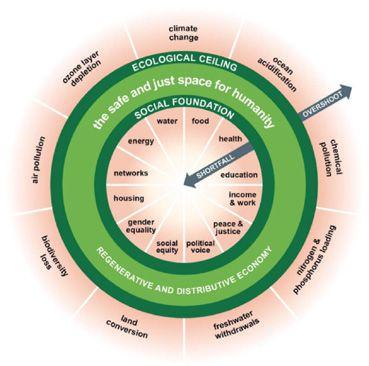
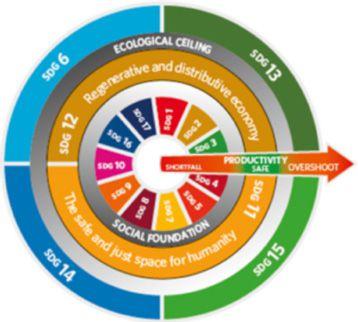
The UN SDGs and the Doughnut
In each chapter, Raworth writes about the economists who influenced the field at the time, beginning with the Greeks who called it the art of household management. It was considered a science by the 18th century when Adam Smith, who some consider the “father” of modern economics, viewed it more comprehensively as a system. Its purpose was to supply revenue or subsistence for people with enough for public services offered by the state. Later, specific laws became attached to economics with goals to guide how society managed its resources. These goals evolved into GDP
growth as the measure of economic efficiency, productivity and wealth of a nation. At the same time, there were alternative ideas to this overriding principle of growth. They began in the 19th century with the Swiss economist, Jean Sismondi’s approach to adding humanity back into the story and enhanced by the Renaissance-man, John Ruskin’s writings, which revealed that there was economic value in wealth that was embedded in human-made assets, people and a thriving biosphere. In the 20th century, Mahatma Ghandi, influenced by Ruskin, strove to create a new economy in India that elevated the moral being. Later, E.F. Schumacher’s “small is beautiful” became a new aesthetic adding ethics and human scale into economic thinking. By 2008, French President Nicholas Sarkozy included social progress to economic measurement. Three years later Raworth created the Doughnut Economy while working at Oxfam, a global anti-poverty organization.
The interesting aspect of these books is that their contents are not just good histories, analyses and theories, but contain meaningful new ideas that these authors are actively applying to global transformations:
1. The “Ethics in Action” authors include the following work toward SDG transformation:
• In education, Maryanne Wolf, a Professor at UCLA working in cognitive neuroscience and developmental psycholinguistics, is creating a digital app for her global literacy initiative to reach 100 million children which, in turn, could reduce poverty by 12%.
• In business, Jennifer Gross co-founded the Blue Chip Foundation at the same time as the announcement of the SDGs, and whose mission is to influence businesses as agents of Sustainable
Development. The pledge to the Ten Corporate Commandments reorients business activity around the common good (www.bluechipfoundation.org).
• Jeffrey Sachs also leads the UN Sustainable Development Solutions Network (SDSN) which has created the SDG Transformation Center to be launched this September. It will be the first platform for learning and exchange on SDG data, policies and financial instruments. SDSN has partnered with the GIS leader, Esri, for visualization of the data for mapping and analytics. This organization is invaluable for higher education institutions including the SDGs in all of their programs (Yale and ASU are great examples).
2. Kate Raworth has created the Doughnut Economy Action Lab (DEAL): This is an open-source commons for the work that is being done around the world implementing the ideas from the book (https://donoughteconomics.org). It was created by the DEAL team and members of the community and includes the following topics: communities and art, cities and places, education and research, business and enterprises, as well as government and policy. On this site, stories of implementations, networks, maps of members’ locations and tools can be found to help foster new economic practices.
From the site: “We work with changemakers worldwide — in communities, education, cities and places, business and government and more — who are turning the ideas of Doughnut Economics into transformative action and aiming to bring about systemic change. Our name is very intentional: we are focused on action and always learning through experiment. DEAL was founded as a Community Interest Company in July 2019, and we launched our Community Platform online in September 2020.” Amsterdam is
one of DEAL’s most comprehensive city projects with the urban administration using the Doughnut model to emerge from the pandemic with a new transformative mindset for plans for the Re:20s.
Personally, I realized, as I wrote this review, that I am an activist economist. The birds are chirping frantically on this unusually warm February day, providing a melodic background as my thoughts pour out as I sit in the midst of my recultivated garden reseeded with native North Carolina plants, set to bloom in a few months in this rewilded landscape. I am currently using the SDGs as the framework for the work I am doing with the sub-group I work with on the UN NGO Task Force in the IFMA Foundation in our involvement with UNESCO, as well as the development work I do on the Board of the Greensboro Opera bringing the SDGs to bridge the world of culture with local businesses. I am also thinking of how to expand Dr. Allen’s concept of buildingomics6 from just health and well-being to other areas impacting the SDGs in the built environment. But this story is for another time and place. FMJ

Nancy Sanquist, IFMA Fellow, is a professional involved in the built environment for the last few decades. She is a past chair of the IFMA Foundation and a co-founder of the Global Workforce Initiative (GWI) and Workplace Evolutionaries. Sanquist is the author of many articles and co-editor of books on FM/CRE, technology, architecture, urban planning and maintenance including the award-winning book series “Work on the Move.” Sanquist is working on a new book, “Reimagining Place in the 21st Century.”

BY HEATHER SMITH
Temperatures keep hitting new records: hotter, longer-lasting heatwaves; blowing, bitter cold snaps. On their own, each weather event feels like an anomaly, but in fact the extremes are becoming normal. Record temperatures put massive stress on pools, water features and open habitats: High heat challenges cleanliness and freezing temperatures threaten integrity. As more people rely on pools and parks to get relief from extreme weather, it is up to facility managers to ensure all water features are optimally maintained.
Meticulous maintenance is the prime defense against the impact of weather extremes.
Proper preparation for seasonal changes will protect every kind of water feature and extend their integrity, longevity and beauty.
In some parts of the world, autumn arrives with an onslaught of seeds and leaves. Heavy
Small cracks become big problems, especially in moist environments. Cracks are an inviting home for mold and mildew, especially in areas susceptible to flooding, excessive precipitation, runoff or humidity. Once the moisture gets in, it has a hard time
rainfall and flooding introduce more than the normal amount of debris to pool areas. Keep filters and filter baskets free of leaves and other debris. Backwashing — reversing water through the filter out of the waste line and drain — will keep filters cleaner by flushing out built-up debris. Check filter equipment thoroughly for signs of damage. Vacuum all surfaces, paying special attention to areas that have little circulation, which make them prime spots for algae growth, especially when it is warm.
getting back out, which causes it to settle. Cracks in concrete are impossible to avoid. Even when concrete is poured and cured correctly, it will form imperfections over time. The time to seal cracks is as soon as they are discovered. Check pool and tank walls and floors for any signs of cracking or other imperfections. Consider waterproofing the concrete, especially in areas of heavy rainstorms and flooding. Basic maintenance is made easier, and the waterproof factor keeps things clean. Do not forget to inspect covers to ensure they have not suffered any damage from heavy use or while in storage.
As materials expand and contract with each swing in temperature, fittings and connections are especially prone to damage. Check filters and pumps for water spots or damp areas. Check pipe connections, a common source of cracks and leaks. For pools and tanks with acrylic walls, inspect sealant at the joints for signs of damage that could cause a leak. Make sure ambient lighting and sound systems remain insulated and properly protected from moisture.
Run tests on all systems to ensure they are working properly. Chemical levels need to be adjusted as use and environmental conditions change. Check and test timers to make sure they are still accurate and reflect the switch to daylight savings or standard time. If pools, tanks or outdoor areas are closing over a cold winter, ensure breakers, pool lights, and time clocks are turned off.
Take stock of supplies and ensure everything is at hand to protect pools, water features and exhibits. High heat will increase evaporation; heavy use may require adjusting the chemical balance. Pick up winterizing supplies that will be needed to keep water environments in top condition throughout the winter.
Pools should never be left completely empty over the winter; this can damage the pool walls and liners and may cause cracks. In climates that experience freezing, water should only be drained to below the skimmer to prevent water from entering pool equipment, where it can settle, freeze and result in damage.
The warmer the water, the higher the demand for chemicals, especially chlorine. Chlorine is susceptible to breaking down under the sun’s powerful UV rays so be ready to adapt. Also test to check total dissolved solid (TDS) and cyanuric acid levels. Because these numbers can only be lowered by adding new water to the pool, the ideal time to do this is when temperatures are cooler to reduce the risk of excessive evaporation and damage to surfaces from sun and heat. Algae, bacteria and other microorganisms thrive in warm water environments. In addition to a weekly cleaning routine, it may be necessary to incorporate a shock treatment to prevent problems. Plan additional shock treatments after very heavy rains and windstorms, more swimmers than usual, extreme temperatures and any signs of murky, slimy water. Adding algaecide is a preventative measure to slow down algae growth, especially in water exposed to a lot of sun and heat.
Many world-class water features now include acrylic as an alternative to glass. Acrylic panels are quick and easy to refurbish and polish, and they are less likely to crack, hold scratches or break. Acrylic can be molded to exact design specifications. Lighter in weight than glass, acrylic is less complicated to install in certain situations, and high-quality materials will not yellow under UV rays. Take the change of season as an opportunity to assess acrylic viewing windows and design panels for clarity and
have them professionally polished to maintain aesthetic appeal. This can be done when a pool or tank is emptied for maintenance or underwater while it is still full.
With changing seasons, rising temperatures, and the increasing number of weather events, a little extra attention will allow water features, exhibits, tanks and pools to withstand the extremes. Understanding the effect of high heat, prolonged cold, and increased moisture on mechanics and maintenance means seizing opportunities to do a little more than a regular cleaning. Zoos, aquariums, gardens, water parks, and pools provide spectacular experiences for visitors trying to escape the heat or cold; make sure weather extremes do not compromise their enjoyment. FMJ

Heather Smith has had a successful career within the habitat construction industry. For the last 17 years, she has championed the organizational leadership within American Sealants, Inc. focusing on aquatic and zoo exhibits. and high-end residential swimming pools.
Number of recorded natural disaster events, 1900-2019, Our World in Data, sourced September, 2022: ourworldindata.org/grapher/ number-of-natural-disaster-events?tab=chart&co untry=Extreme+temperature~Extreme+weather
The following product and service providers offer solutions for your everyday and specialized facility management needs.
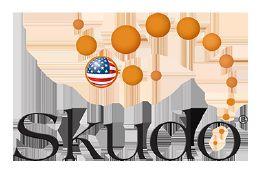
Skudo is a manufacturer of premium temporary surface protection products. Skudo’s mission is to develop solutions for the construction, flooring, and facility management industries to protect all manner of surfaces from damage during the construction process. Our existing range extends from patented adhering products to heavy duty loose lay products. These solutions are purpose-built to protect a variety of surfaces, including Concrete, Tile, Stone, Hardwood, Metal and Glass.



SkudoUSA.com @skudousa linkedin.com/company/skudo-usa-inc-
Founded in 1948, Construction Specialties (CS) is a specialty building products manufacturer. CS provides solutions to complex challenges that architects, designers, building owners, facility managers, and contractors face every day. Since inventing the extruded louver, CS has become a global leader in interior wall protection, impact-resistant doors, entrance flooring, expansion joint covers, architectural louvers and grilles, sun controls, specialty venting, cubicle curtains and tracks. CS draws upon extensive expertise to design custom, high-quality products—many of which are a part of the Cradle to Cradle Certified™ Products Program.

c-sgroup.com
Gordian is the leading provider of Building Intelligence Solutions for all phases of the building lifecycle, delivering unrivaled insights, robust technology and comprehensive expertise that fuel customers' success.



gordian.com
@Gordian
linkedin.com/company/the-gordian-group/ EDUCATION/PROFESSIONAL

As ISSA, the world’s leading trade association for the cleaning industry, celebrates its 100th anniversary, we are committed to changing the way the world views cleaning by giving members business tools needed to promote cleaning as an investment in human health, the environment & an improved bottom line. 10,500+ members include: distributors, manufacturers, manufacturer reps, wholesalers, building service contractors, in-house service providers, residential cleaners & associated service members.



issa.com
@issaworldwide
linkedin.com/company/issaworldwide/
At Staples, we have the experience and expertise to keep your facilities clean and safe. We have over 5000 professional-grade facilities and cleaning products in stock every day. And with next day delivery available to 98% of the US, you get what you need when you need it. Our experts can help you solve tough challenges too. We average over 15 years of facilities experience so you can be sure they understand your needs. At Staples, we’re experts in the facilities space.


staplesadvantage.com
linkedin.com/company/staples
AGF has manufactured code-compliant fire sprinkler products for over thirty years and specializes in products that provide solutions to property owners and facility managers. The new Flood Eliminator prevents catastrophic water damage due to a broken auxiliary drain. PURGENVENT™ and CORRINSITE™ monitor and help prevent corrosion in wet fire sprinkler systems and COLLECTANDRAIN® prevents accidental system trips, deter vandalism and help prevent system breakdowns as a result of freezeups in dry sprinkler systems. AGF's products are designed to minimize maintenance time and provide high-quality, reliable, and economical solutions for common issues in fire sprinkler systems.



agfmfg.com
@AGFmfg
linkedin.com/company/AGFManufacturing
inBiot is a technological company that develops smart solutions for monitoring and improving Indoor Air Quality for business. The inBiot solution adapts to the needs of each organization with its smart devices, cloud service, and professional after-sales support, ensuring tangible and lasting results to create healthy workspaces, reduce energy expenses, or achieve buildings certifications.



inbiot.es @inbiot_es linkedin.com/company/inbiot/
JANITORIAL PRODUCTS/SERVICES

As the fastest growing laundry equipment manufacturer in the North America, Yamamoto prides themselves on their DURABILITY, USABILITY, and LOW COST TO OWN. Founded by a former laundry technician, the Yamamoto equipment lines are designed specifically to address issues commonly faced with other brands. By over engineering key components we've been able to provide facility managers, equipment managers, laundry supervisors, and business owners a better alternative than ever before.

yamamoto-na.com
PRODUCTS/ACCESSORIES/SUPPLIES
The Vaask® touchless hand sanitizing fixture is available in customizable finishes and designed to complement the style of any space. It uses AC power or POE (power-over-ethernet) – no batteries required. Vaask is available recessed into the wall, in a wall-mounted stand or freestanding. Built to last, the U.S.-manufactured fixture is made of aluminum and backed by a 5-year warranty. The large-capacity, refillable cartridge is compatible with any alcoholbased sanitizer gel. Its PalmPilot® sensor accurately detects hands, eliminating mess. An array of LEDs both attract users and notify staff when it’s time to refill. Learn more at Vaask.com.



vaask.com @hello_vaask linkedin.com/company/vaask/
Eptura is a global worktech company that provides software solutions for workplaces, people, and assets that enable everyone to reach their full potential.



eptura.com @EpturaWork linkedin.com/company/Eptura

IFMA’s annual leadership conference underscores the importance of personal and professional balance
In April, attendees gathered in San Francisco, California, USA, for IFMA’s 2023 Facility Fusion Conference and Expo. With a focus on the power of persistence, the value of memory skills and the importance of happiness, this year’s conference was geared toward building on personal and professional strengths to set the example for others to follow.
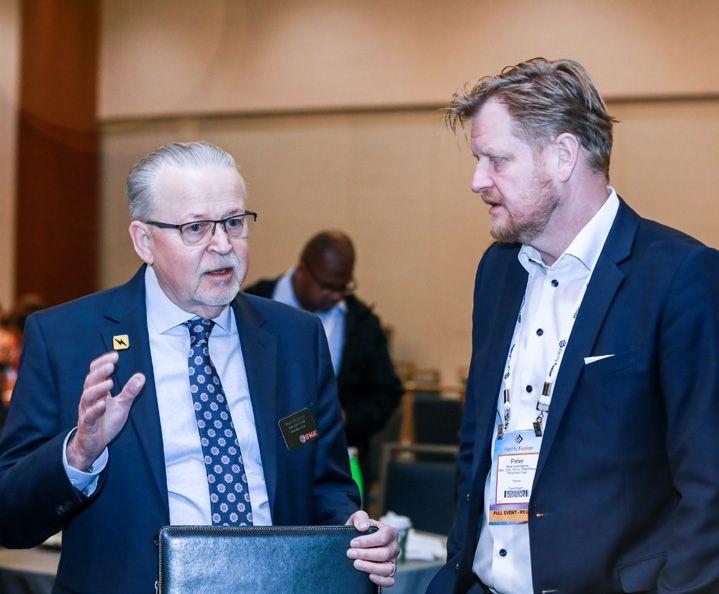

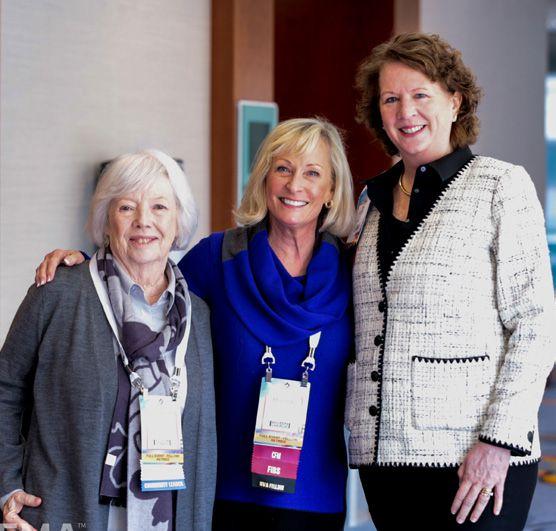

“Leading from the front is about leading by example — leading from a position of confidence and strength. We can reach a higher level of selfassuredness by doing what we’ve come here to do: talk, listen and learn from those facing the same unknowns, and working out exactly how and where to make an impact.”
–
IFMA Chair Laurie Gilmer, P.E., CFM, FMP, SFP, LEED AP
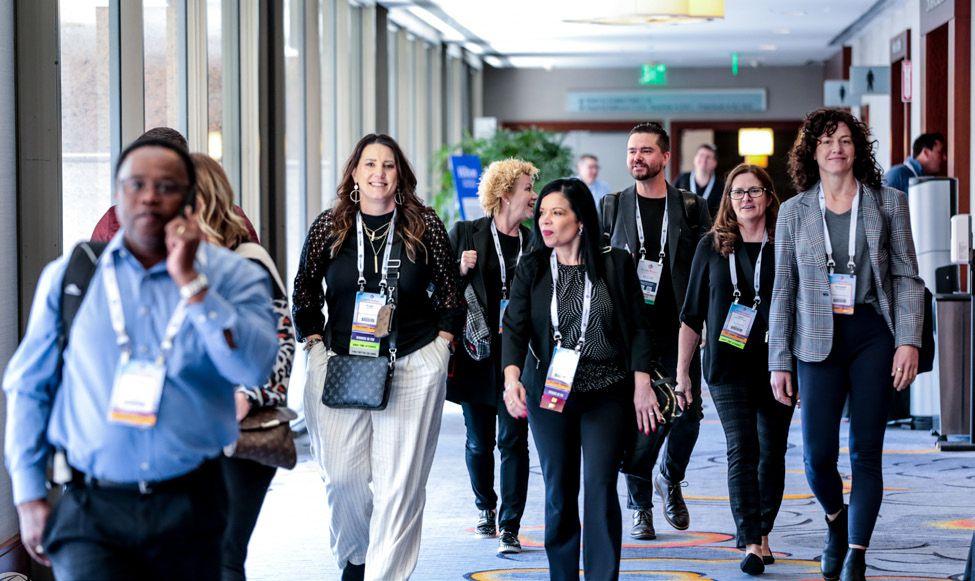
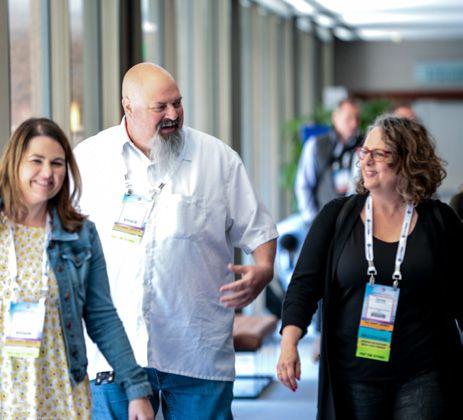
“For the past 13 years, IFMA has designed Facility Fusion programming around the skills, principles and practices essential to effective leadership,” said IFMA President & CEO Don Gilpin. “As facility management’s direct influence on organizational performance, experience and resilience has heightened, so has the need for FM professionals to own their role in leading initiatives for improvement and growth.”
Facility Fusion offered attendees a chance to focus on areas of immediate relevance
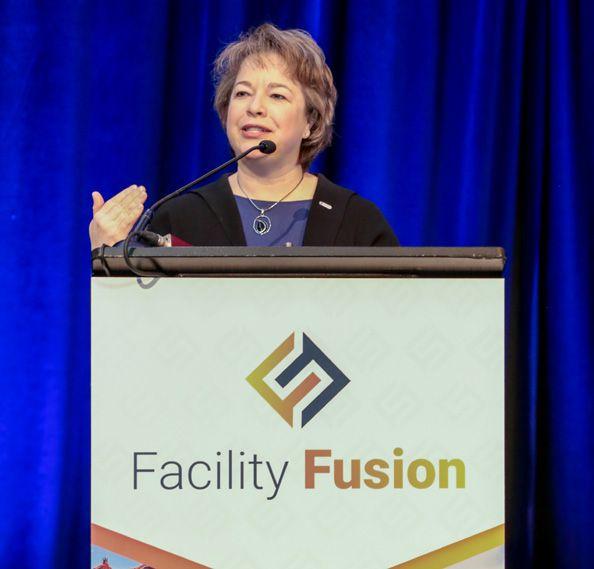
and concern, helping them clear hurdles — such as their own health and wellness — that may be preventing them from successfully transitioning as trends dictate.
In her opening remarks on the morning of April 11, IFMA Chair Laurie Gilmer stressed that FMs must also be able to benefit from the experiences they’re being asked to create. “FMs are more challenged than ever to prepare for anything; but this heightened state of alertness can take its toll,” said Gilmer. “The amount, and scope, of information we’re assimilating, and expected to respond to or act on, is massive. Mental overload can impair our ability to make decisions – more crucially, good decisions…a top value we bring to our organizations. It’s important for FMs to add our own well-being to that expanding list of priorities.”

“In finding ways to enhance our well-being and the wellness of others, we can start with the words we hear from our fellow FMs every day: ‘I’m here for you. How can I help?’ These words are magic…and the more we say them — to our team, our CEO, customers, neighbors — the more willing people will be to follow our lead.”
– Laurie Gilmer


U.S. Memory Champion, best-selling author and memory-andmind coach to notable celebrities, politicians, professional athletes and high-powered executives, Chester Santos opened with an address, followed by an interactive memory skills training session. Santos asked the audience to close their eyes and visualize specific details about people in photos shown on the screens. This was aimed at helping attendees associate images with names.
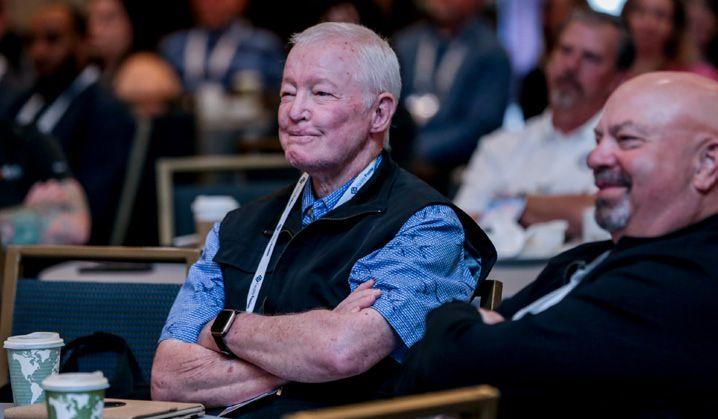
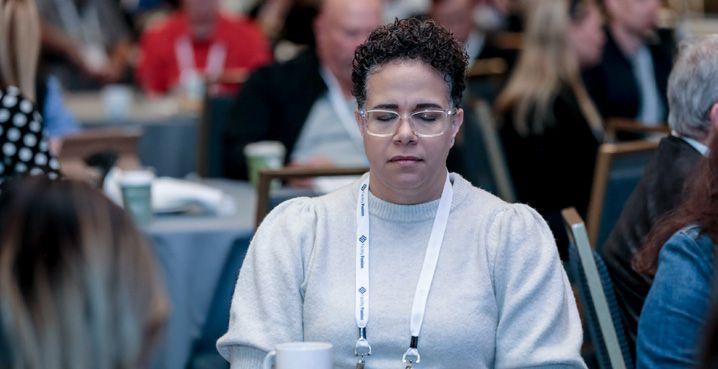

Santos asked some attendees to recite a list of numbers forward and backward, applying his tips on memorization.

In addition to educational sessions, new Learning Labs were wellreceived by attendees, who appreciated one-on-one time with peers and topic experts to talk through trends and challenges and take action plans back to their facilities.
During the luncheon, Bill Conley, CFM, FMP, SFP, IFMA Fellow was honored as a long-time contributor to IFMA’s FMJ. Writing his first article for FMJ in 1995, Conley has received IFMA’s Distinguished Author award five times. Laurie Gilmer and FMJ Editor-in-Chief Bobby Vasquez surprised Conley with recognition for his 100th article in the March/April issue of the magazine. “Bill has the unique ability to entertain while educating,” said Gilmer. “He describes ordinary things in extraordinary ways.”
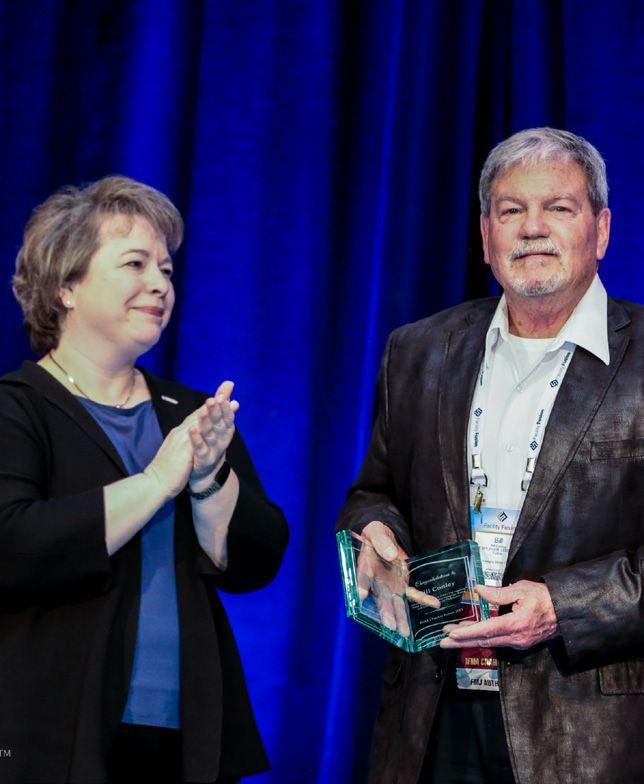
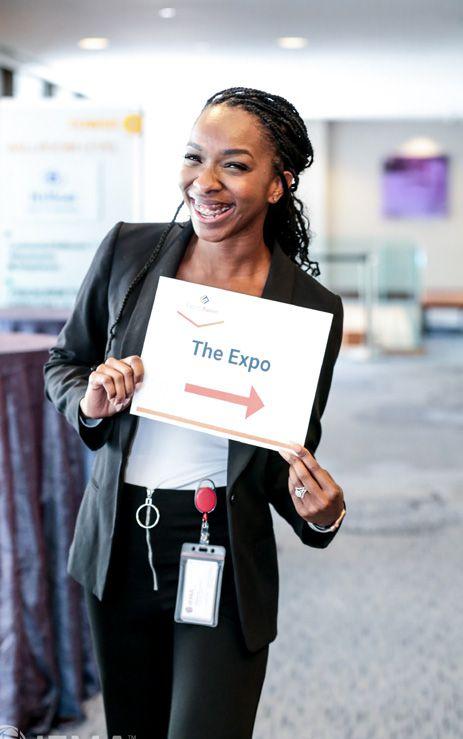

“As an author, [Bill Conley] has helped our industry comprehend sustainable tools and practices — breaking it down for us as simply a better way to run our buildings. Through humor, metaphor, Bob Dylan lyrics, historical perspective and straightforward explanation, he renders technical information and abstract concepts into intelligible, achievable strategies for business efficiency and growth.”
– Laurie Gilmer
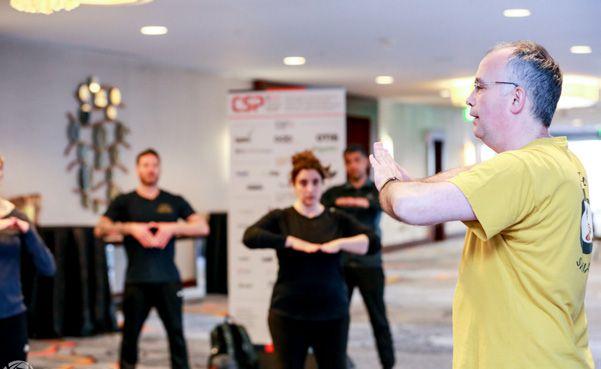
The expo brought solution-seekers together with industry-leading solution-providers. The expo scavenger hunt, cash drops and free professional headshots made time on the expo floor even more worthwhile (and fun!).
Day two began with a Qi Gong wellness exercise — a traditional Chinese healing practice that integrates movement, breathing and meditation for developing mind, body and spirit.

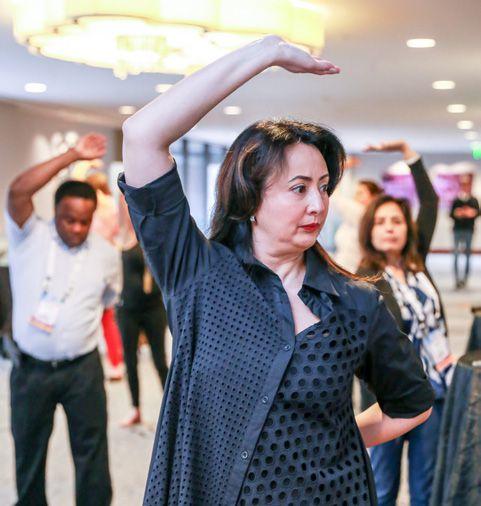
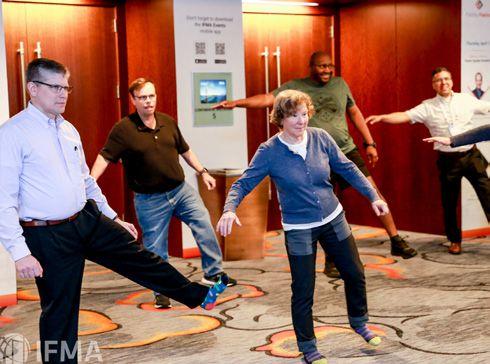



IFMA First Vice Chair Dean Stanberry welcomed attendees to the final day of the event. Before introducing power speaker Scott Lesnick, Stanberry addressed new areas the FM industry is advancing toward, requiring a working knowledge in the short term, and a higher level of proficiency in the future, namely: the circular economy, climate change, ESG reporting, proptech and workplace wellness/well-being.
“IFMA recently established the Emerging Topics Working Group … it’s our task to identify the topics everyone is talking about, but no one has a handle on. By
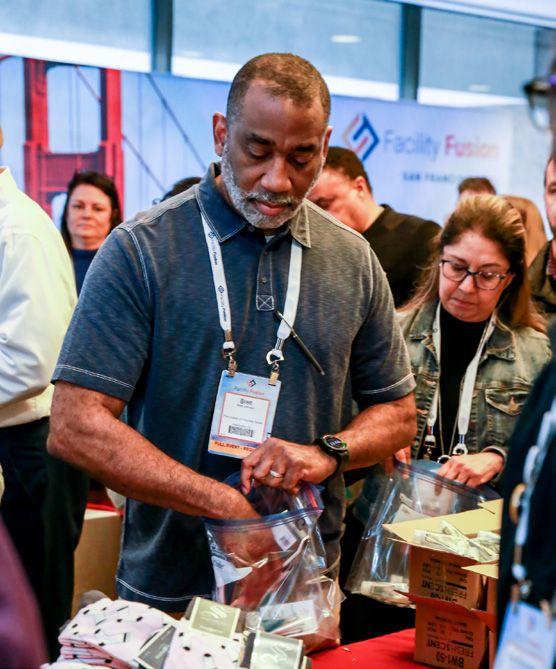
To assist Project Homeless Connect, 75 attendees filled 1,000 hygiene kits. The San Francisco-based organization connects the local homeless population with the care they need to move forward. Through IFMA Cares, attendees completed in one hour what it would take Project Homeless Connect’s small volunteer base three months to finish.
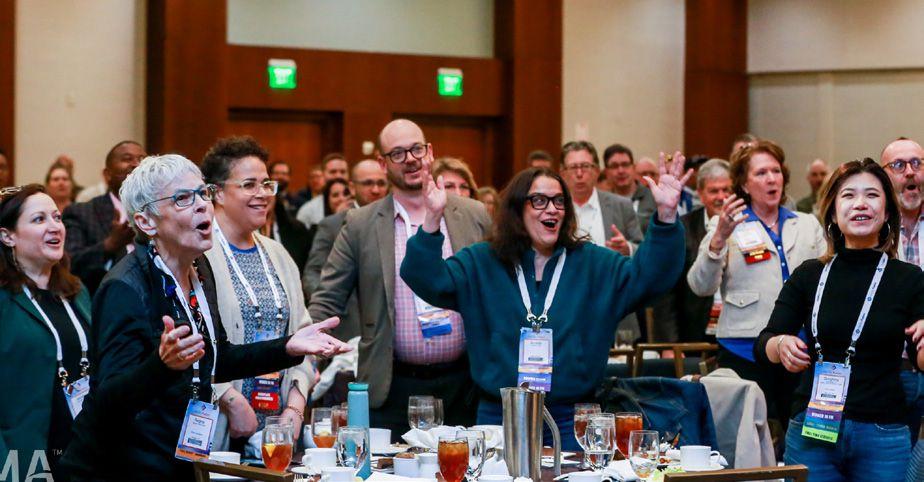
pinpointing these evolving topics, trends and activities, IFMA can focus our knowledge sharing efforts and develop and enhance resources to get us over learning curves and into recognizable terrain,” said Stanberry.
Following learning labs and sessions, Laurie Gilmer returned to the stage to introduce happiness expert Jon Nielsen, whose message is that work should be something we enjoy, not endure.
“As long as we remember that this is what we like about being an FM — why we got into the profession and why we stay — then
we can find our joy, tap into the happiness factor, using it to bolster ourselves and inspire others,” said Gilmer. “Happiness at work shouldn’t be a new concept, but we can be thankful that creating a culture of positivity has found its place among strategies for higher productivity. This has cleared the path for us to do what we’ve always known is best — providing safe, healthy, diverse and inclusive spaces, where everyone feels welcome, recognized and respected.” FMJ














Grow your career and expand your FM skills with IFMA’s Knowledge
Access the largest curated library of FM content, created and reviewed by industry experts from the global FM community.

• Articles
• Videos
• Podcasts
• Research
• And much more!



Scan the QR code to learn more.




























